Bhutan
Paro, Phobjikha Valley, Punakha, Gasa, Thimphu
Our 10 Day Itinerary
Although Bhutan is relatively unknown to many, it has always been a bucket list trip for us. Its hidden Bhuddist temples and monasteries, deep in the cloudy mountain valleys of the Himalayas, gives Bhutan a sense of mystery to travelers. It has really only been open to tourism since the late 1970’s, and many choose to forego the challenges associated with getting there.
While we usually shy away from taking part in tours and other guide-led adventures, we discovered that in order to visit Bhutan, you can’t really escape it. However, there is a plus side... you can book a private tour with just yourself or your travel partner. In doing so, you will get your own guide and driver, and can have much more control over your itinerary. We went this route, using the assistance of a travel agent to secure the driver and guide, book hotels (which we also were able to weigh in on), and craft our perfect itinerary. We are so excited to introduce the country of Bhutan to you as we travel there for 7 nights!
Flight from Denver to Toronto, to Delhi, to Paro
Paro Tsechu Festival, Rinpung Dzong and Drakha Cliff Temples
Tiger's Nest Monastery, Kichu Lhakhang Temple, Archery, Festival Grounds
Dochu La pass, Lungchutse Temple hike, Phobjikha Valley
Phobjikha Valley, Black Neck Crane center, Chimi Lhakhang, Sangchhen Dorji Louendrup Nunnery
Hike to Khamsum Yulley Namgyel Choten, Punakha Dzong, local lunch, PoChu River rafting
Drive to Gasa, Gasa Dzong, World Peace prayer, Gasa Hot Springs, farmhouse stay
Zorig Chusum art institute, Royal Takin Preserve, Giant Buddha, shopping
Boudhanath Stupa, Bhaktapur, Swayambhu (the Monkey Temple), shopping and dinner

Currency, Language and Religion
The Kingdom of Bhutan, the Land of the Thunder Dragon, is a small country in South Asia, squeezed between India and China. Bhutan uses the Indian rupee the same as their own Bhutanese Ngultrum 1:1. We had heard that ATMs could be unreliable in Bhutan, so we planned to take out the rupees in India. Bhutan has a close relationship with India, and interestingly, produces a lot of electricty that they sell back to India, one of their main sources of income in their economy, along with agriculture and forestry.
The official language of Bhutan is called Dzongkha, a tonal sounding language, and is a part of the Tibetan family of languages. Dzongkha uses script style Tibetan alphabet in written language. Our tour guide was able to speak English without any difficulty, but our driver was still learning English and practiced with us quite timidly. They often carried on conversations with each other in the car in their native language. The vast majority of Bhutanese people practice Buddhism, roughly 75%, with the specific branch being Mahayana Buddhism. The remaining quarter of Bhutanese people are mostly Hindu. One of the most important religious figures to the Bhutanese is Guru Rinpoche, who is also said to be the second buddha, who traveled from India to Tibet, and then later Bhutan, where he introduced Buddhism. There are endless amounts of stories and legends involving Guru Rinpoche that we heard about during our time there.
Day 1 & 2: Travel from home to Bhutan
To begin, we had a very long way to travel from home, roughly a 36 hour journey. We booked 3 separate flight tickets for this journey. We departed home around 9am on Thursday morning to catch our flight from Denver to Toronto. The Air Canada flight was fairly quick and easy, and we soon landed in Canada. We had a separate ticket also with Air Canada and were lucky enough to pass a ticketing counter before processing immigration, so we were able to avoid the immigration process. Because of our business class ticket, we were able to access one of the nicest lounges and spent our several hours of downtime in the Signature lounge. You could order dinner or even have a full sit down meal with drinks, or, eat from their buffet, all included. We soon boarded our 15 hour flight to Delhi where we relaxed and got as much sleep as we could for our long journey. Traveling in business on a 15 hour flight is a must for us and enabled us to recover fairly quickly for what was to come.
In the Delhi airport, we had to go through Indian immigration, since our flight to Bhutan was also not on the same ticket. We opted to apply for the 1 year Indian visa, as we plan to return later this year if possible (see our Northern India blog here!). After immigration, we struggled with several ATMs and finally were able to withdraw some cash. We decided to enter the departures area upstairs to see if we might be able to check in even though doubtful considering it was only 9:30pm and our flight was departing at 4:10am, on a small airline Druk Air. There are only two airlines that fly into Bhutan, with Druk Air being the larger of the two. Pilots need to be specially trained in order to land at the Paro airport, which lies in a valley in between the mountains. Once in the departures hall, we discovered that we would not be able to check in until 4 hours before (which really ended up being 3 hours before). And we were also trapped in in the departures hall. Indian security guards would not even let us go outside, or return to the lower level where all of the food was. We reluctantly sat and waited and finally checked in, went through exit immigration for our short time in India, and waited in an extremely long security line, using up our time until about 2:30am. We visited our favorite Delhi airport restaurant, Dilli Streat, conveniently open at all hours, since the Delhi airport doesn’t sleep, and had dinner before going to our boarding area around 3am.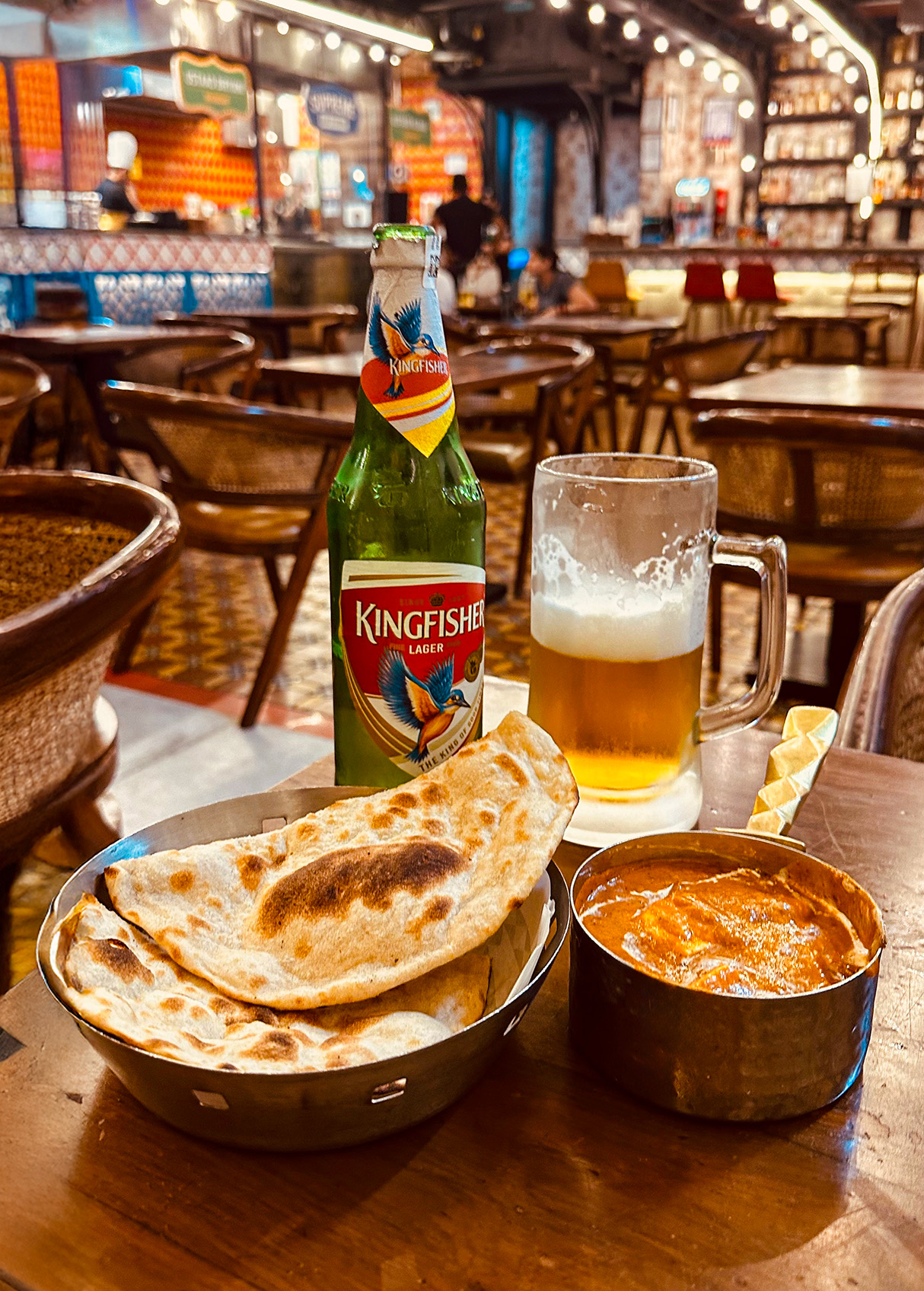
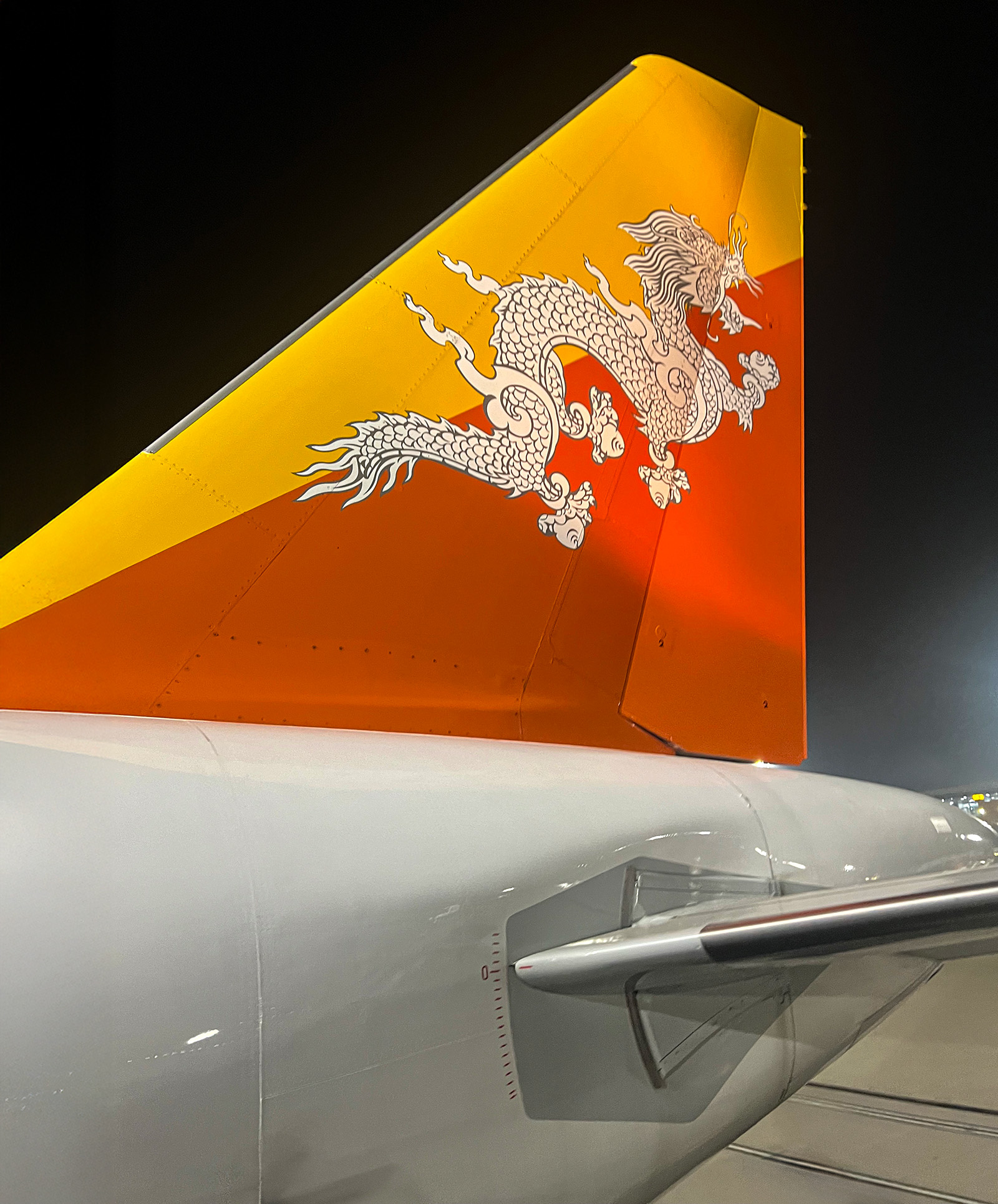
Back to Top
Link to Photo Gallery

Day 3: Paro
On our flight over, we tried to get some sleep but ended up being awake most of the time. We were lucky enough to have a clear view of Mt Everest from one side of the plane. Finally, we landed in Paro. It was one of the most intricately decorated airports we had ever seen. Even the immigration hall was decorated with hand painted wood. On the other side of immigration, we were met by our driver, Tashi, and guide, Ugyen, amongst all of the other drivers and guides. We drove straight to the hotel (the Gawaling Hotel) where our room was not ready yet, however, they let us use another room to rest for a bit and take a shower after the long travel. Then, we had a quick breakfast before heading out on our day of adventure.
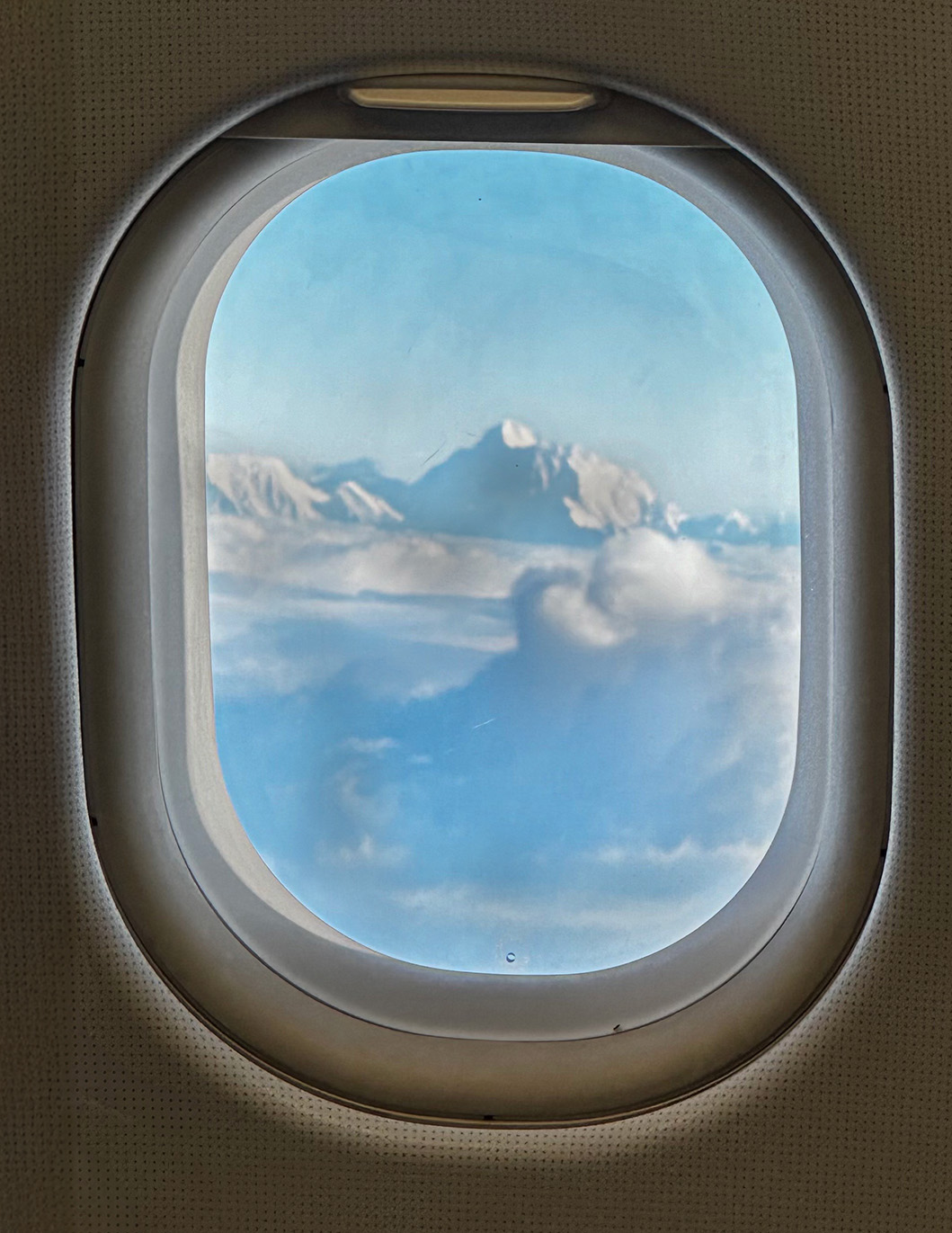
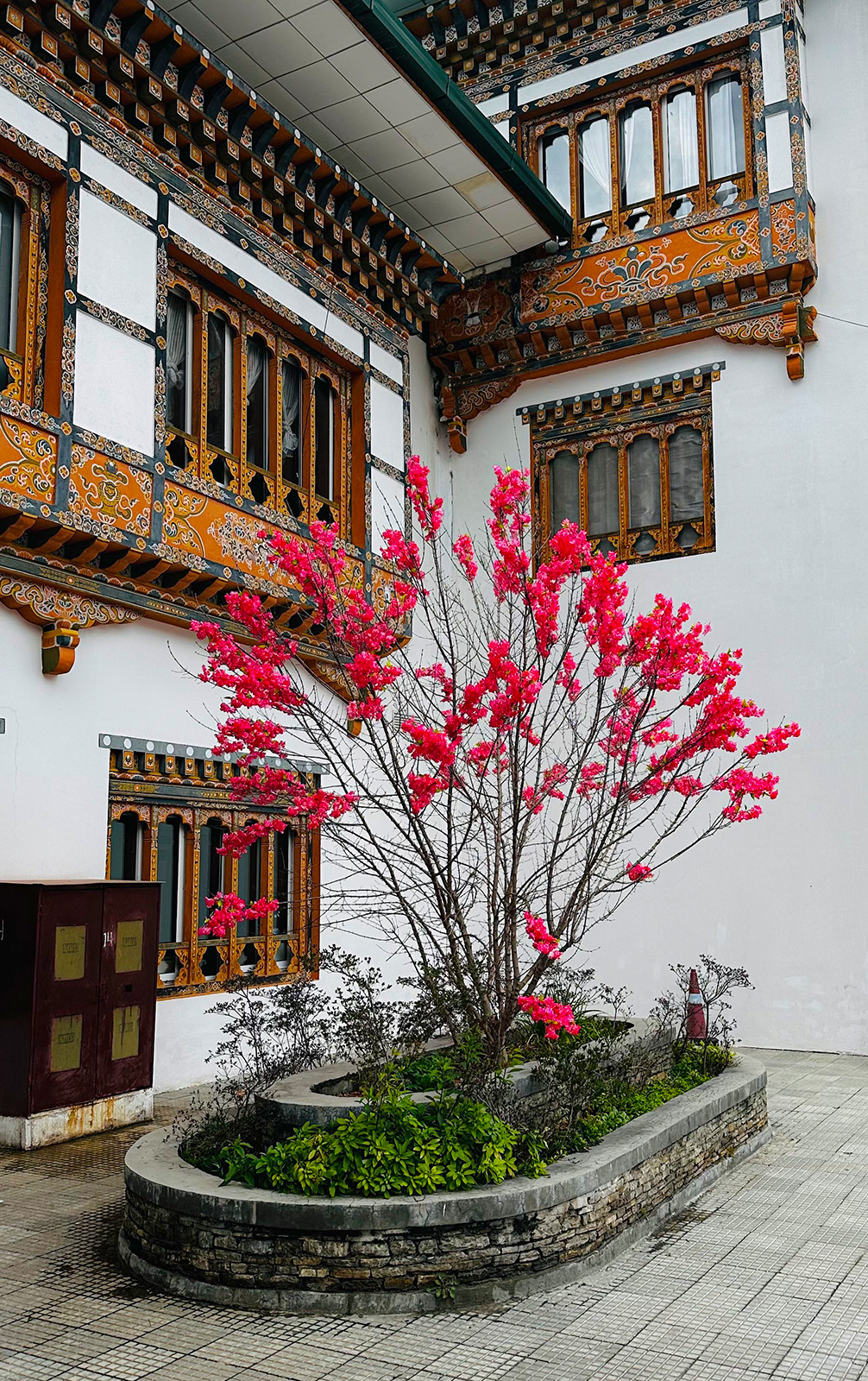
Paro Tsechu Festival and Rinpung Dzong
Our first stop was the Paro Tsechu, or festival, that happens once a year. We were lucky enough to be here during that time and arranged our itinerary to make sure we had time to attend. The festival is held to honor the Guru Rinpoche, who is a famous Guru of the Buddha and brought Buddhism to Bhutan. The festival was crowded with locals who come and spend the day watching the dances and activities. We squeezed in to the crowded seating, with the help of a nice local who noticed us struggling to see, and watched for several hours. Many of the dances were performed in elaborate costumes and masks.
After the festival, we toured the nearby Paro Rinpung Dzong, or fortress. This enormous building can’t be missed as you can see it from many places in the area. We enjoyed exploring the Dzong and learning a lot about the history and also about Buddhism from our guide. It was time for lunch and we drove off to the restaurant but unfortunately we were disappointed to find that they had brought us to a tourist buffet with a few other tourists. The buffet was nothing exciting and seemed to have been sitting around. We let our guide know that we were more interested in trying the local places and not just eating with other tourists at a buffet. We hope to be able to do that on following days, but for now we ate at the buffet.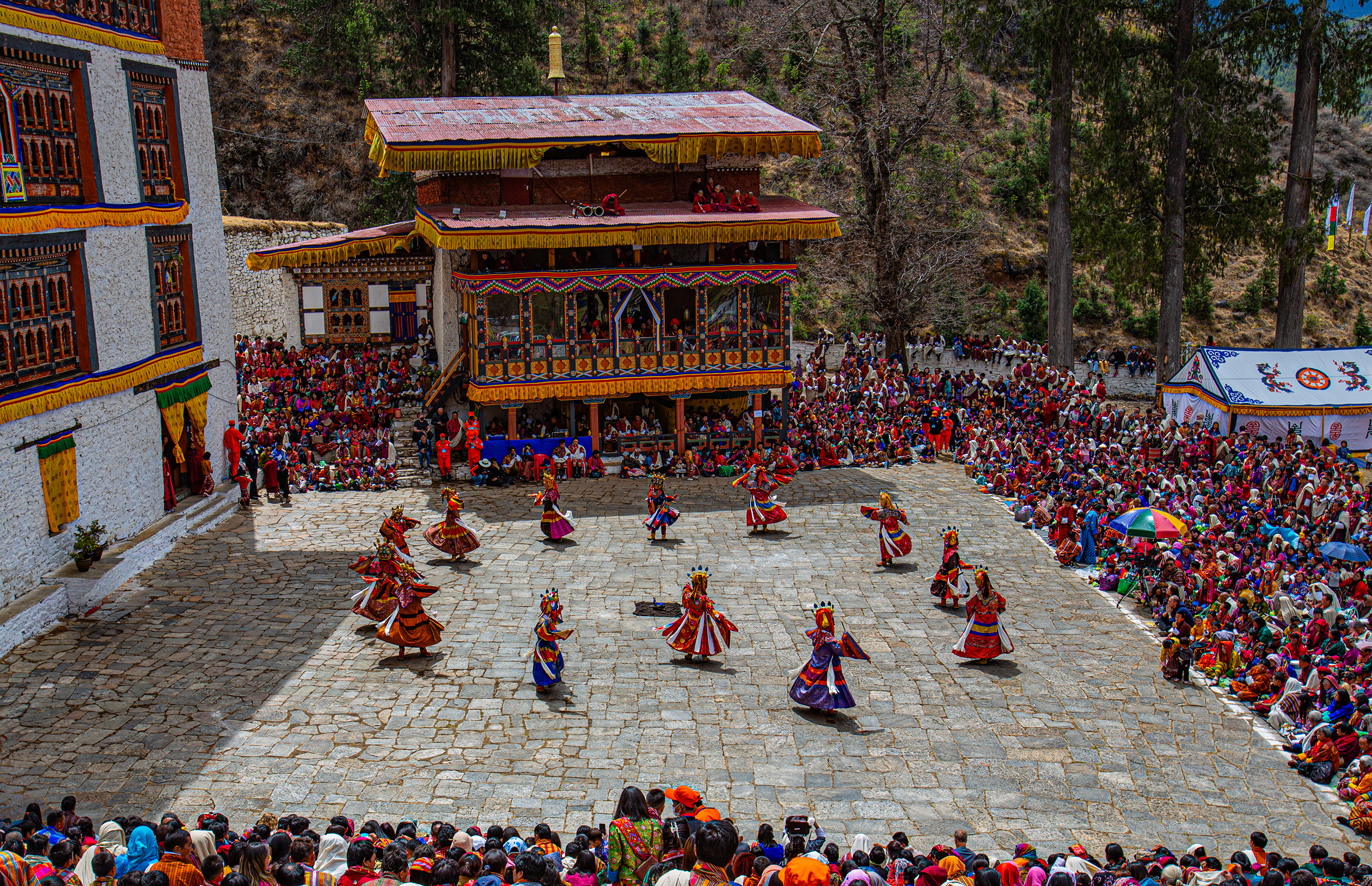
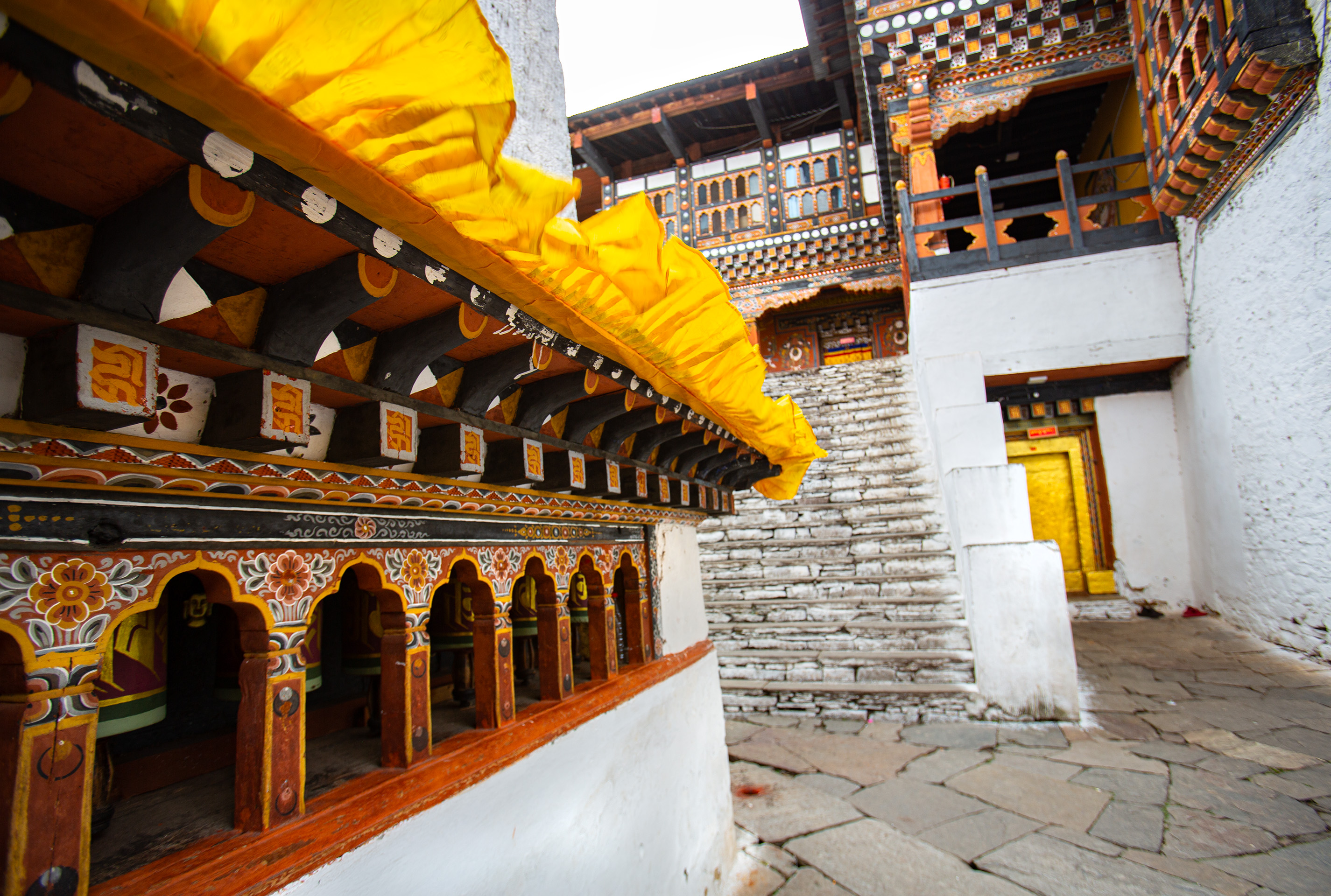
Drakha Cliff Temples and Monestary
After lunch, we were starting to get quite tired. We fought off sleepiness as we drove up winding roads to visit the Drakha cliff temples and monestary. The car couldn’t make it all the way up the road due to mud, but that gave us an opportunity to enjoy walking the rest of the way, waking us up a bit. The temples are looking down on the whole Paro valley and very scenic next to some large rock walls. It was definitely worth the drive up to see them.
After a quick stop to see Main Street, we returned to the hotel where we were given the key to our new room, much bigger and we think one of the nicest rooms in the hotel! After a quick dinner at the hotel, we were completely exhausted from then being up for more than 24 hours, so went right to sleep so we could be ready for another busy day tomorrow.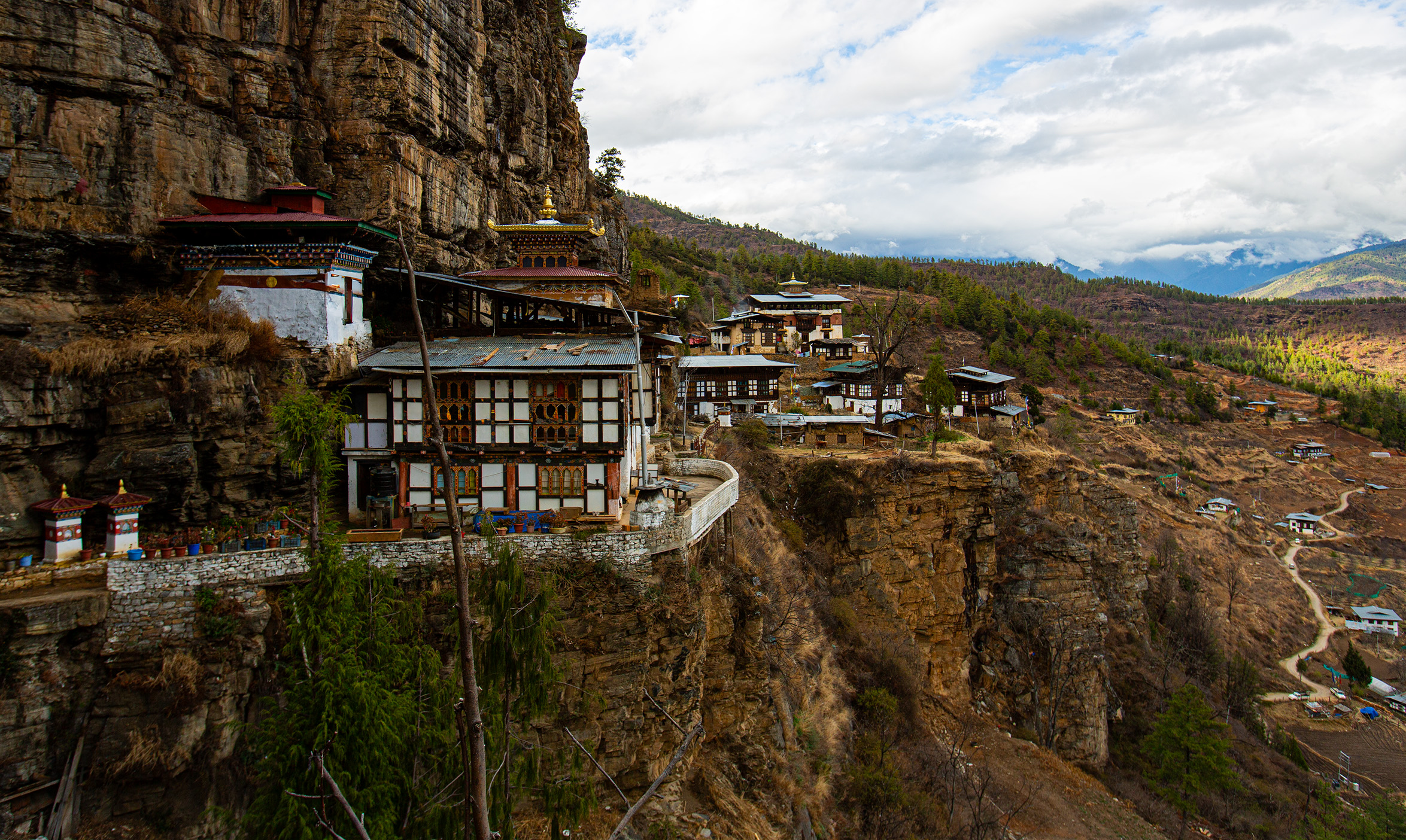
Back to Top
Link to Photo Gallery

Day 4: Paro and Tiger's Nest
Today we had a big day, the hike to the Tiger’s Nest Monastery. This hike is at the top of the "things to do" list for anyone visiting Bhutan. Fortunately, we woke to a warm and sunny day today. We got started with a breakfast at the hotel, then were picked up around 8am by our driver. On the way to the Tiger’s Nest, we picked up our guide in his home town. The drive was fairly short and soon we were winding up the road that leads to the parking. We could soon tell that it was going to be a crowded place to be. Not only were there a lot of tourists, but many locals were also visiting since the Paro festival lasts 5 days and many are on holiday from work or come from out of town.
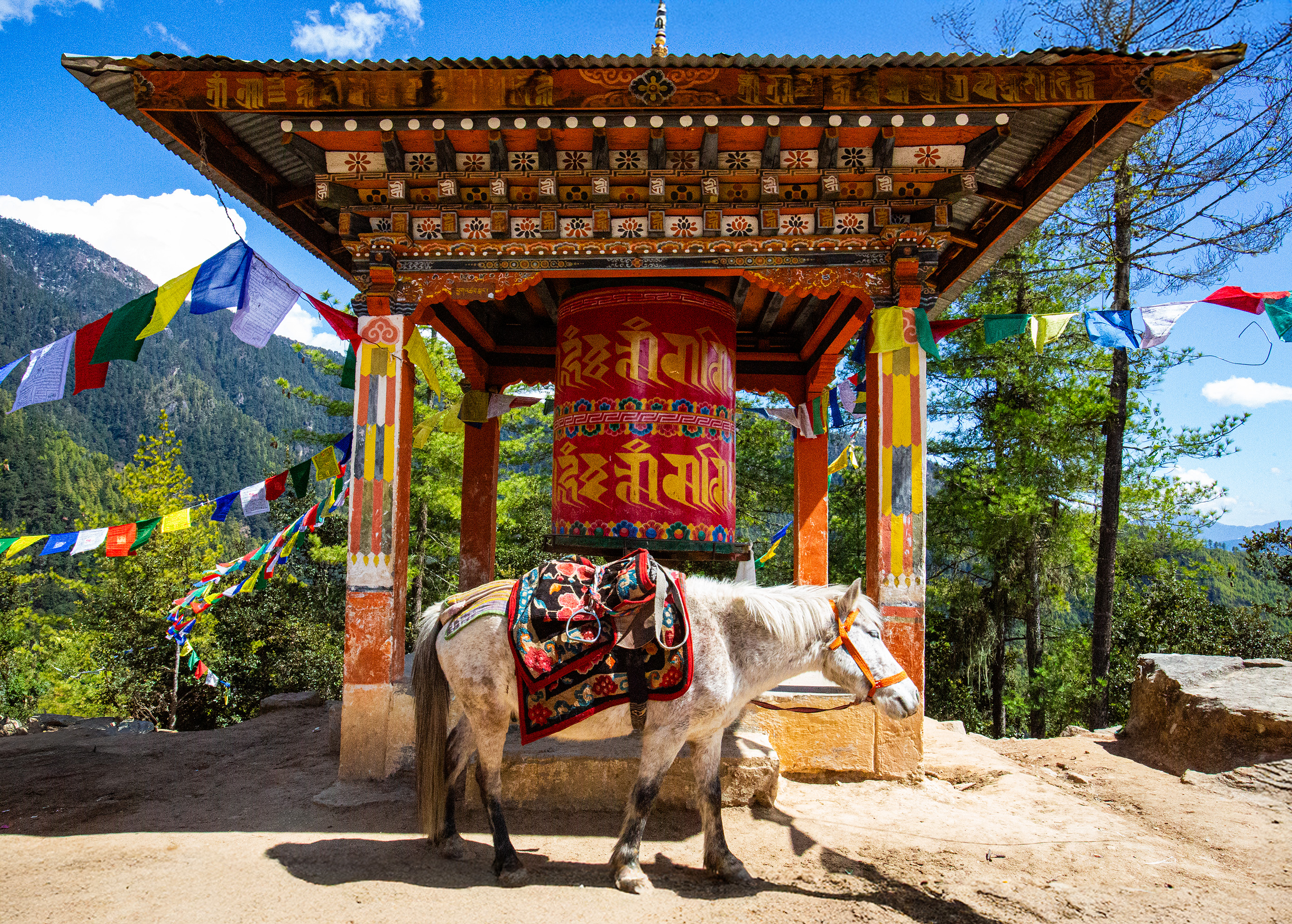
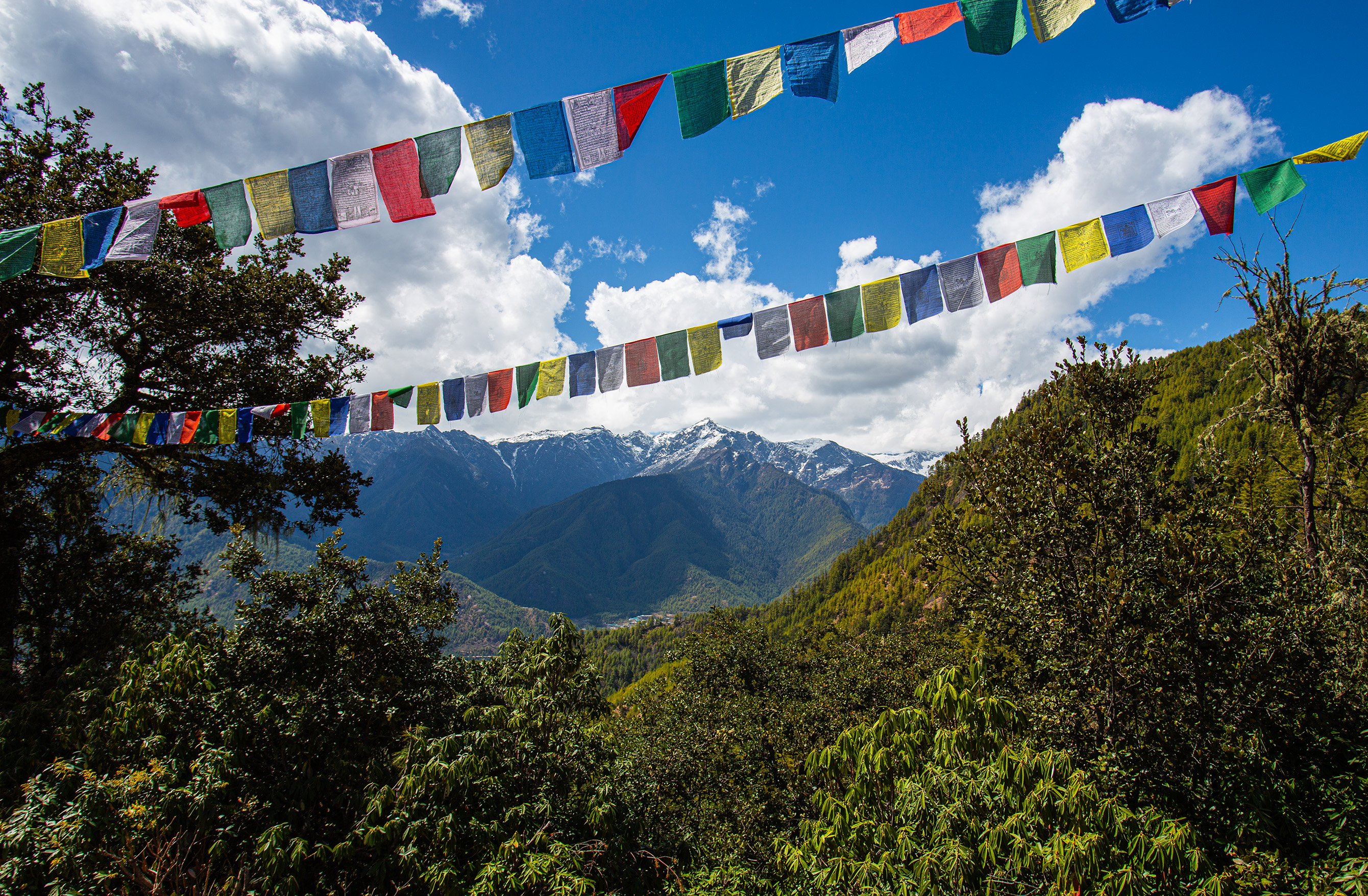
Tiger's Nest Monastery
Probably the biggest attraction in the area, the Tiger's Nest! The trail was about 3 miles each way, and mostly dirt with rocks or built in steps. We had to stop and take pictures every so often as the monastery got closer and closer. We were amazed that all sorts of fitness levels seemed to be making the trek. By the way, if you want to ride on a horse you can do so to about the half way point and then have to walk from there.
We also saw several other smaller buildings, prayer wheels and waterfalls along the hike. The hike brings you first up to a viewpoint that is slightly above the Tiger’s Nest, and then down into the ravine where you start making the final hike up the stairs. We heard several people trying to count the stairs as they went and there seemed to be about 200ish on the way there and 300ish on the way back to the viewpoint. We were rewarded for all our hard work by a long visit to the insides of the temples and monastery. There are no photographs allowed inside, in fact, we had to lock up everything we had with us in a locker before going in. Our guide took his time explaining many different parts of Buddhism to us in a variety of the different temples, some very large and some small. Inside the temples, you need to remove your shoes and wear appropriate clothing. We began to realize that our guide is truly an expert on all things Buddhism. He could tell you the names of anything depicted on the walls or in the temples. We also learned a lot about the various offerings that are placed inside the temples for the gods. One of the highlights was climbing down several wooden ladders into a dark cave crevice to see a small shrine set up for the Tigress who was said to be the Guru’s wive who hid out inside the cave and emerged as a tiger. On our way back, we stopped at the 1/2 way point cafe where we had a lunch with all of the other tourists. Again it was a buffet but much fresher this time and at least we had an amazing view to enjoy as we sat outside eating.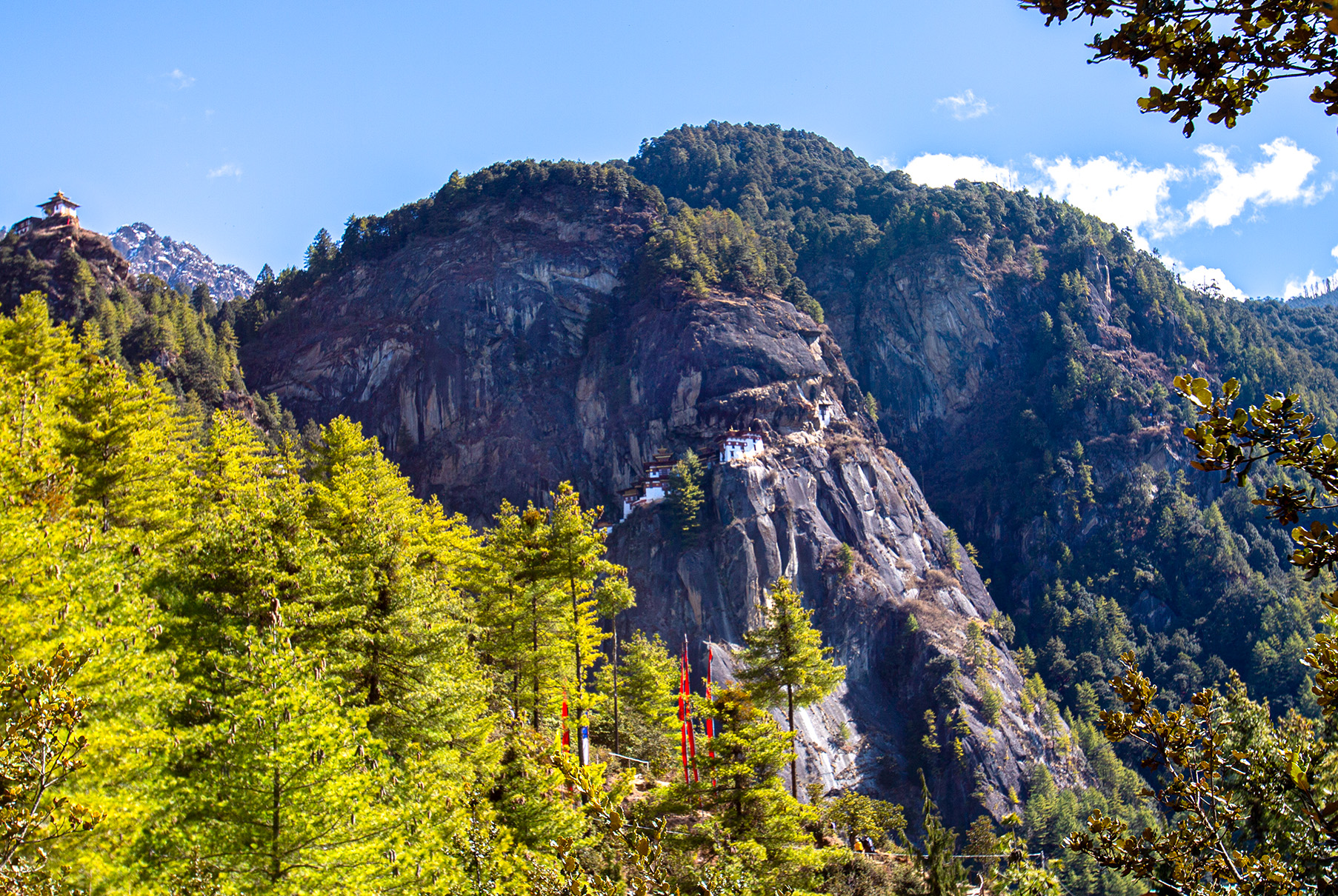
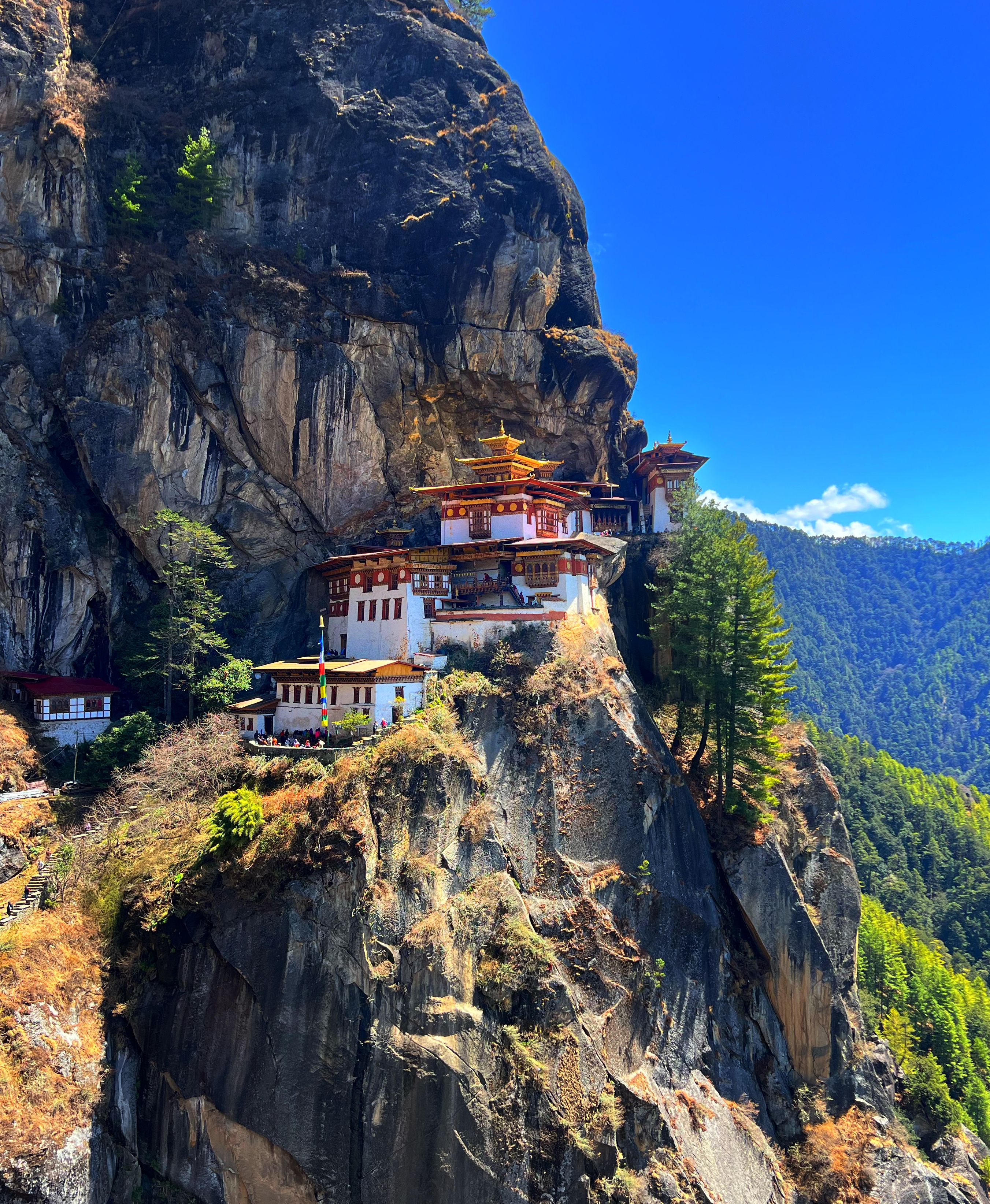
Kichu Lhakhang Temple and Archery viewing
After that, we drove back near Paro and stopped at the Kichu Lhakhang temple, one of the very first Buddhist temples in Bhutan. It is said to have been built in the 7th century along with a total of 108 temples that were all built on the exact same day. The temple was indeed a special place and we enjoyed it. There were also several beautiful blooming trees filled with cherry and peach blossoms that made the grounds extra photogenic.
As archery is the national sport, we passed by many archery fields near the road. We stopped at one where a group of men were having their own match. They were using modern day bows and arrows, but we were amazed at the far distance these guys could shoot with great accuracy!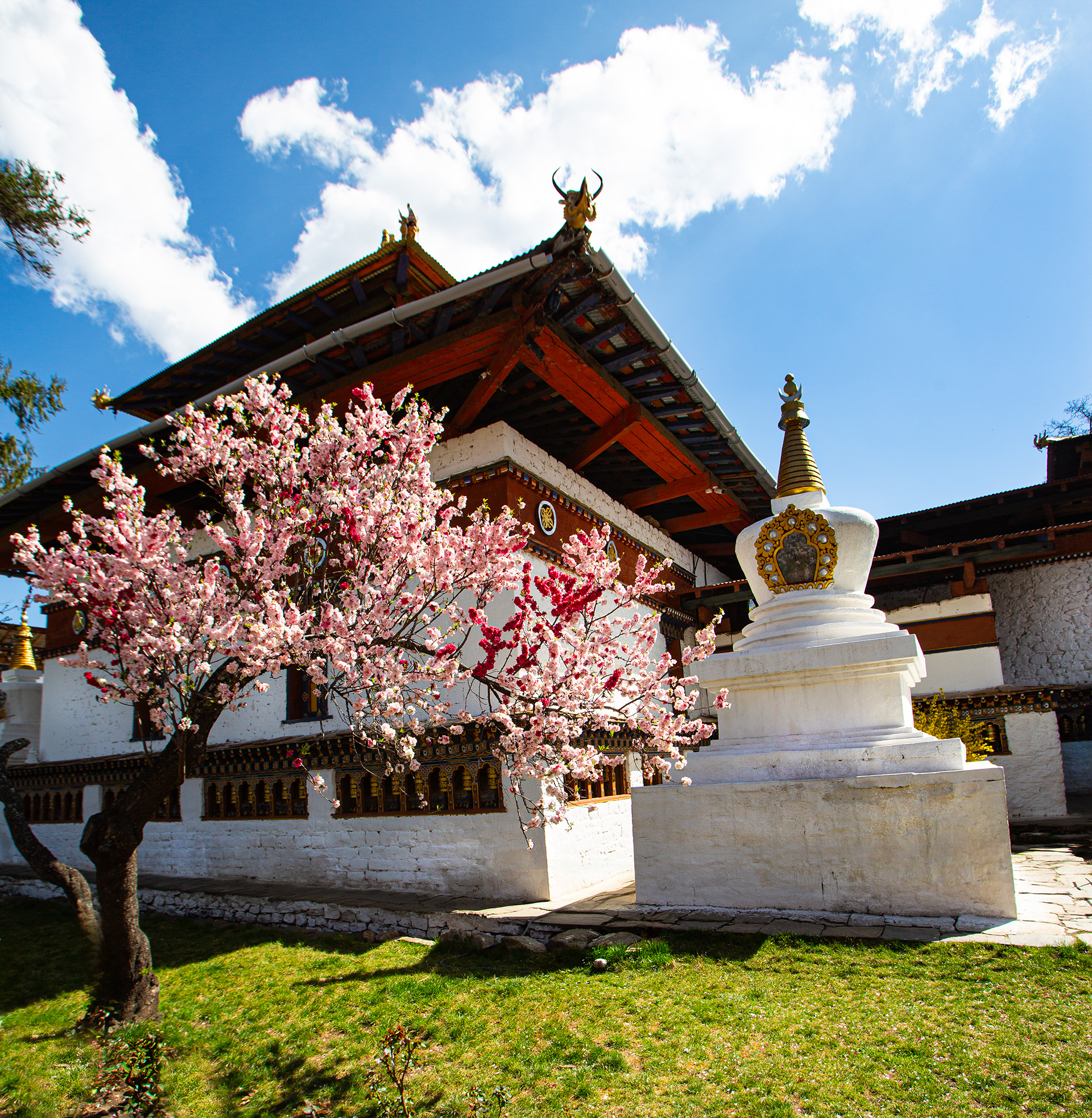
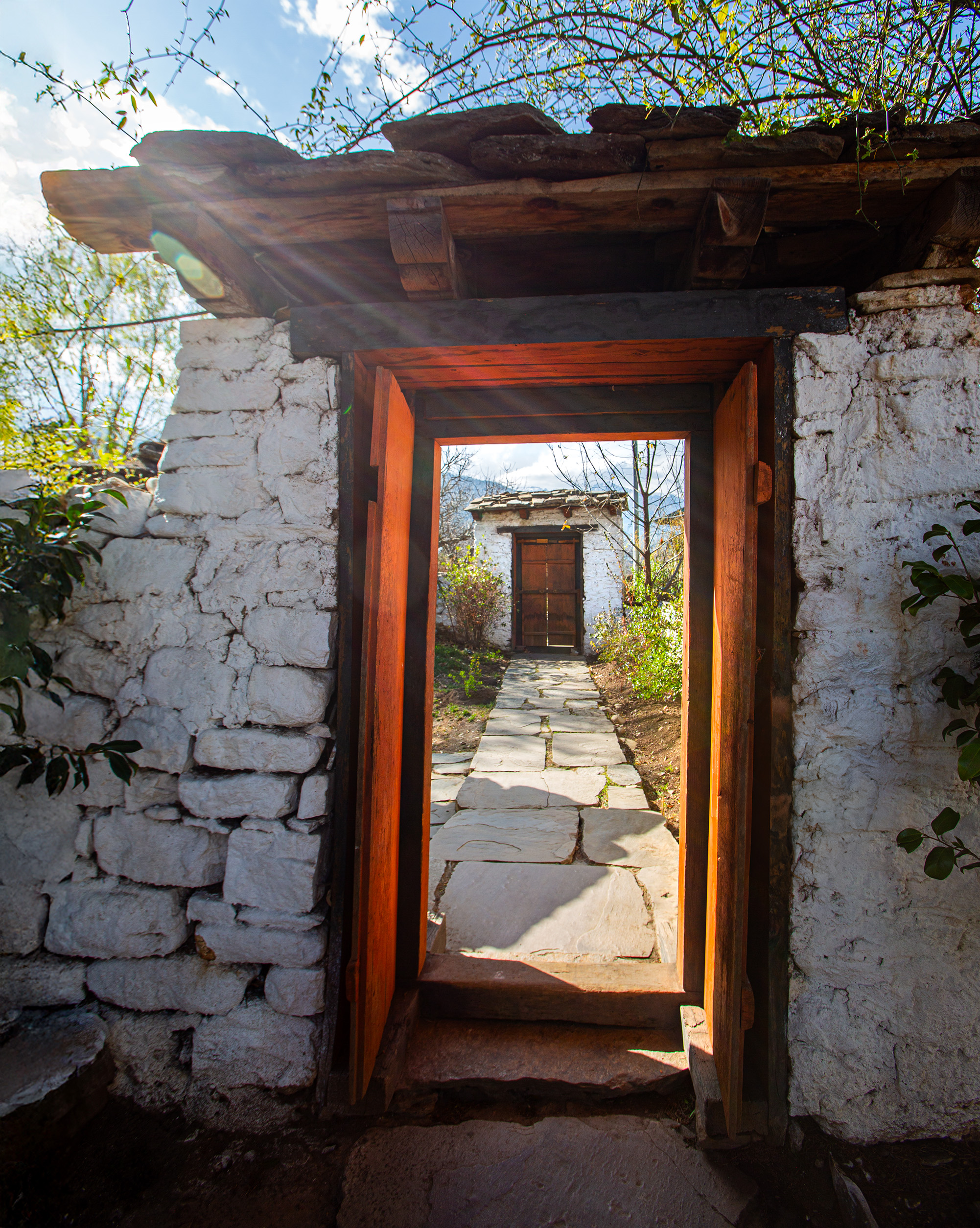
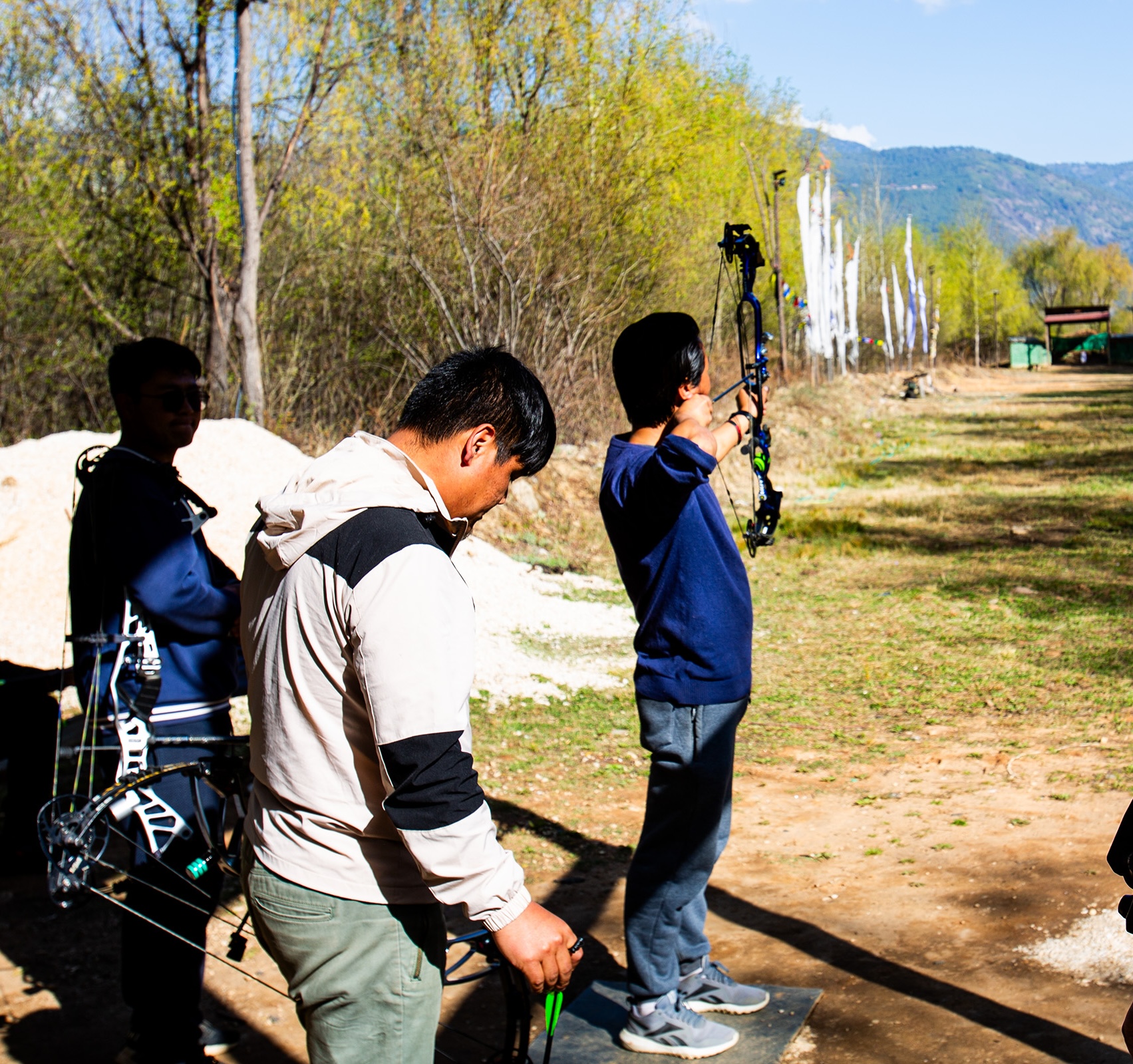
Paro Festival Grounds and Main Street
We also stopped at the separate festival grounds that held tents put in places for carnival like games, selling of random items, and food stalls. It was a busy and noisy place to walk around. Finally, we headed back into town where we revisited many of the shops we had looked at the night before. There were quite a few souvenir stores in town, more than we expected. A lot of them selling mainly the same types of items. There were a lot of Bhuddist items such as statues, singing bowls, bracelets, and paintings. We chose a special singing bowl and bracelet to bring home.
Tired from the day, we headed back to the hotel where we opted to order from their menu instead of the buffet. We tried several Indian dishes, for only about $7, so agreed that this was much better than the buffet which almost always seems to consist of rice, steamed veggies, some sort of potato, and maybe a chicken dish. Tomorrow, we have a long drive, as we leave the Paro area to explore more of Bhutan.
Back to Top
Link to Photo Gallery

Day 5: Drive to Phobjikha Valley
We had a lot of driving ahead of us today as we drove from Paro all the way across two mountain passes to the Phobjikha Valley. We drove along the road to Thimphu, the capital city, where the roads were continuously lined with flags that had been put there for the arrival of the Indian Prime Minister, Modi.
On our way up the first pass, we stopped at a small farm stand where they were selling local produce. We were curious about the yak cheese cubes that were drying on strands of string. Our guide helped us purchase a few pieces to try. What we didn’t know is that you can’t really chew them at all. They have been so dehydrated that they are almost as hard as a rock. You’re supposed to suck on them and over many hours maybe they will break up. We didn’t last very long trying that method and soon abandoned the cheese.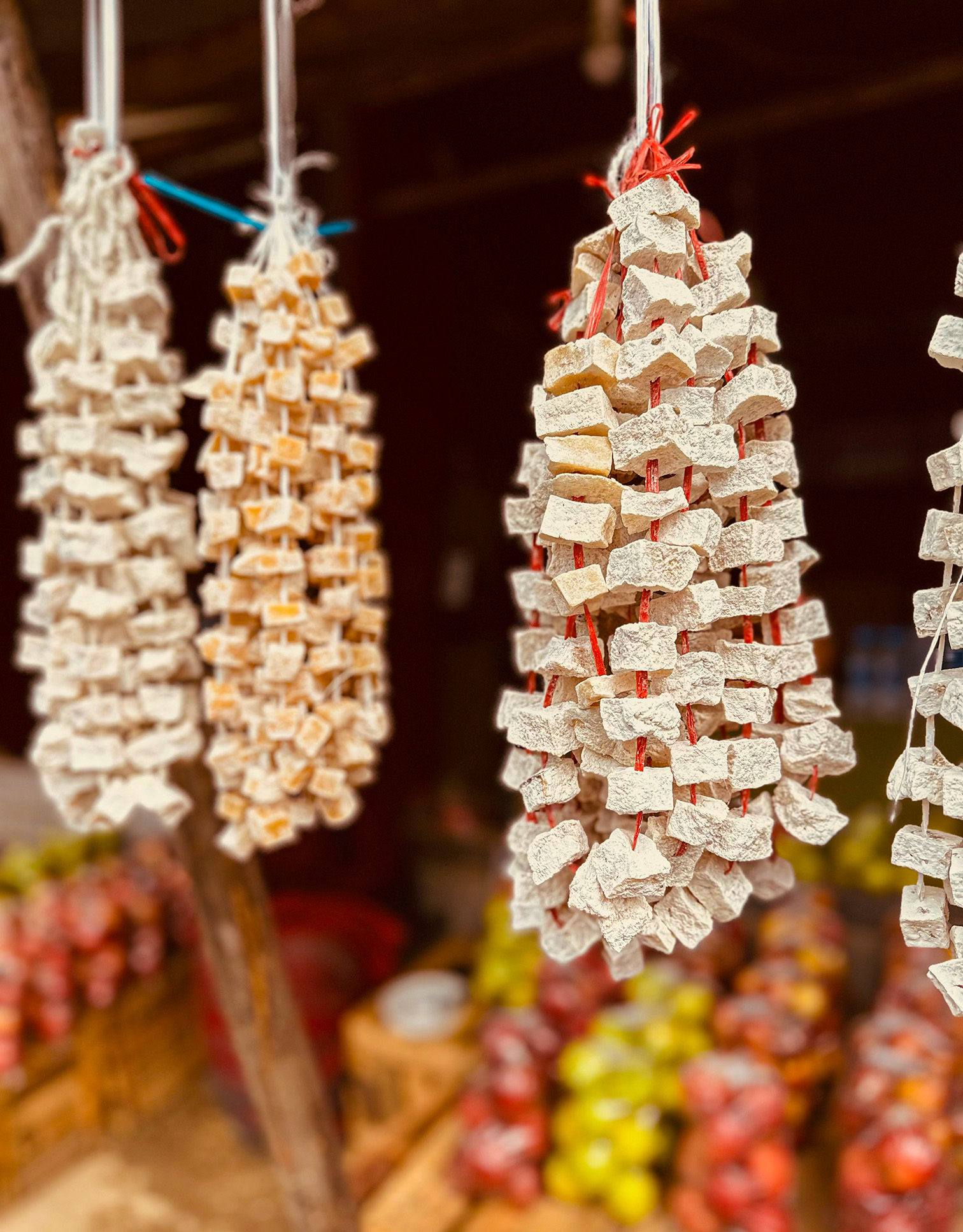
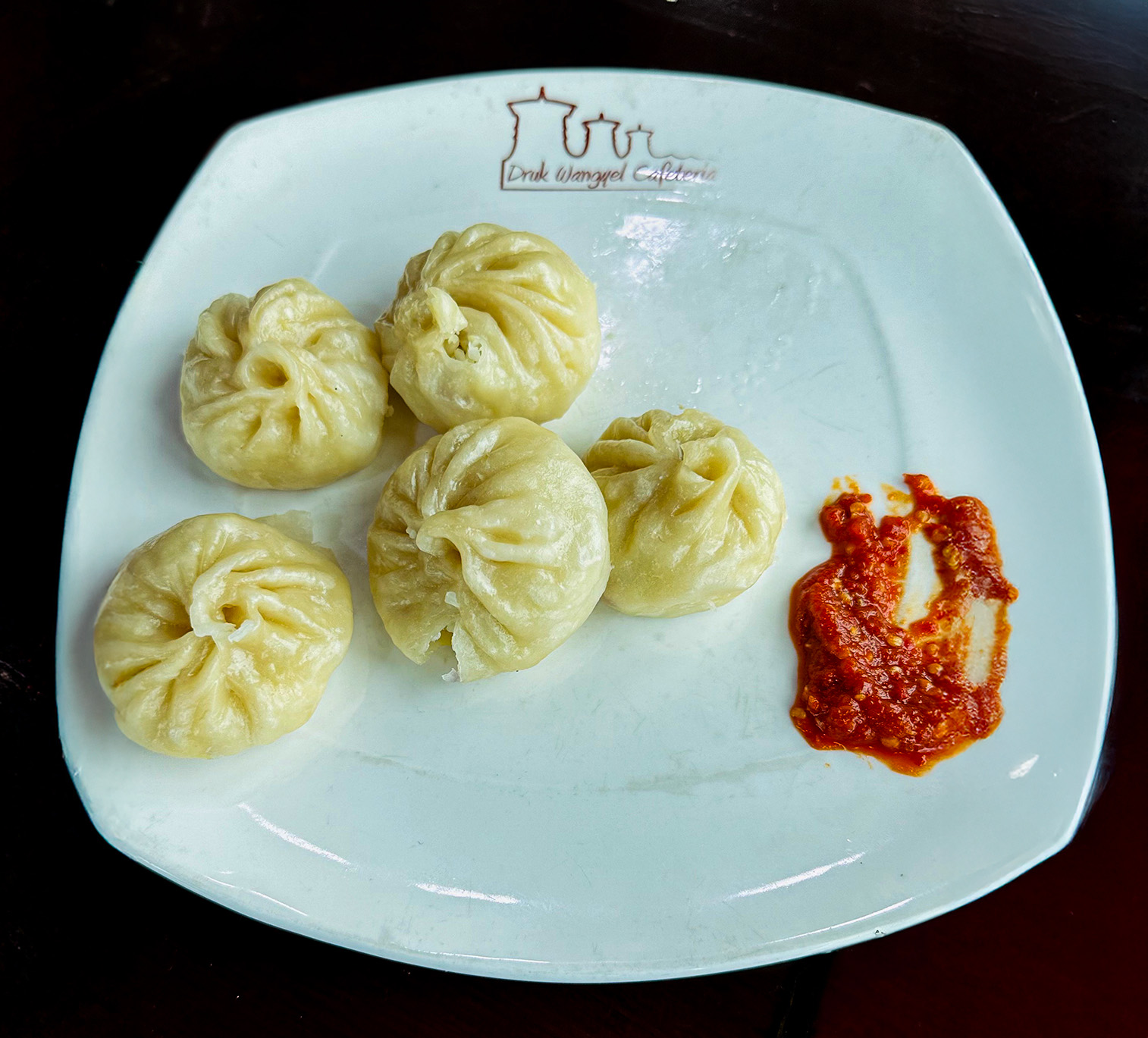
Dochu La pass
One of several major passes on the roads of Bhutan, Dochu La pass is situated at 3050 meters high. It was quite foggy, so we didn’t get to enjoy the view of the many mountains you can see from there. We are hoping perhaps on the way back it will be a clear day. At the pass, there are also 108 stupas that you can walk around, created as a memorial for Bhutanese soldiers who lost their lives. We found the stupas to be quite scenic in the fog, and enjoyed walking through them and taking a lot of pictures. We had a quick bite to eat in the cafe there, tea and some cheese momos with chili paste that were quite delicious.
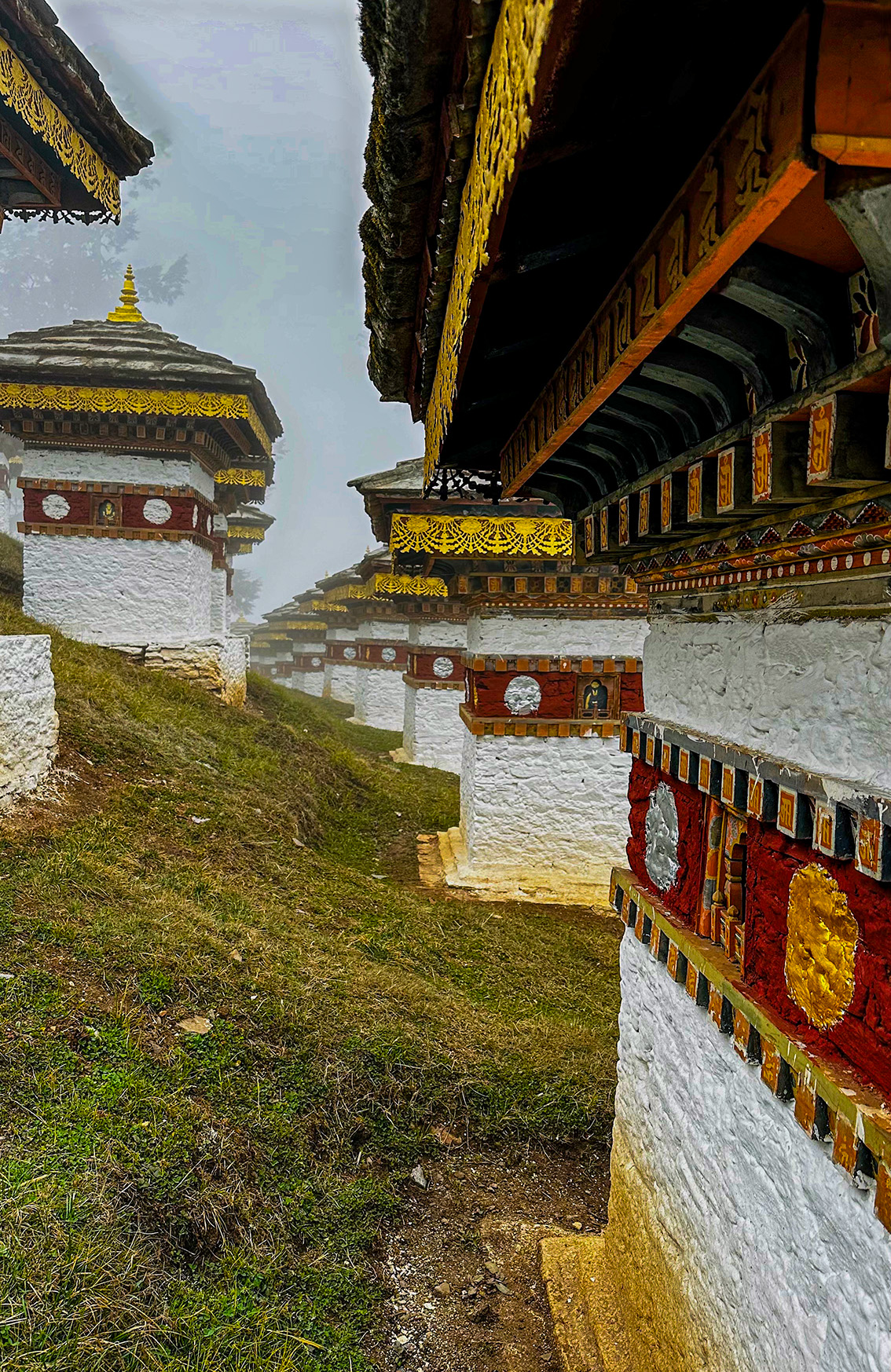
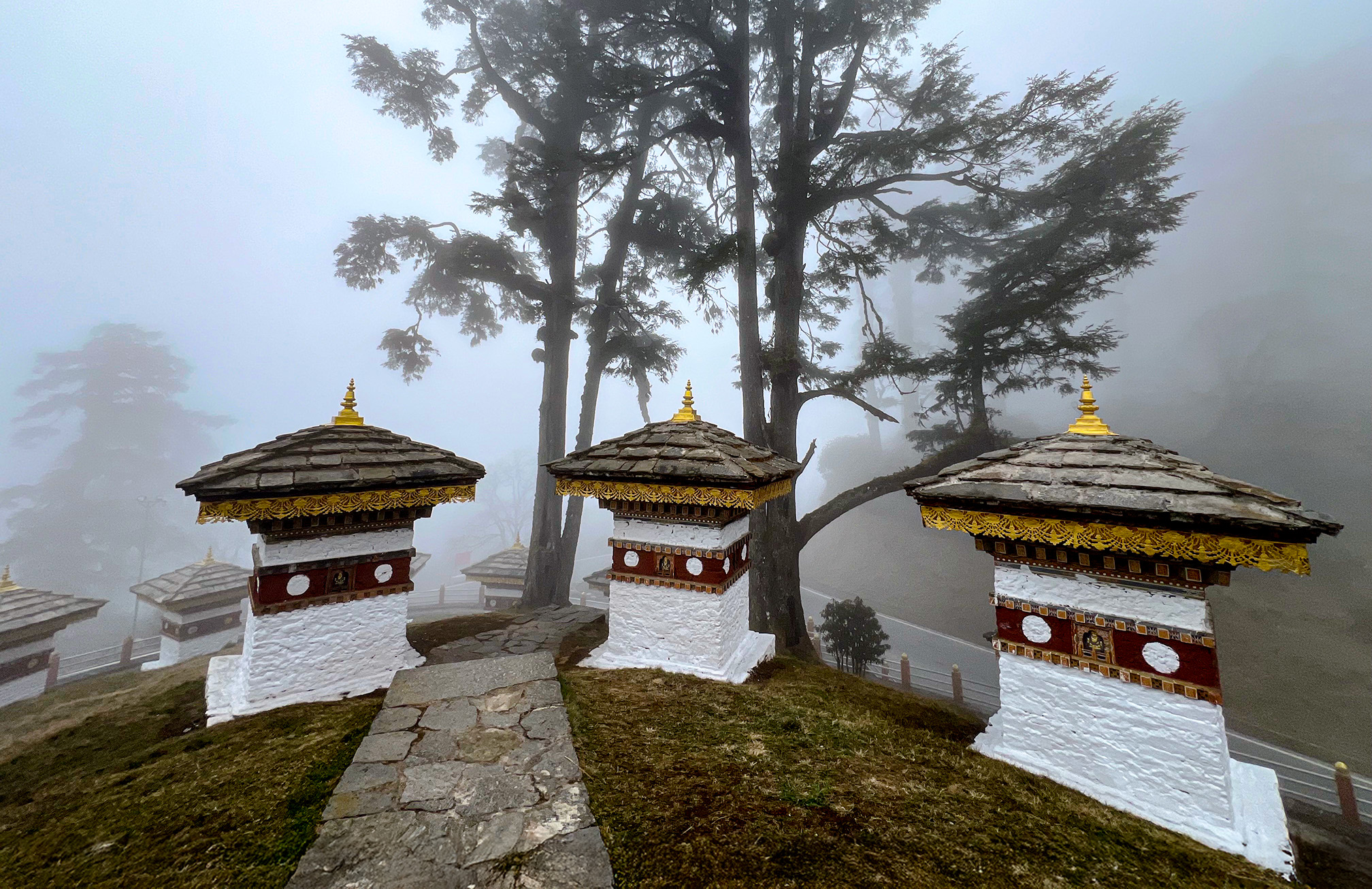
Hike to Lungchutse Temple
The hike to Lungchutse Temple is an optional activity near the Dochu La Pass area that we really enjoyed. The hike started from the road near the pass and went up about 1500ft elevation gain over roughly 2 miles. Even though the weather was foggy and a bit rainy, we enjoyed the hike through the forest where all of the trees were covered in moss and dripping with lichen. There were also some fragrant flowering bushes and rhodedendron trees that were blooming. As we climbed, the weather got colder and soon began to lightly rain. We were glad we had been prepared with extra layers.
When we reached the Lungchutse Temple at the top, the rain turned to a downpour of sleet. We could imagine on a clear day, that the monks who live there would have an amazing view of the Himilayan mountains. We visited the inside of the temple, which was also kept quite cold. Then, headed back down the trail where we gradually warmed up. The trail was decorated with a large amount of prayer flags, which made hiking there extra scenic.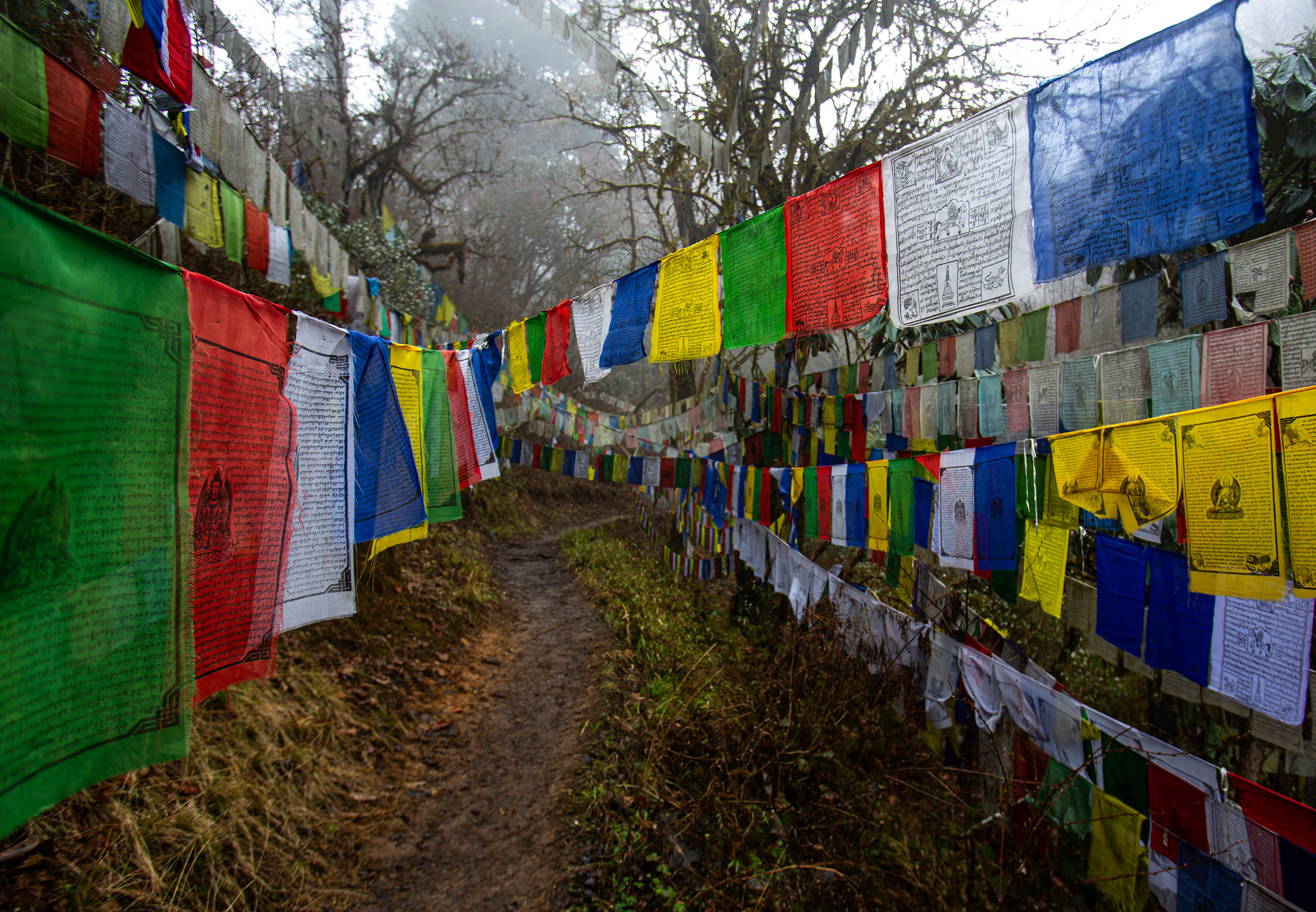
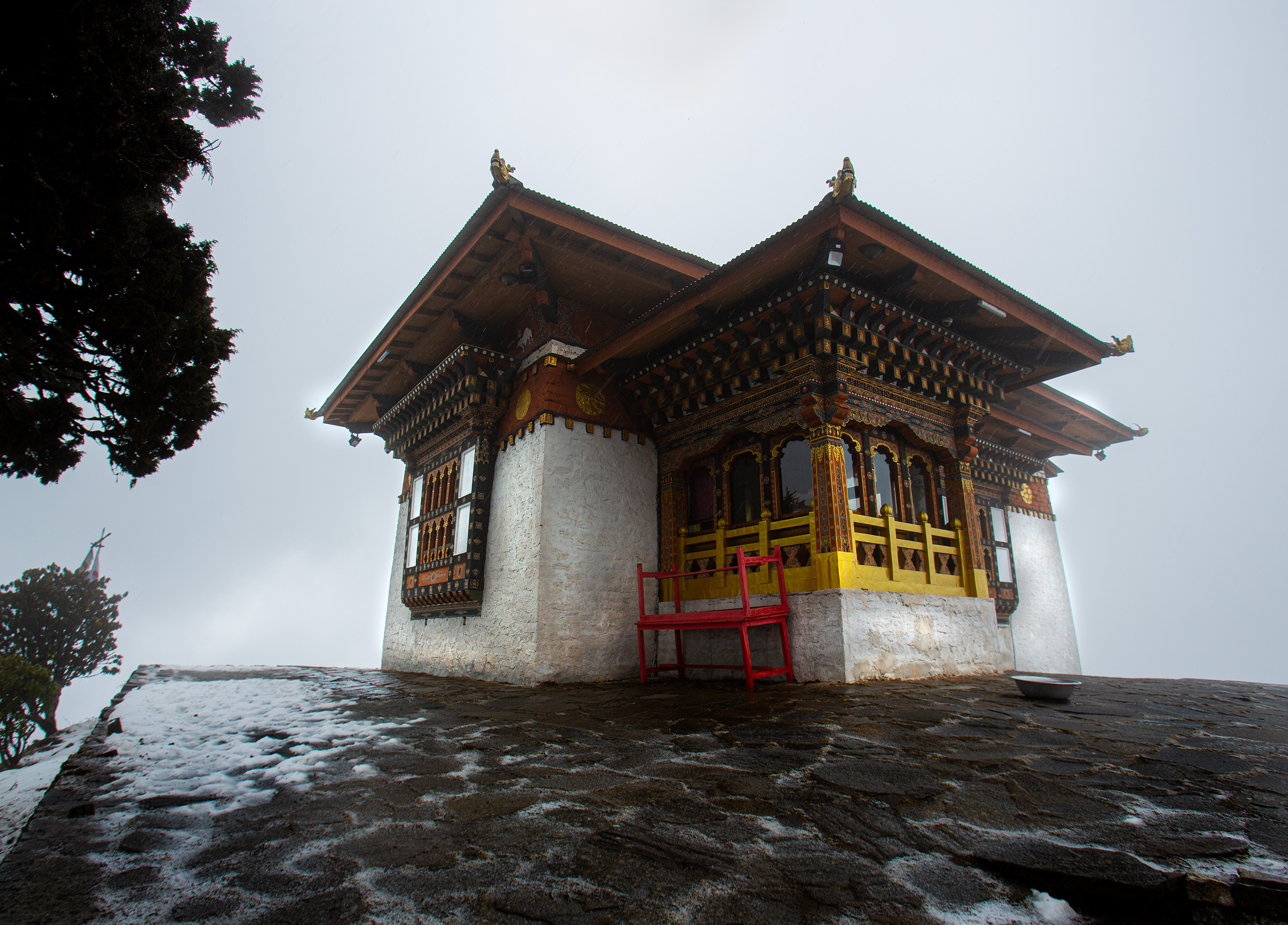
Authentic Bhutanese Lunch at Menchuna Restaurant
We headed down from the pass and stopped at a Bhutanese restaurant for lunch. This place seemed to cater to tourists, they had a large amount of things for sale in their gift shop, but they served us a local cuisine for lunch. We had yak butter tea, some soup with cooked greens, pork with vegetables, spicy carrots in curry, dried fish, rice, and last but not least the pig skin. Bryan had to be the representative to try the pig skin, which he struggled with and said tasted like what you would imagine manure to be! We also struggled with the dry fish which was extremely tough, fishy and boney. While we ate, one of the staff stood directly next to u, watching us the whole time, which felt very awkward!
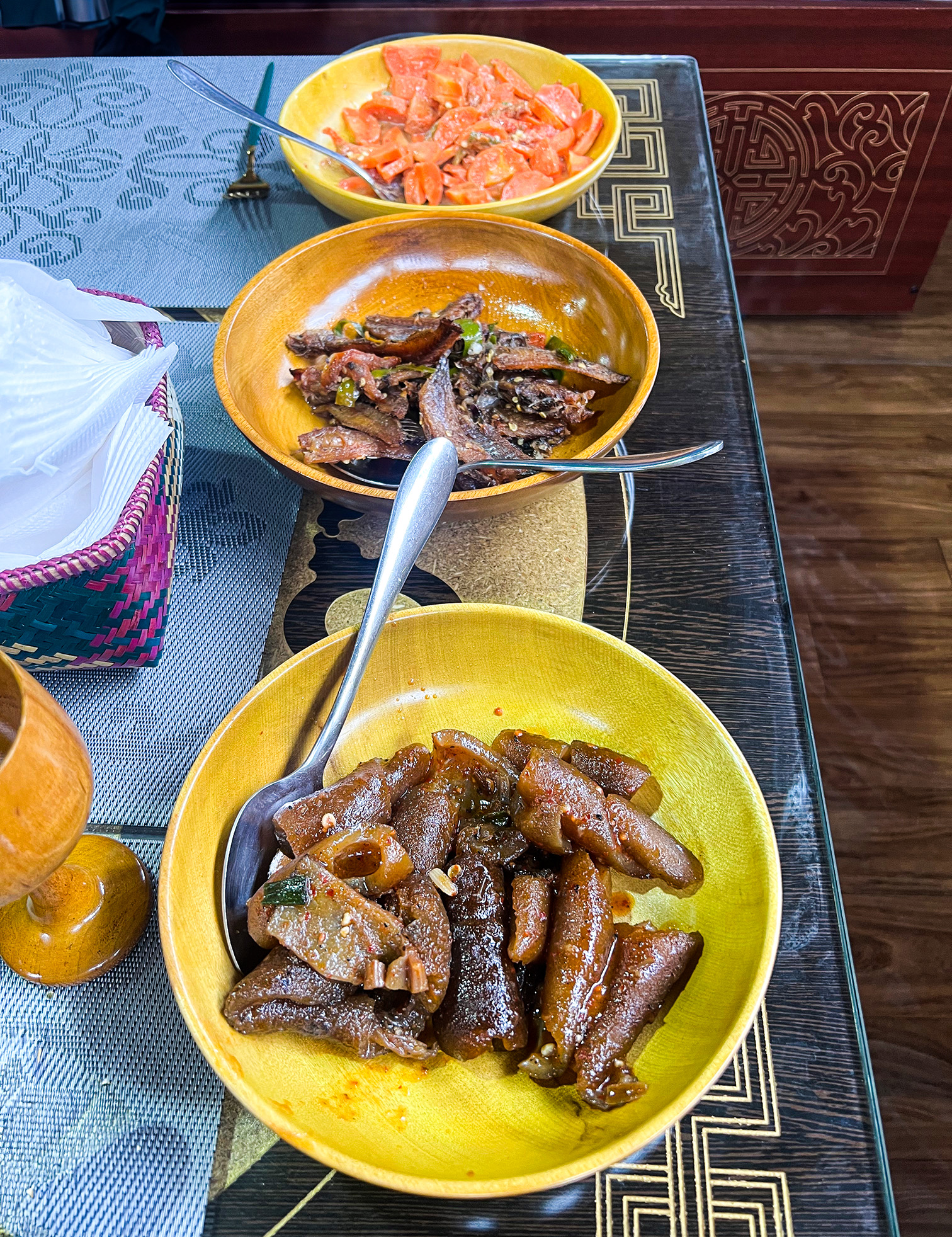
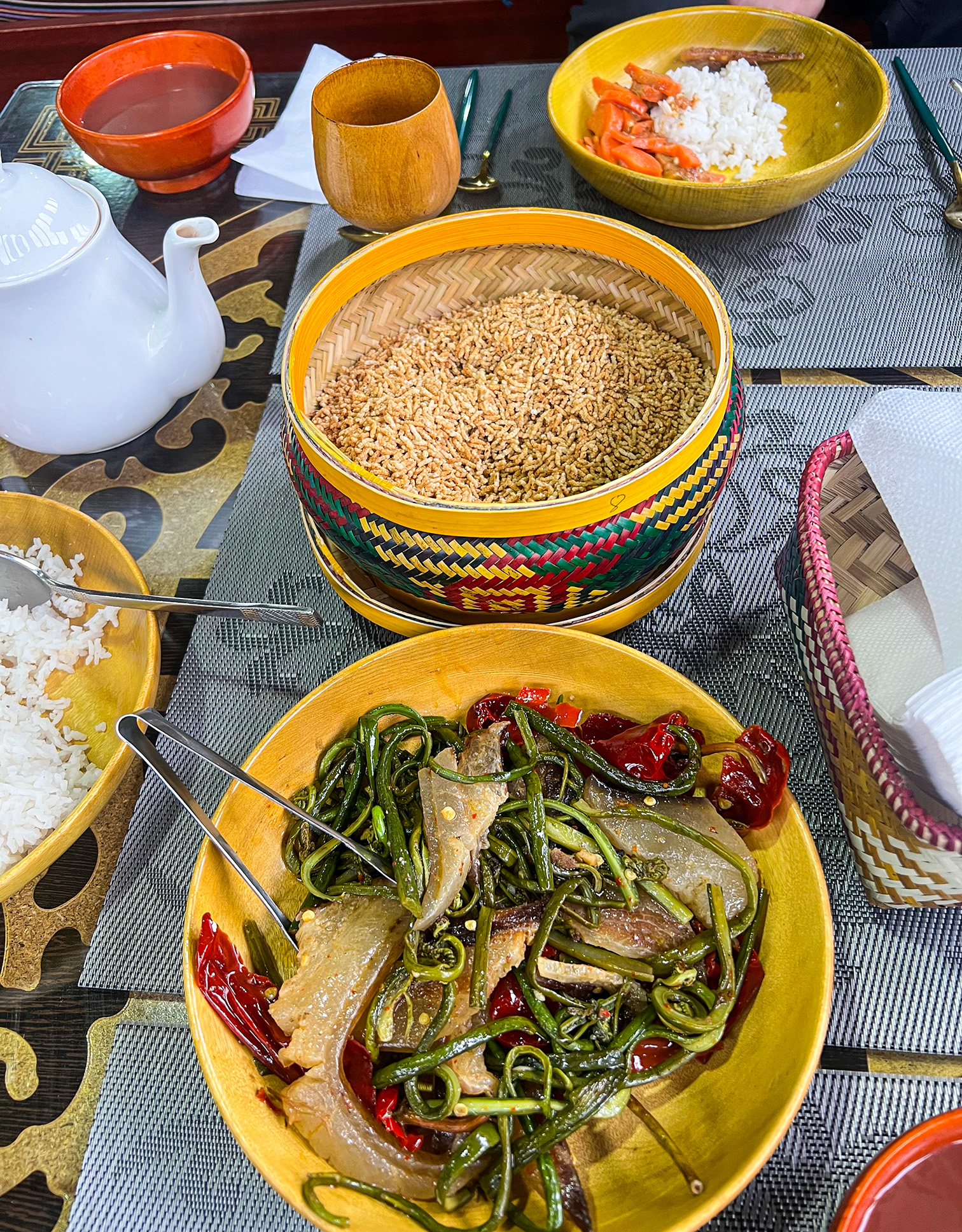
Phobjikha Valley
After lunch, had several hours more to drive continuing down through the Punakha valley, which is much lower elevation. Then up another pass and back down finally entering the Phobjikha Valley. By this time it was getting late, almost 6pm, and our guide and driver had to ask for directions to our hotel, which they said was new. We arrived at the ABC Lodge, and were welcomed with some tea around the fire to warm up. The valley felt very rural, mostly farming of potatoes, and most houses owning cows and other livestock.
The valley is around 9,000 ft elevation, so much colder. Right before we headed to dinner, the electricity went out and we were glad we had decided to bring our headlamps with us on the trip. The electricity stayed out all the way through dinner and so we went to bed early, and were awakened with all the lights turning back on at some point. We were glad we had a very heavy and warm blanket, as the room was very cold with the heater having been off from the power outage.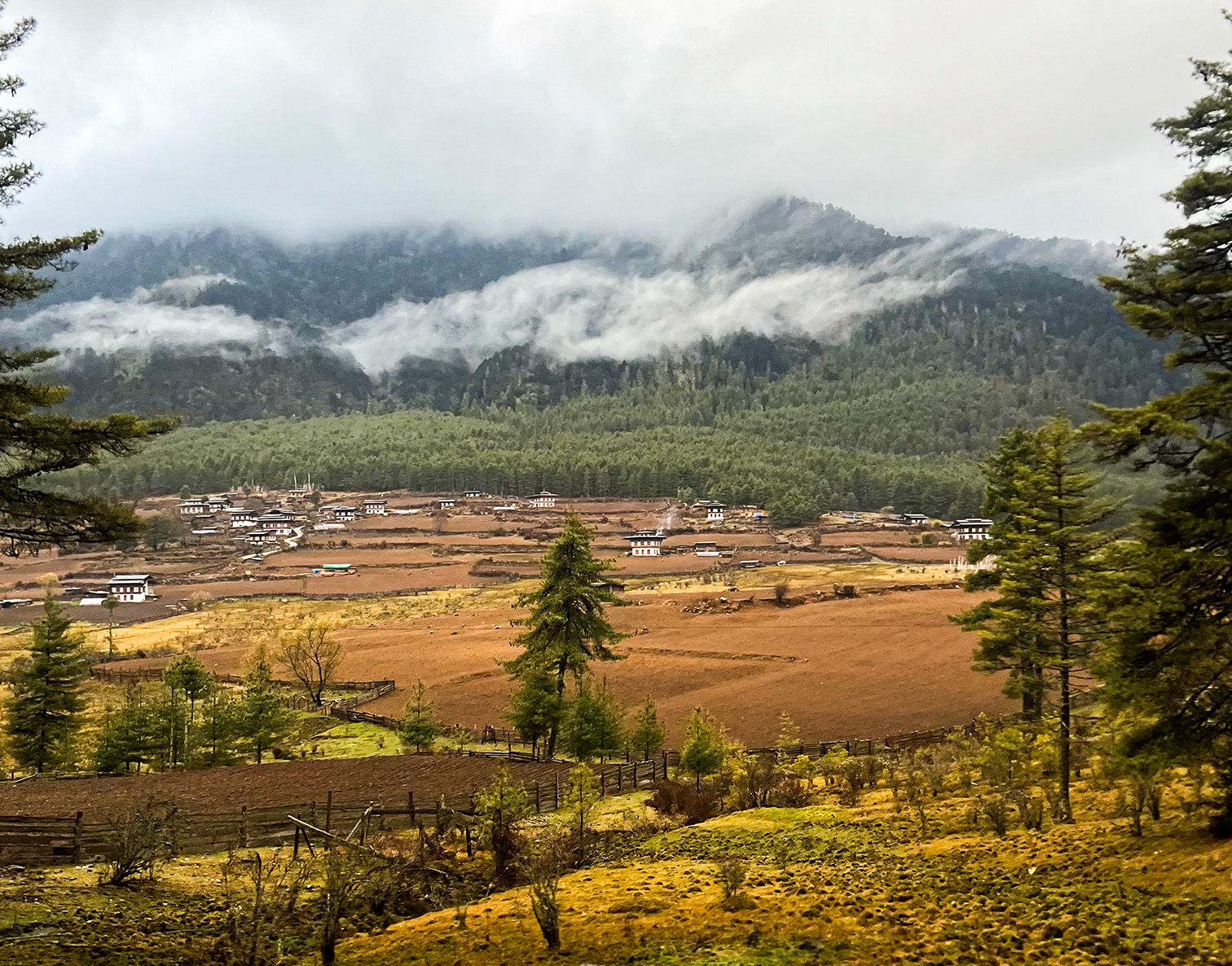
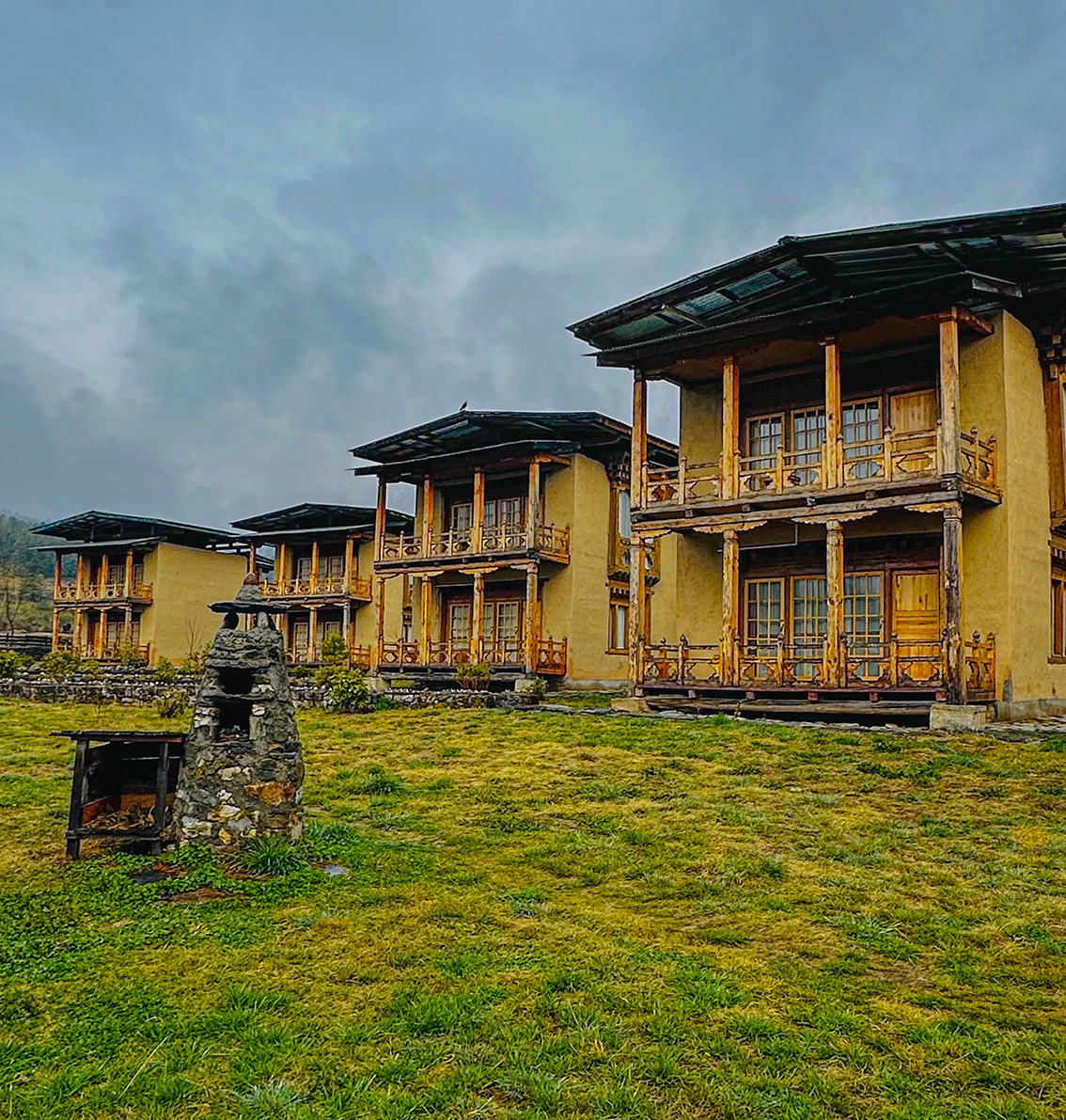
Back to Top
Link to Photo Gallery

Day 6: Phobjikha Valley and Punakha
Black Neck Crane Visitor Center
After a good sleep, we had breakfast at the hotel and then drove through the valley in search of the famous black necked cranes. The cranes migrate to the valley during the winter and then return to Tibet during the summer. The cranes are protected in the valley. If you happen to be in the valley between October to February, that is the time to see the cranes. Being late March, it seemed the cranes had already left to fly back to Tibet, so we didn’t get to see them in the wild. The do have a year-round visitor center devoted to the cranes, where were were able to see two of them that had been rescued after being injured. We also watched a short film on the cranes, which was very informative. There is also a black-necked crane festival held every year on Nov 11.
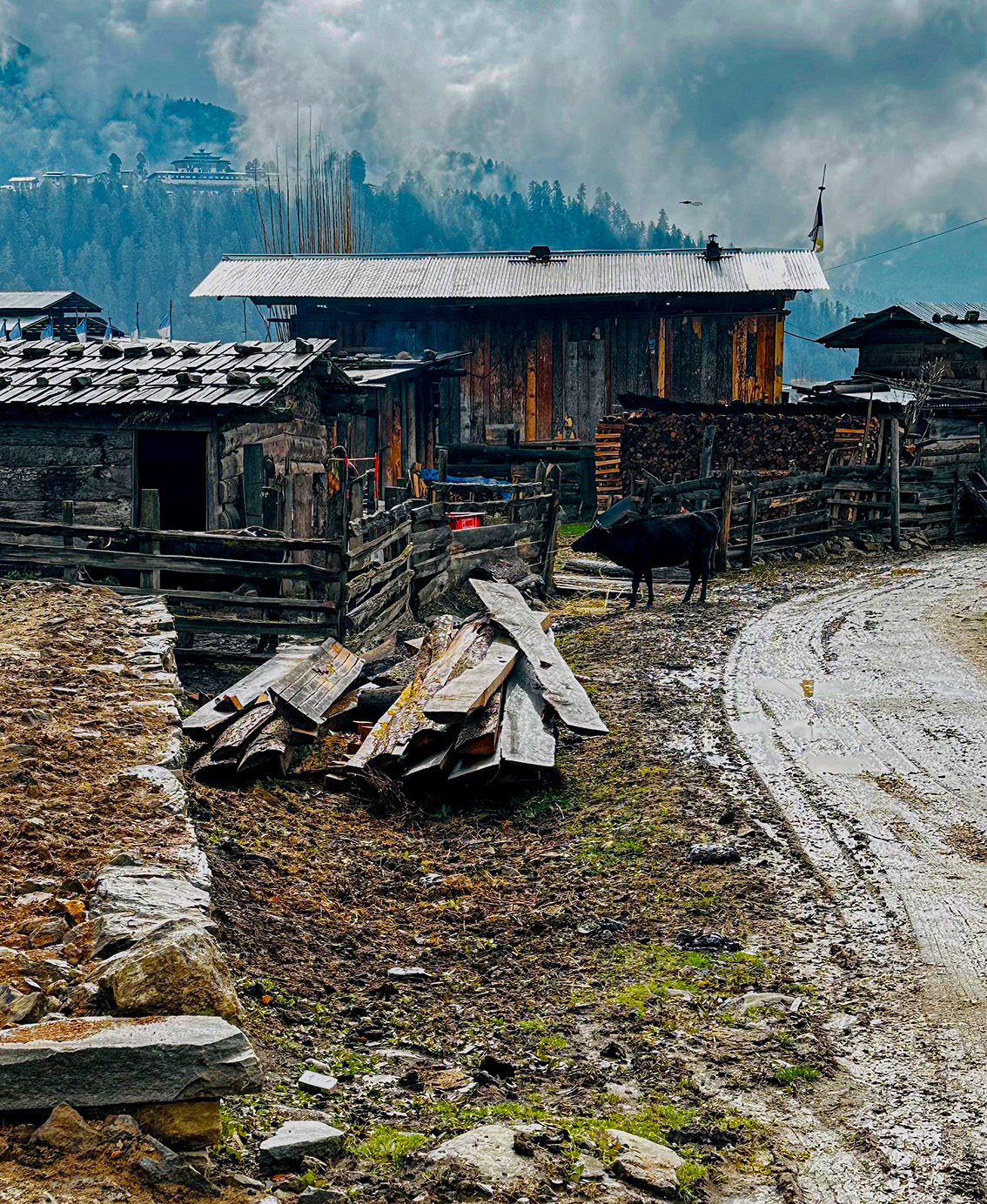
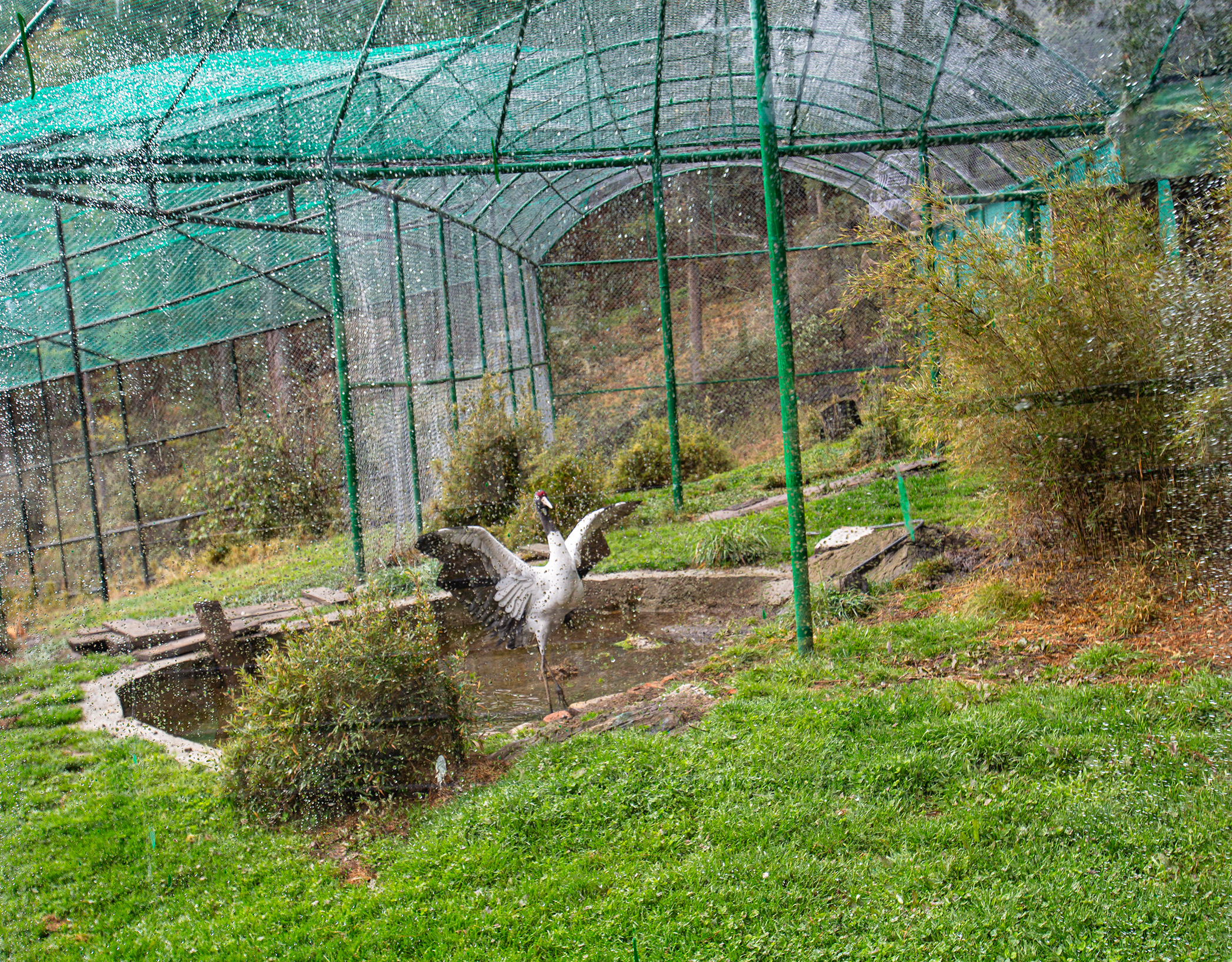
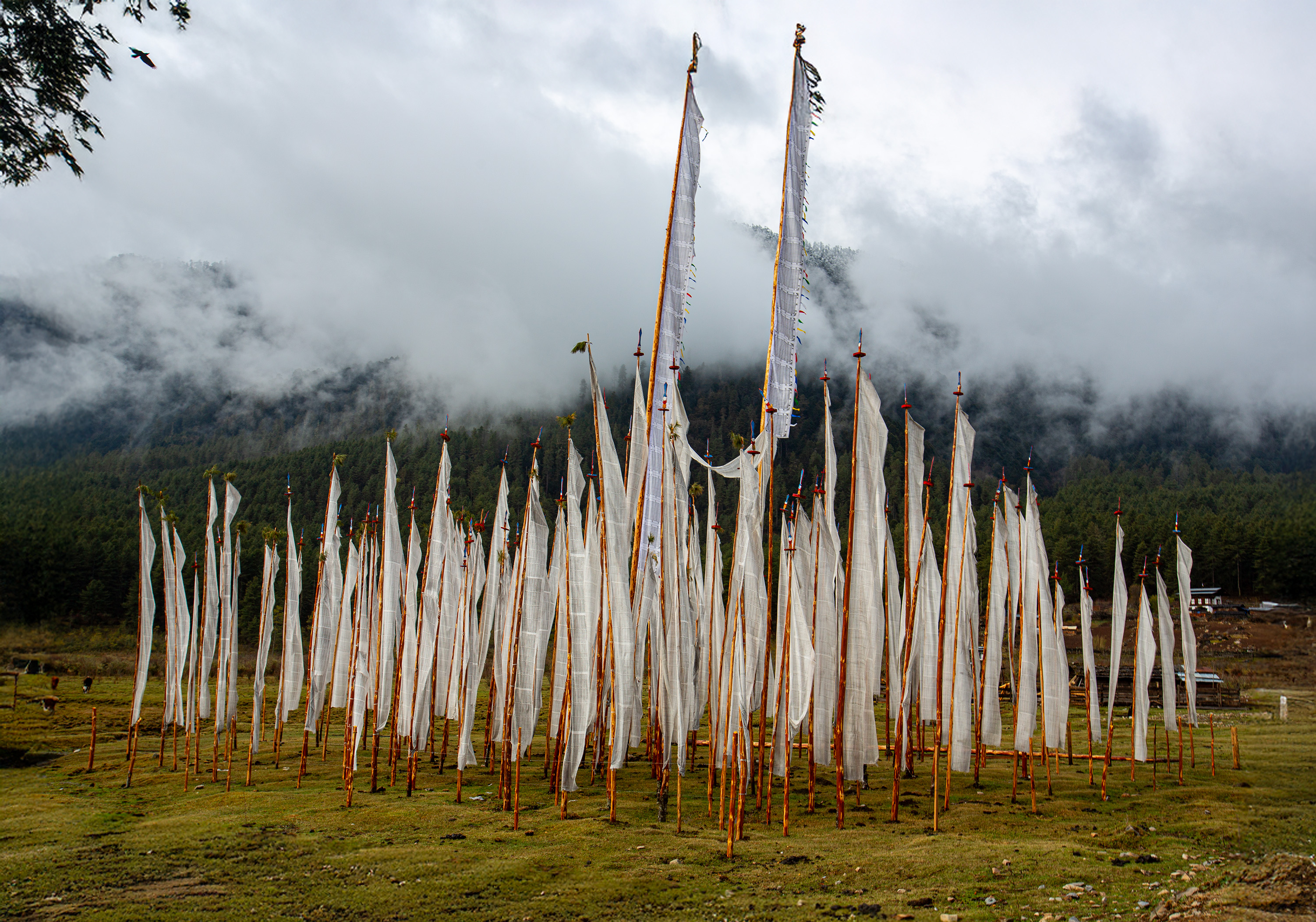
Yak traders at Lawala Pass
We got back in the car for another long drive, and stopped at the top of the pass for some shopping from the local yak people. They were selling mostly yak wool products and we purchased a very soft shawl / blanket and a wind chime made from bells. Then the long drive down stopping a few things to stretch our legs briefly and look at trees.
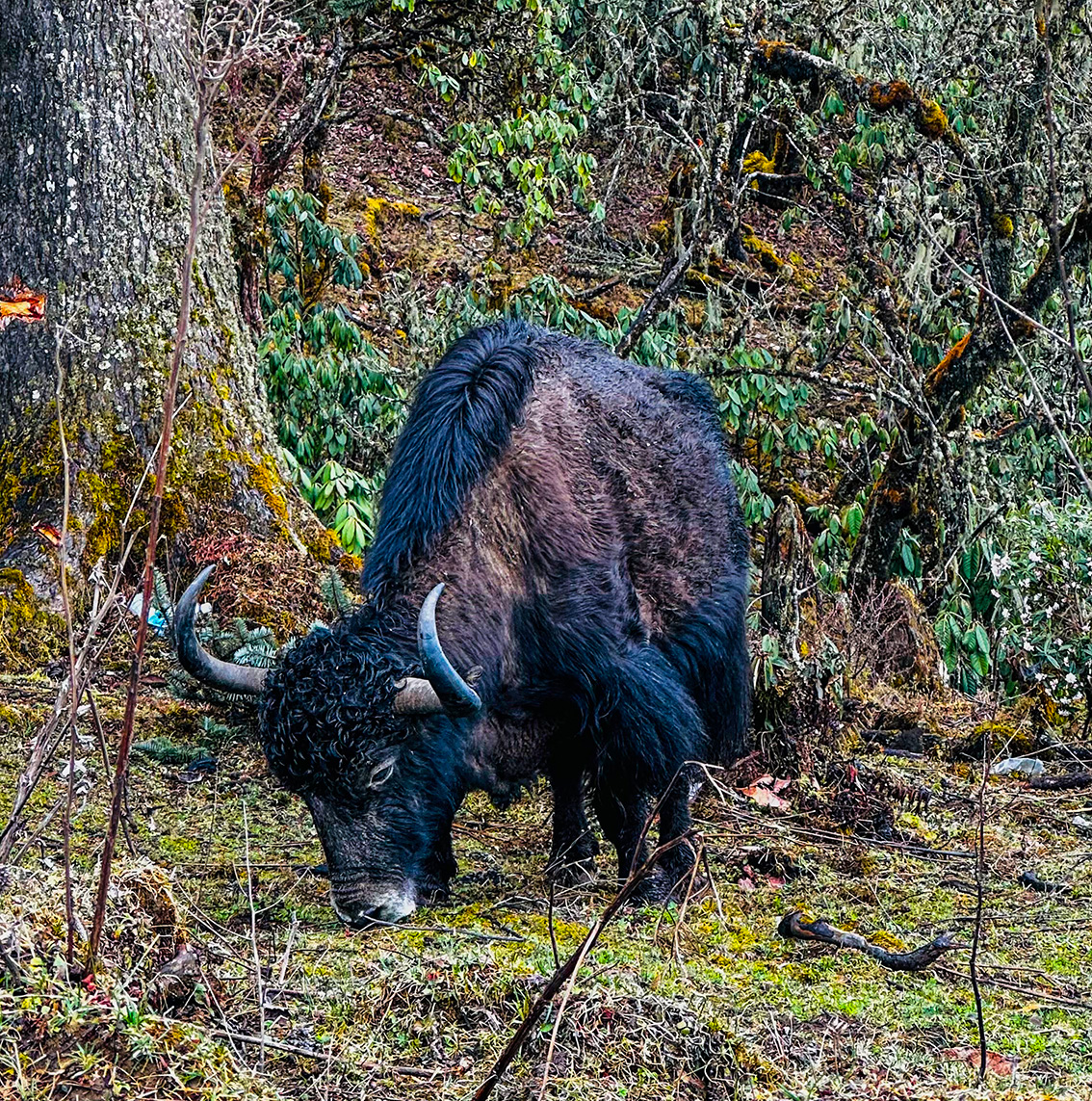
Chimi Lhakhang, or the temple of the Divine Madman
We finally reached Punakha, where we will spend the next two days. Our first stop was the Chimi Lhakhang, or the temple of the divine madman. This temple is dedicated to fertility, and was build in the 15th century. It endorses the symbol of the phallus, and you can see some interesting artwork. Wood carvings and souvenirs of all sorts on your way to the temple. We walked there through the rice fields and up a small hill, which was nicer than driving all the way there. Inside, we spent time talking about the stories surrounding this strange Buddhist saint.
We shopped around for artwork on our way back up through the village and to our lunch restaurant. Again, we did not get to choose our lunch, but were served a variety of dishes that were at least a little different this time, including momos.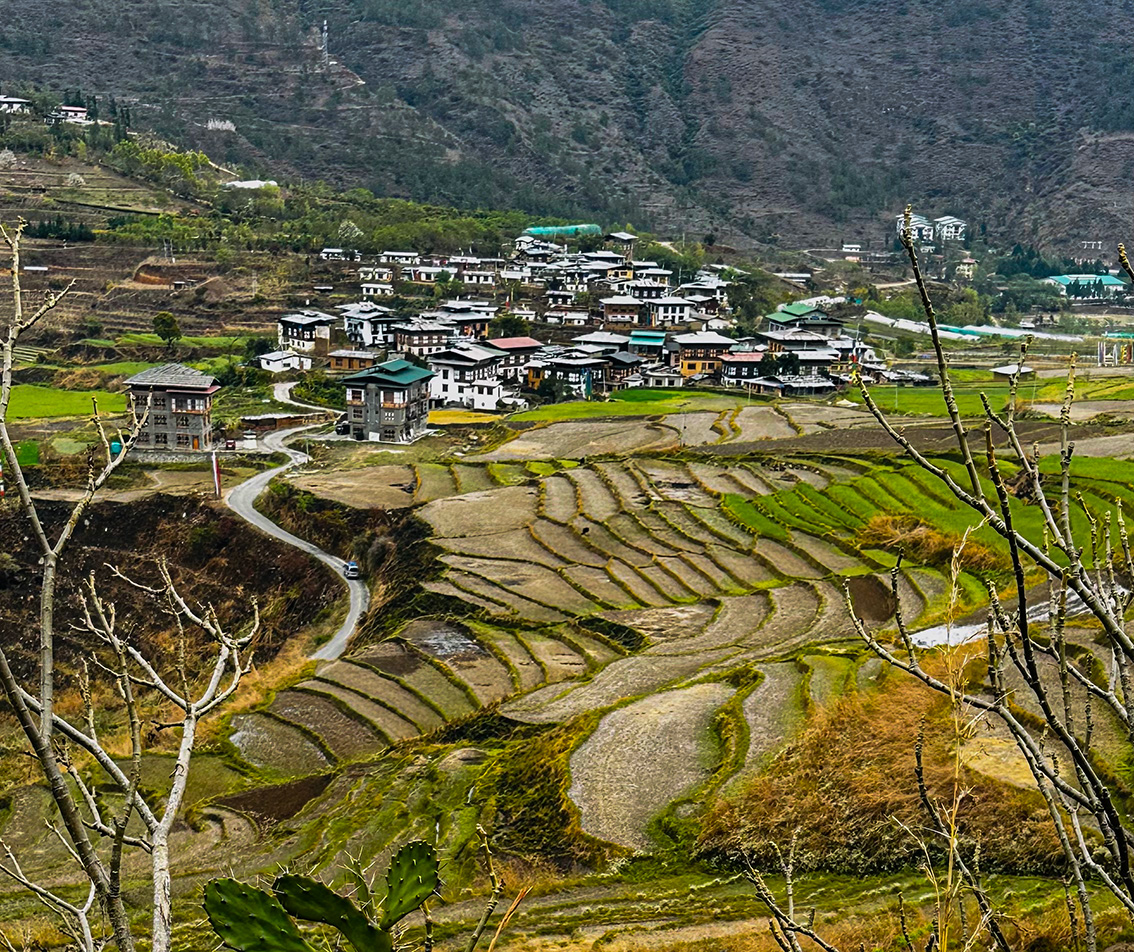
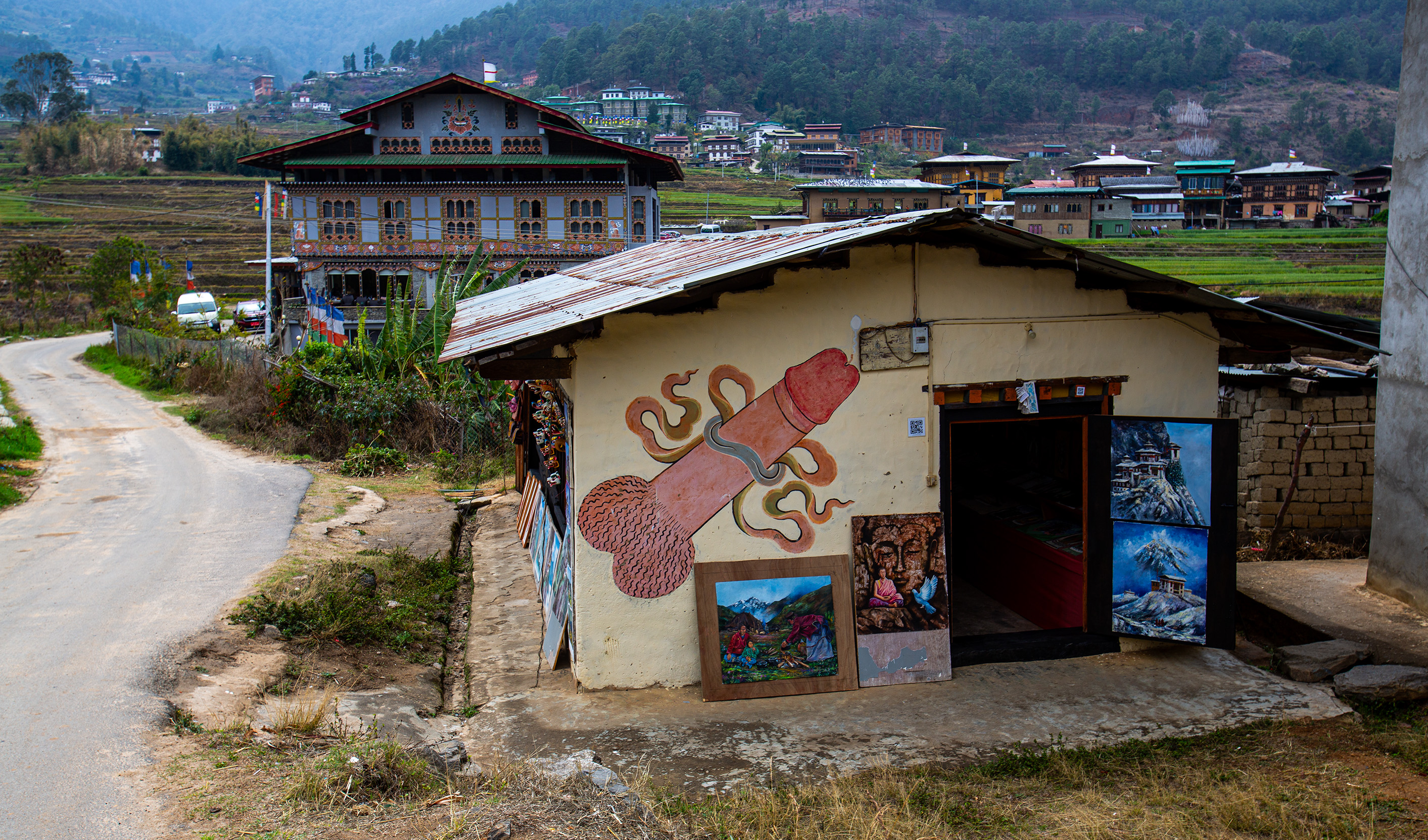
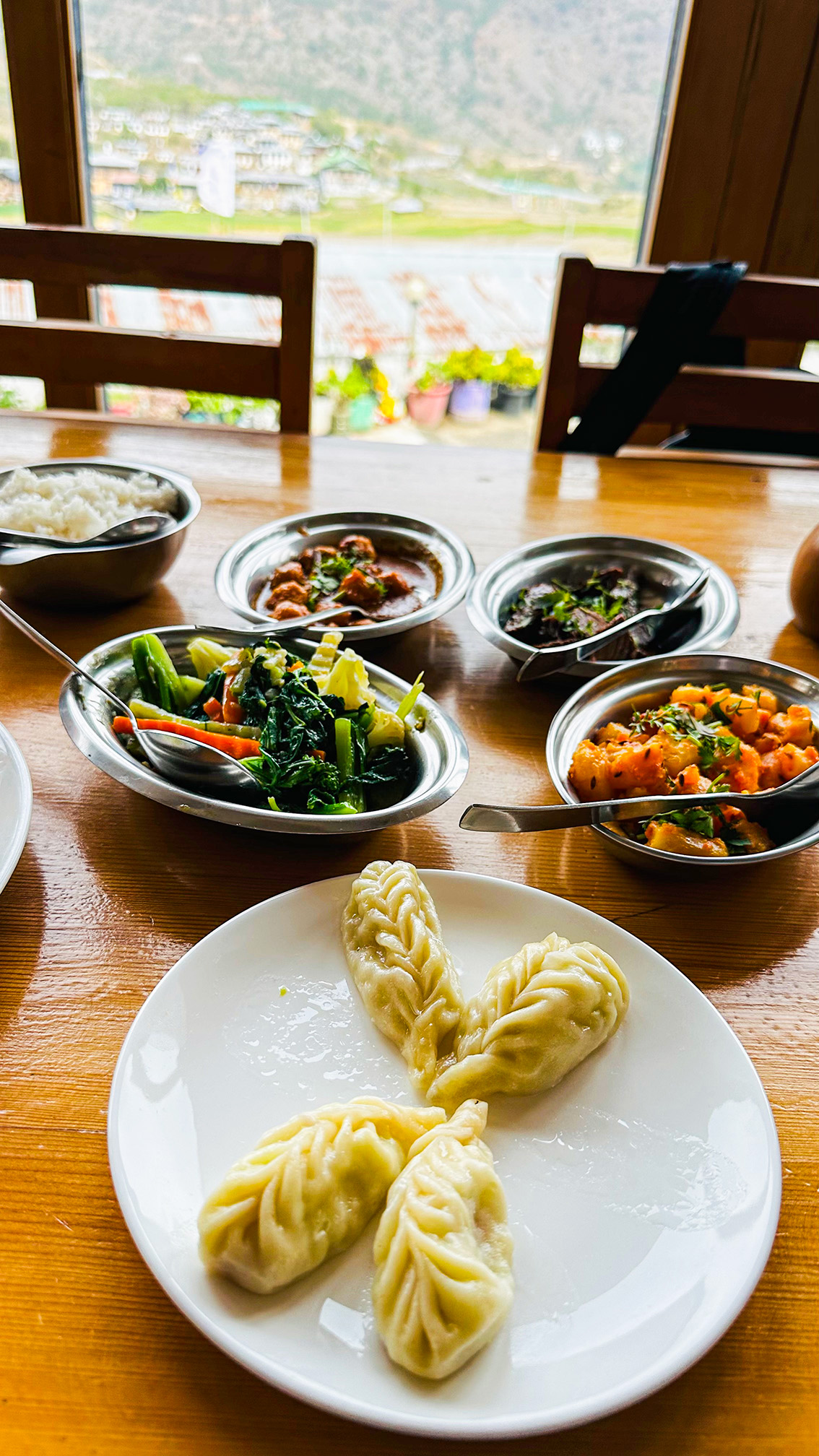
Sangchhen Dorji Louendrup Nunnery
After lunch, we drove to the top of a nearby hill where we went to visit the Sangchhen Dorji Louendrup Nunnery. This site is a school and meditation center to a group of nuns and was set on a stunning hilltop overlooking the valley from all sides. We enjoyed walking around and taking in the views while the sun came out. There was a large Nepalese style stupa, a prayer wheel, traditional Bhutanese stupas, a small library for the nuns, and a temple. We were able to witness a few of the nuns chanting inside the temple. They all seemed friendly and curious. We bought a few bracelets that they had made to sell in order to raise funds for some restorations.
It was time to check in to our hotel, the RKPO Green Hotel, where we will spend 2 nights. A lot of the hotels in Punakha were already full when we were looking to book, so this hotel was not our first choice. But so far, other than being bigger and hosting a few larger groups, it seems to be good. We had several Indian / Thai buffet dishes for dinner and called it a night.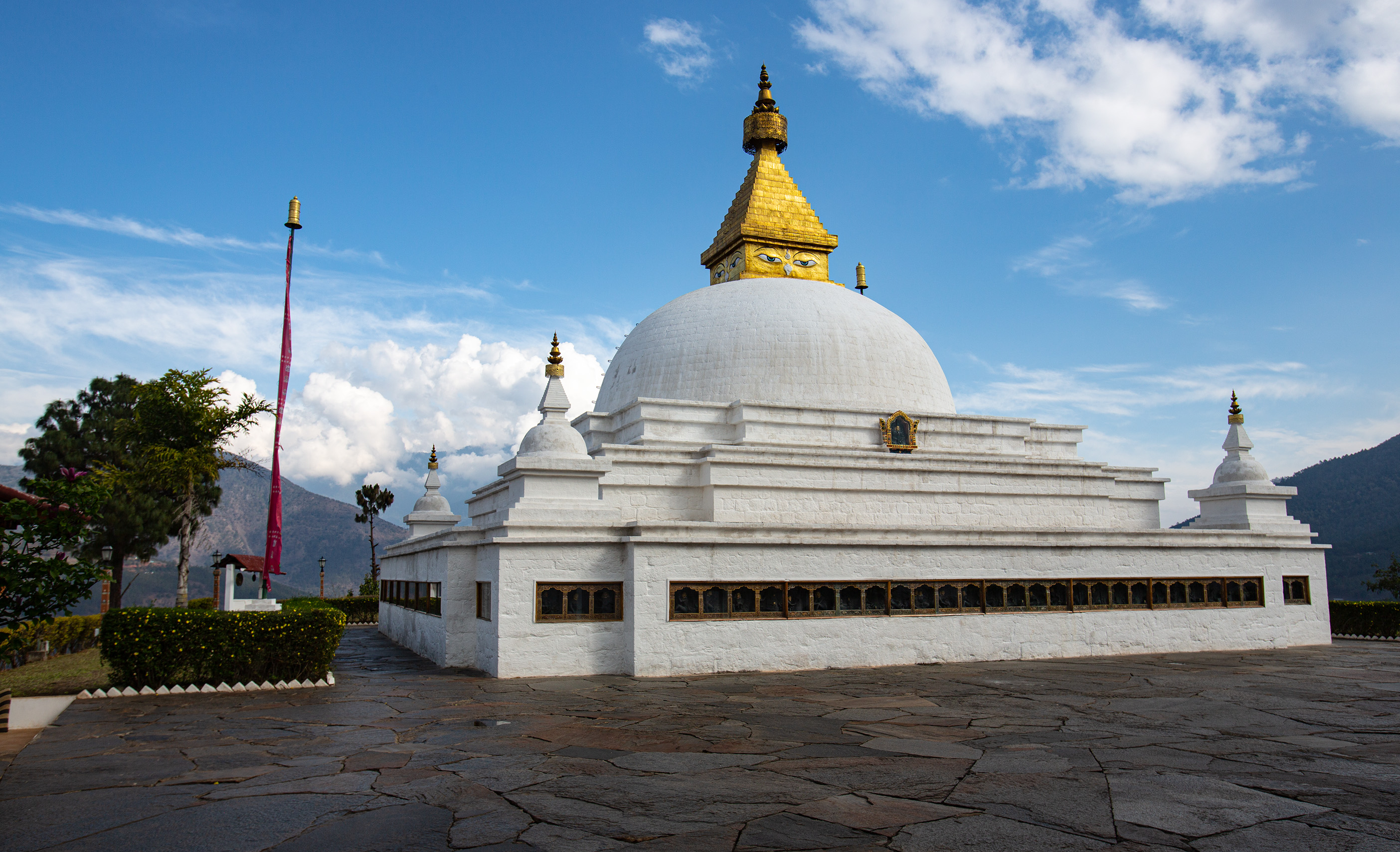
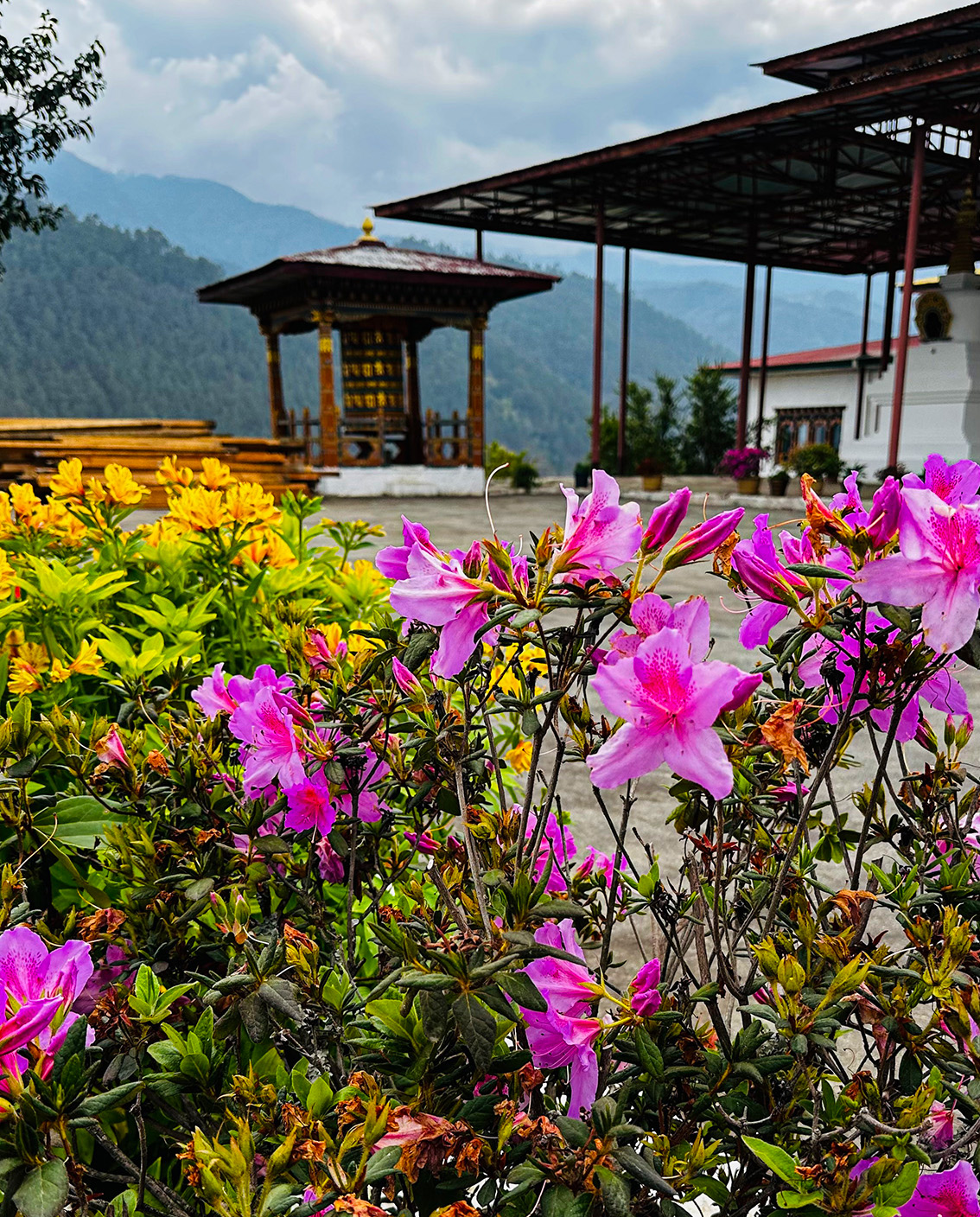
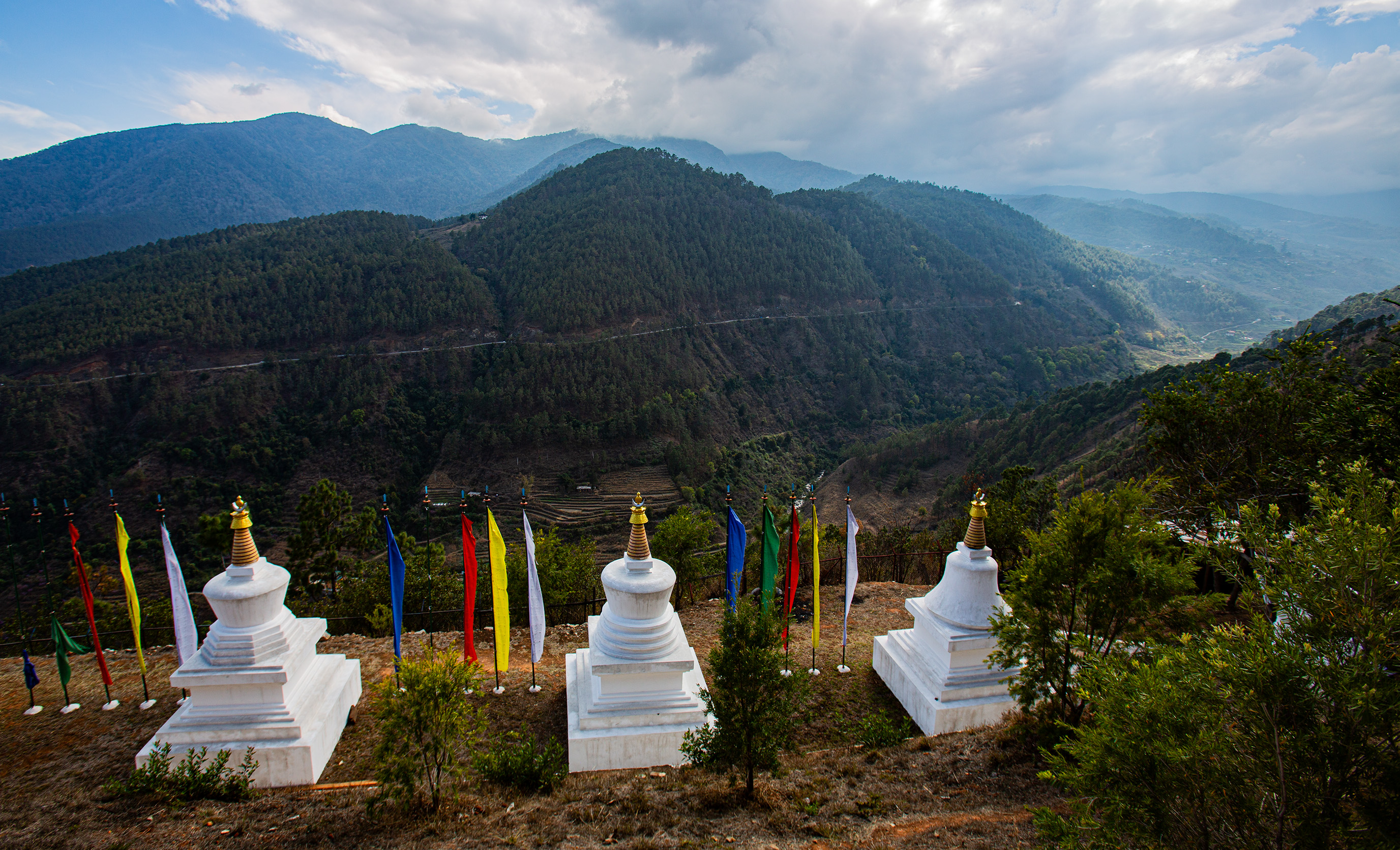
Back to Top
Link to Photo Gallery

Day 7: Punakha
We had a fun day ahead for us in Punakha today. After breakfast, we left at our usual time of 8am and drove up the MoChu river to where some rafting groupd were putting in. There are two sides of the river, the MoChu and the PoChu, the female and male sides, that join together just after the grand Dzong into one big river. Later in the day, we will raft on the PoChu! For now, we parked the car and walked across a footbridge decorated with many prayer flags. There are not many road crossings of the rivers, so there are several places that have long footbridges for walking across.

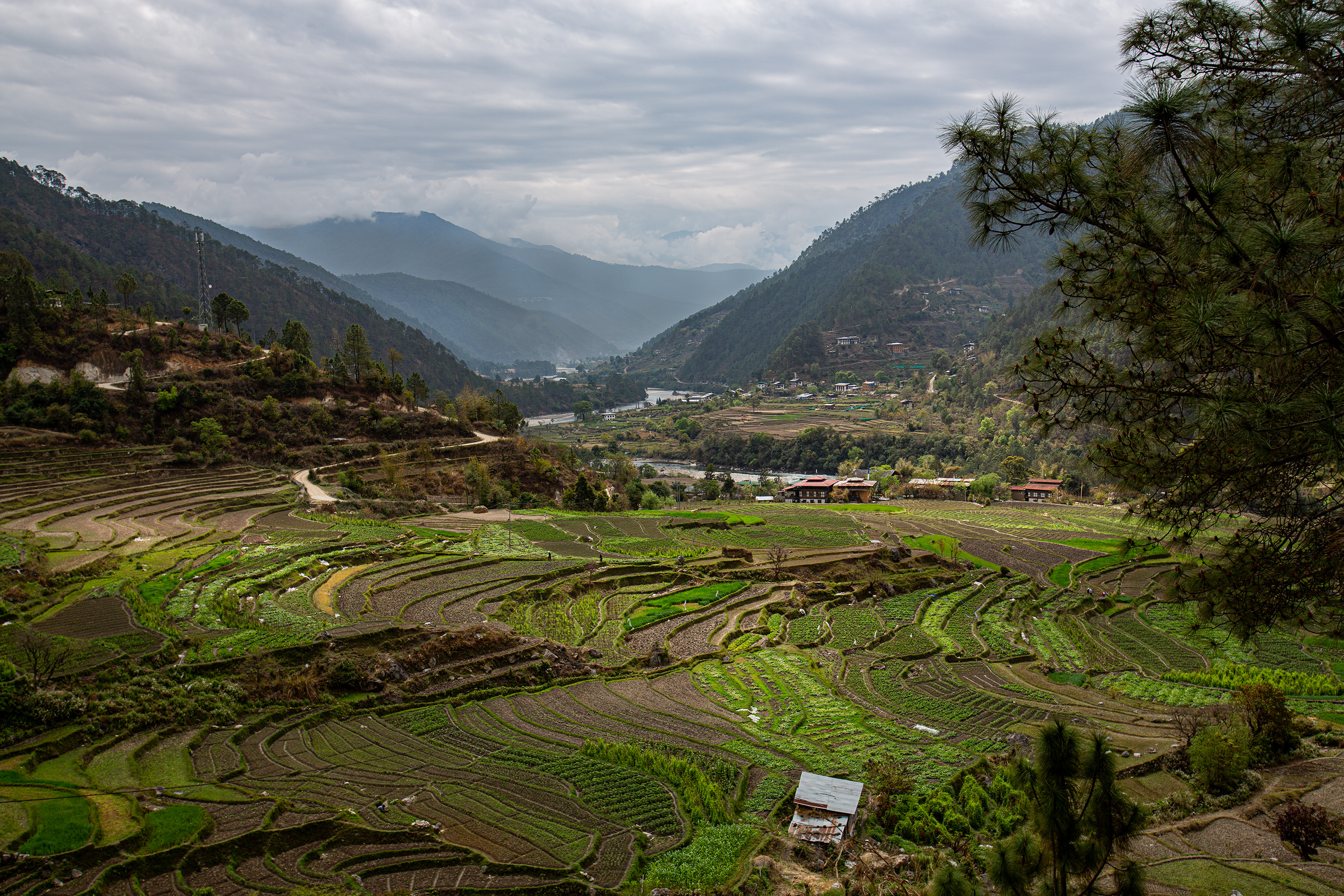
Hike to Khamsum Yulley Namgyel Choten
We had added a hike into our itinerary to see the Khamsum Yulley Namgyel Choten, up on a hill near Punakha. We hiked up through many farms and fields, many of which were already starting to grow since the valley in Punakha sits at about 4,000ft elevation. It was much warmer and partly sunny today. Our hike was a little under 1 mile and about 600ft elevation gain. At the top of the hill, we arrived at the Khamsum Yulley Namgyel Choten, a temple with a very large stupa. Inside, there were 3 levels of stairs to walk up, with different altars on each level. At the very top you can go outside to get views of the valley from above.
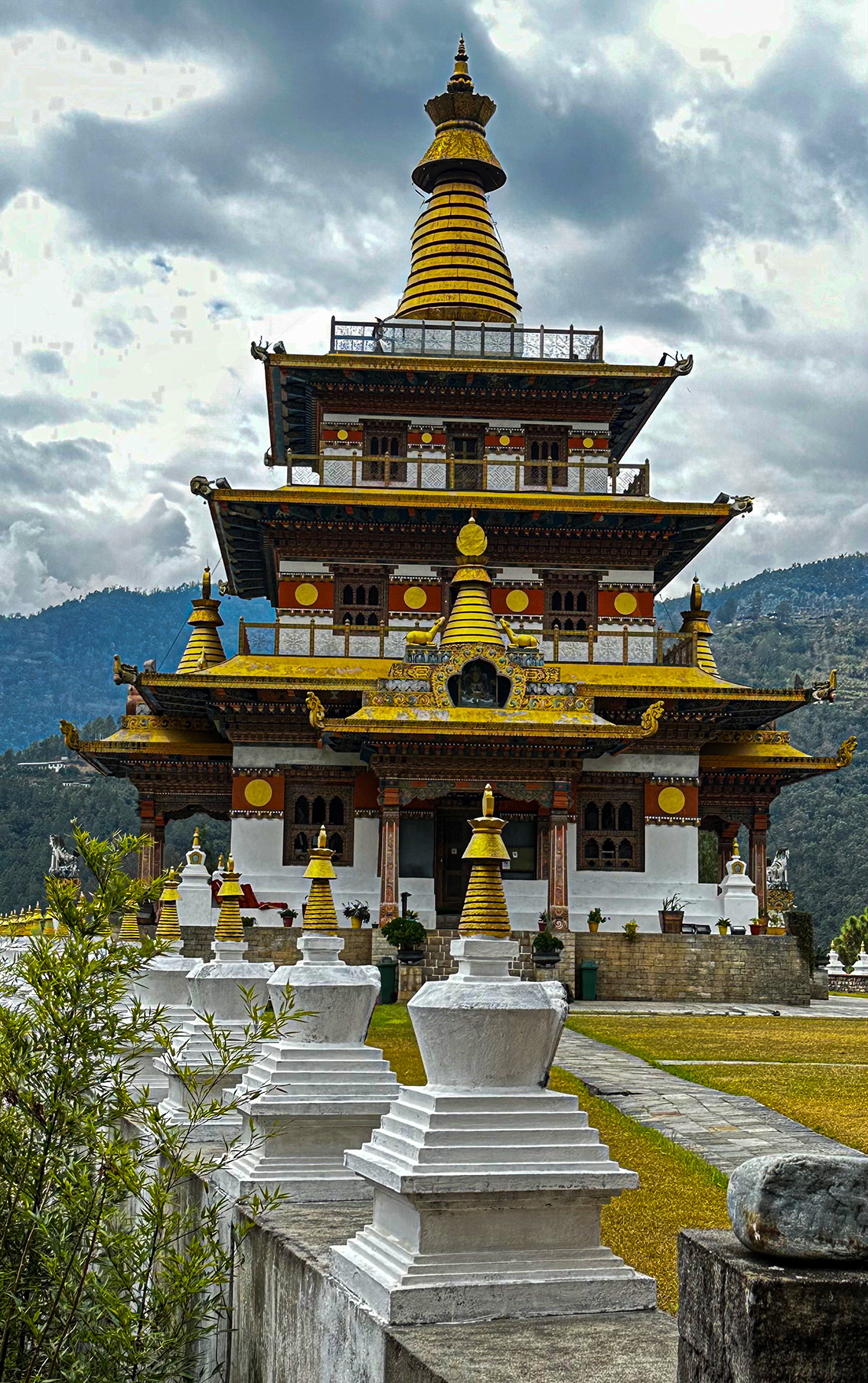

Punakha Dzong
After hiking back down, we drove to the Punakha Dzong, the biggest and most impressive fortress we have seen yet! The Dzong sits on the confluence of the river and is surrounded by many trees, some of which were in bloom. To get to the Dzong, you cross a wooden covered bridge by foot. Inside, there are 3 courtyards to walk through to get to the main temple. There are also many other smaller temples for the monks who live there. We were lucky enough to stand outside one door and hear the monks chanting all together. From around the other side, we could peer in and see them sitting and playing the drums and chanting. We had a good photo opportunity when they all started walking out into the courtyard. We spent a long time inside the main temple, where our guide explained what seemed like each and every thing painted on all 4 walls. We got to see the story of Buddha from his birth to his death, all depicted in the paintings.
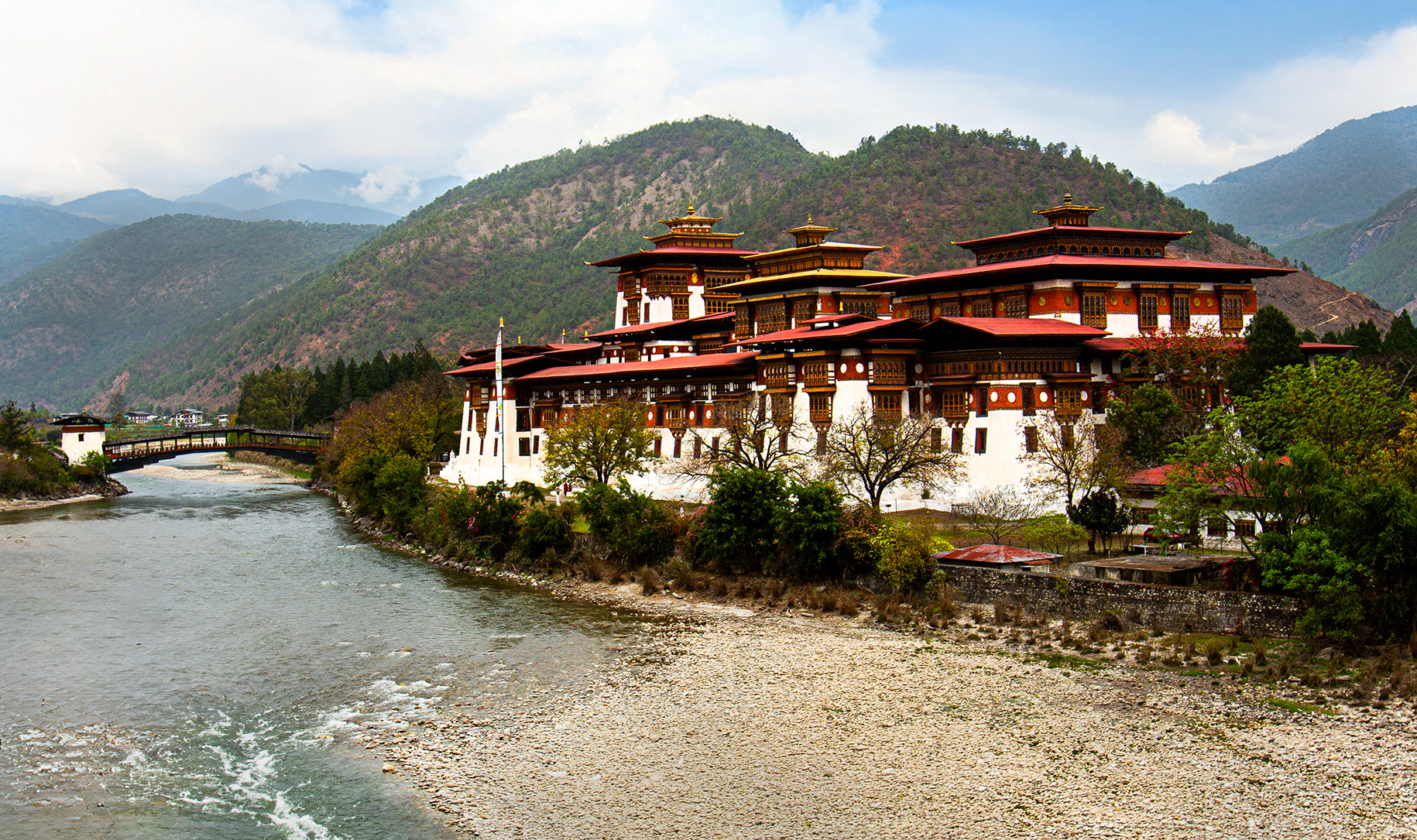
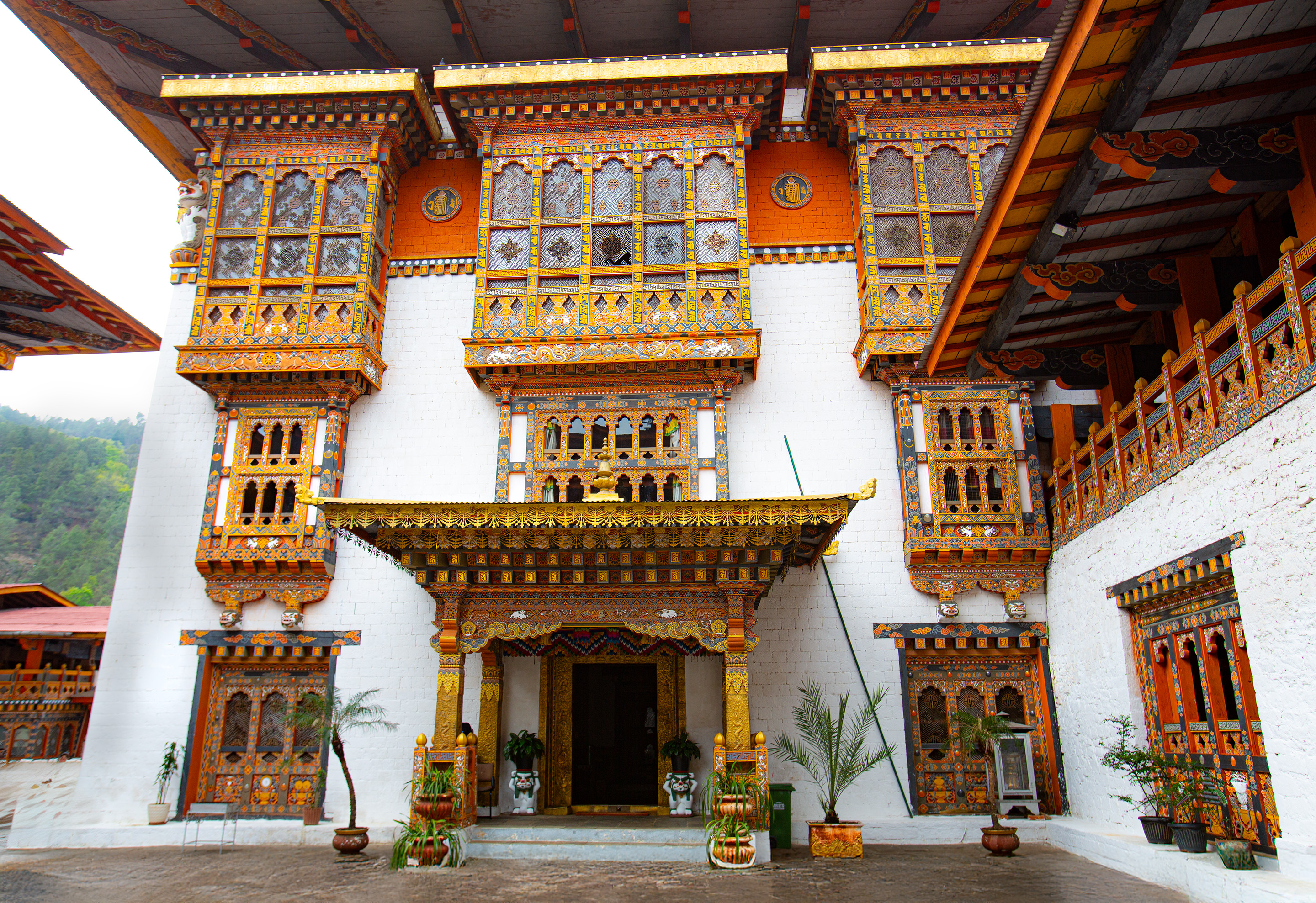
Local lunch at Tenphey Bhutanese Cuisine
Our guide and driver were trying hard to bring us to a local lunch today, so we drove into the city where they located a place that served local dishes. We were a little worried when the owner of the restaurant stated that there was a buffet later today, but our guide explained to him and he offered to have a few items made for us to try. We were relieved to not have to eat at a touristy buffet lunch again! We tried to order beer but the friendly owner said we needed to try his local wine that we can only find there. It turned out it is made by his mother in law, who lives far away in the South, and so it is true that maybe it was unique to his restaurant. It consisted of fermented barley that you pour hot water into, stir around, wait a bit, and then drink out of a very large bamboo container with a bamboo straw meant to filter out the barley pieces. It tasted pretty good and we were pleased to be trying something new. For lunch we had momos with chili sauce, and a soup that had vegetables and some kind of pasta.
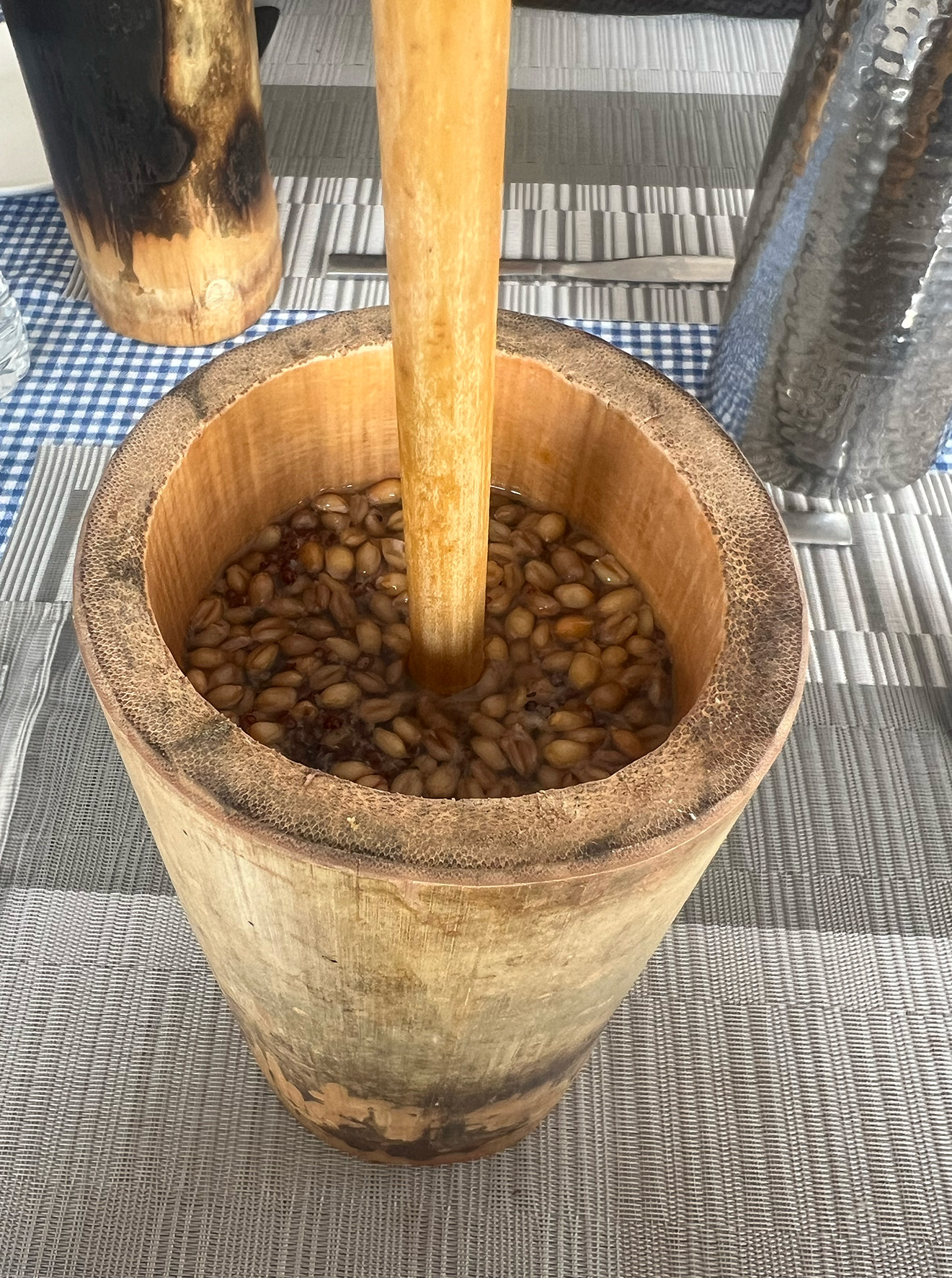
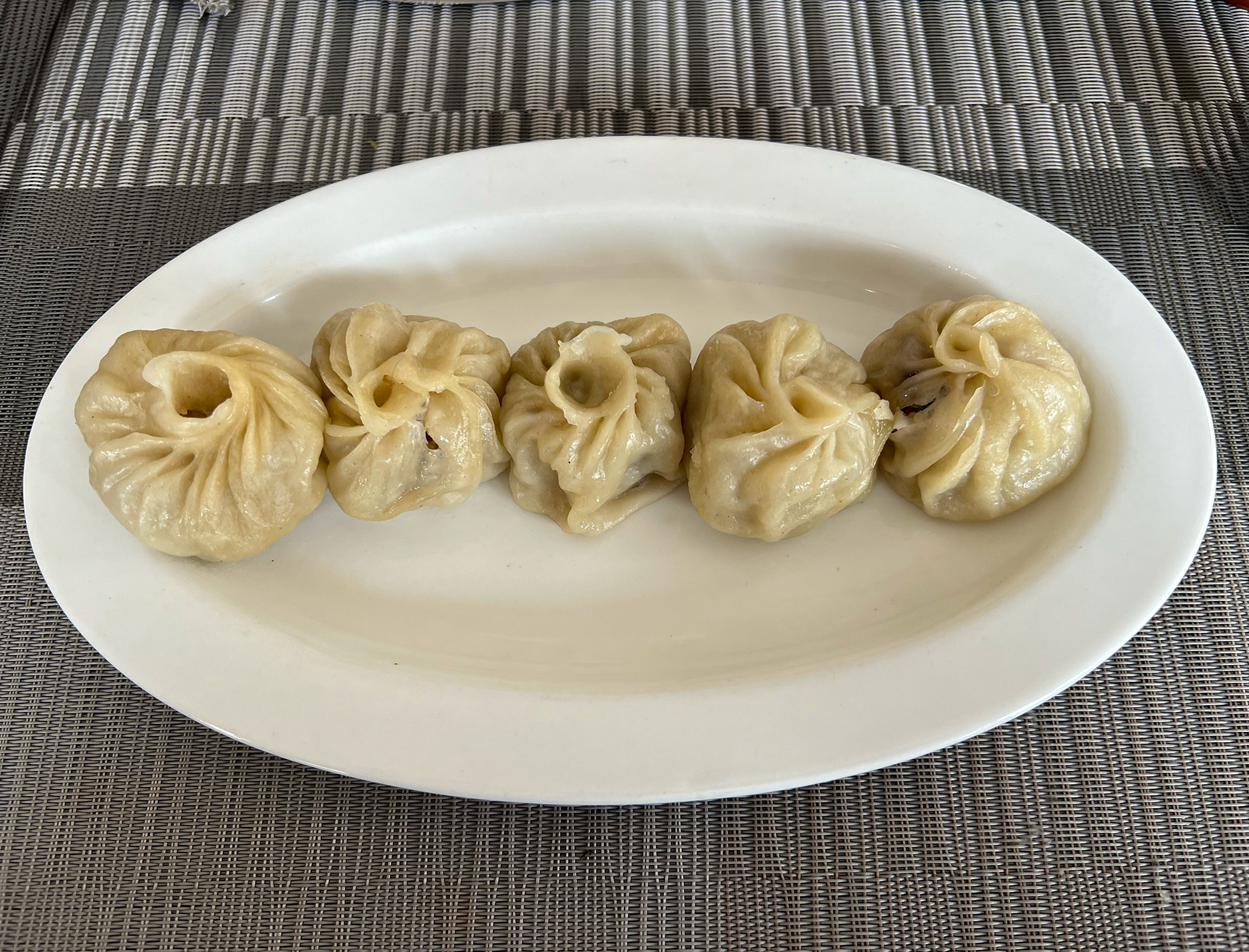
Rafting the Pa Chu River
Our final event of the day was the rafting. We were beginning to wonder what time we were supposed to be there until we realized that our guide called them and just told them when we were ready. On our way up the river, we stopped at another much longer footbridge that seemed to be a popular place to cross, and took some pictures. Then since we were a bit in front of our rafting crew, we stopped on the side of the road where our guide said we could just get out and see a local farmhouse. It felt a bit strange to just get out and start walking around the outside of someone’s house but to our guide he felt very comfortable. There was an older man who kept talking to us, we think in a friendly way, but we had no idea what he was saying and after a bit our guide told me that he had no idea either! He seemed to be trying to tell us about things on the property. We were still waiting for our rafting crew to drive by so we walked up the road where we passed a few children coming back from school. They were so cute in their formal Bhutanese outfits and very friendly.
Our rafting crew arrived and our driver was right behind them to pick us up and bring us the rest of the way. We were the only ones on the raft and our driver, Tashi, had never been rafting before so he was eager to join us. Our guide stayed behind and helped shuttle the cars. The river is quite low at the moment because the high season comes during the summertime when it is raining much more and then the glaciers are also melting. We still had a good time, as there were many obstacles to avoid. We had chosen to go on the PoChu side of the river because it was more challenging and a bit more whitewater than the MoChu side. There were definitely a lot more tourists going down the easier side. The raft trip took about 90 minutes, and we ended just after the confluence of the rivers after passing by the Dzong. By then it was 5:30pm so we headed back to the hotel to take warm showers, have dinner, and rest up for the night.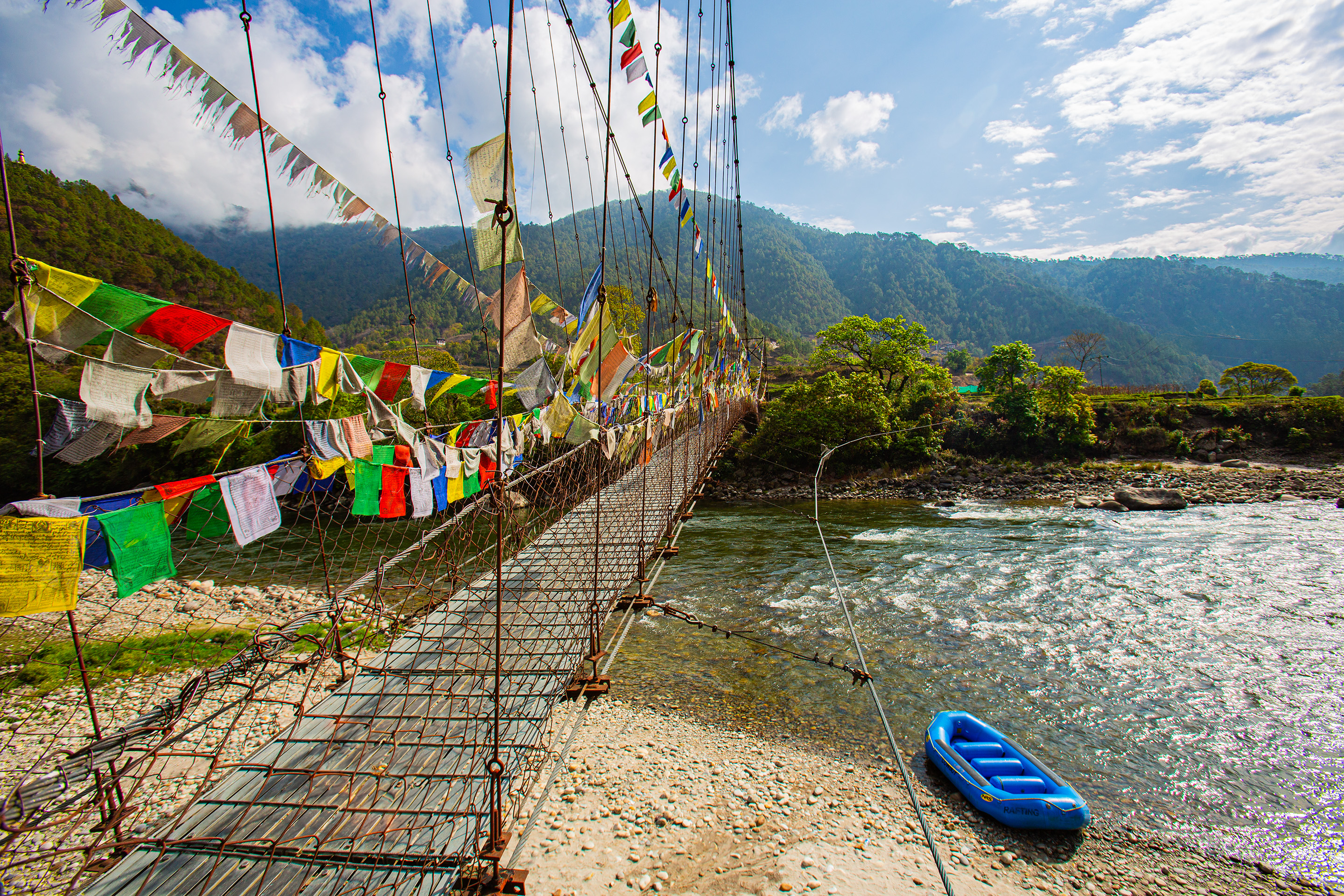
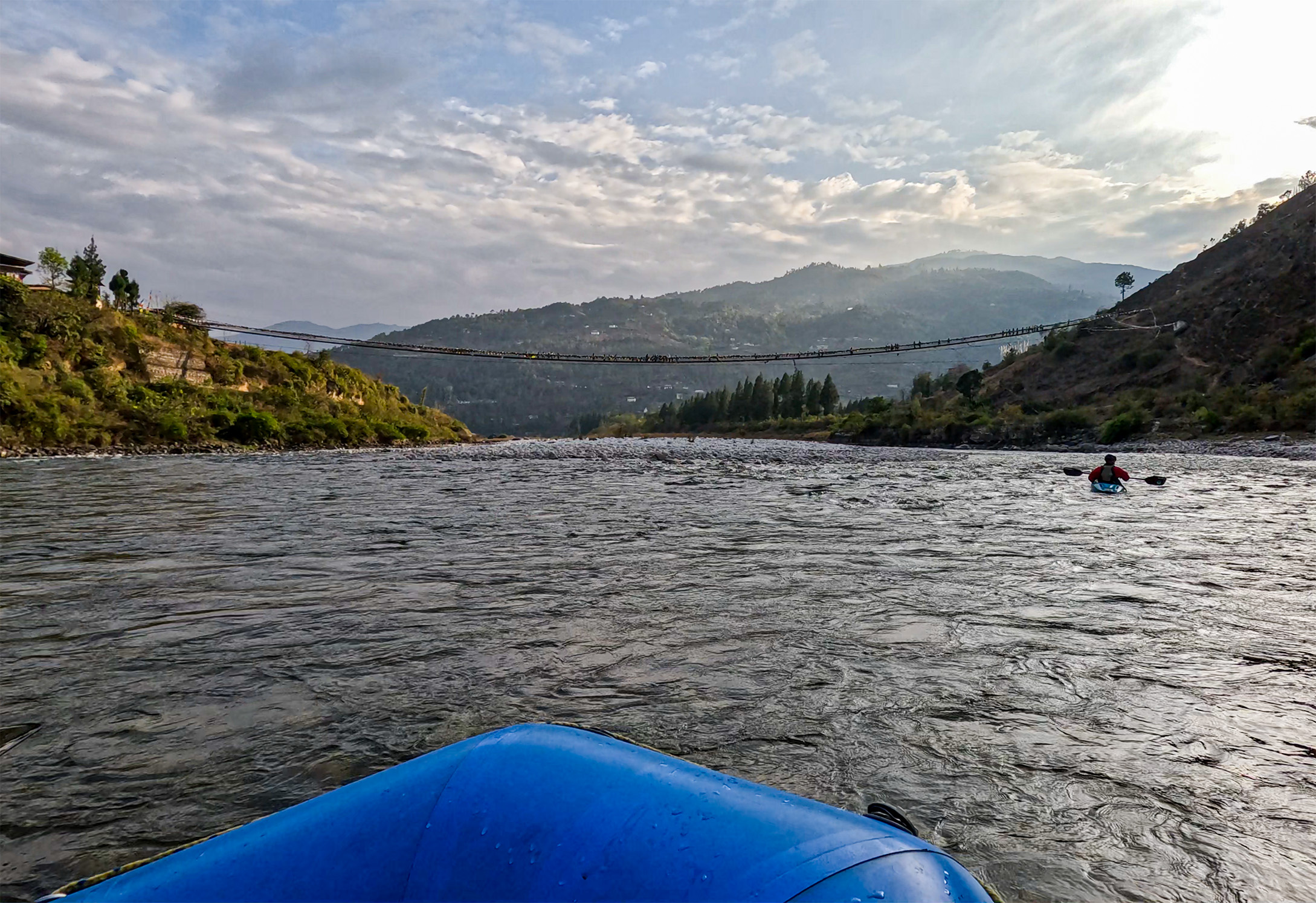
Back to Top
Link to Photo Gallery

Day 8: Gasa
We left Punakha in the morning around 8am as usual and headed out on our drive to Gasa. Until about 10 years ago, there was no road most of the way to Gasa so people had to walk. Now the road is mostly paved, although narrow, and takes you on a scenic drive along the river and up into the mountains. It passes through the National Park. We saw a lot of waterfalls, views of the river below, and various trees in bloom. The National Park is home to a lot of longer treks that are popular to go on mostly in the Fall season. In the National Park, you also have a chance to see wildlife including tigers, leopards, and the national animal, the Takin.
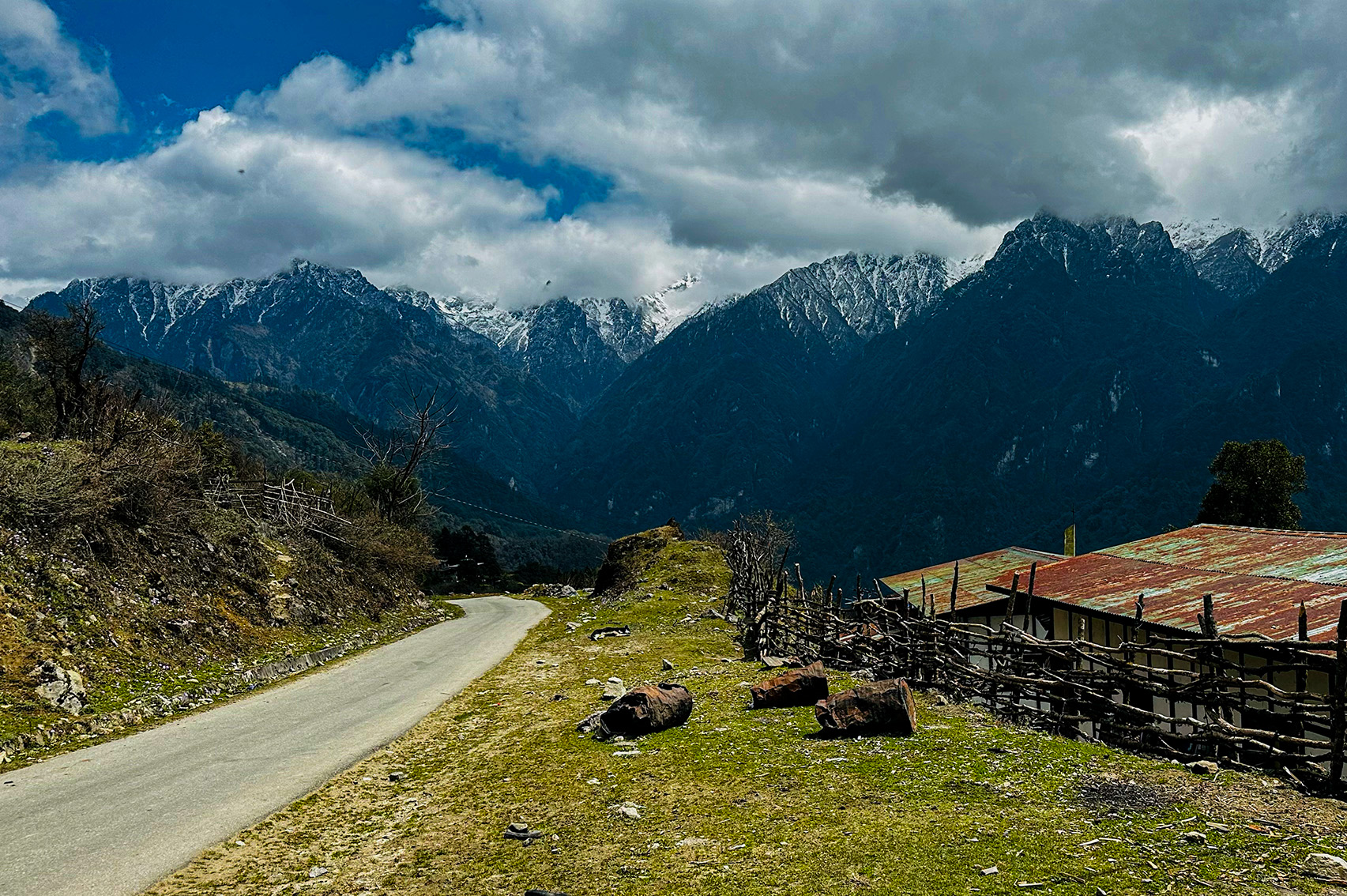
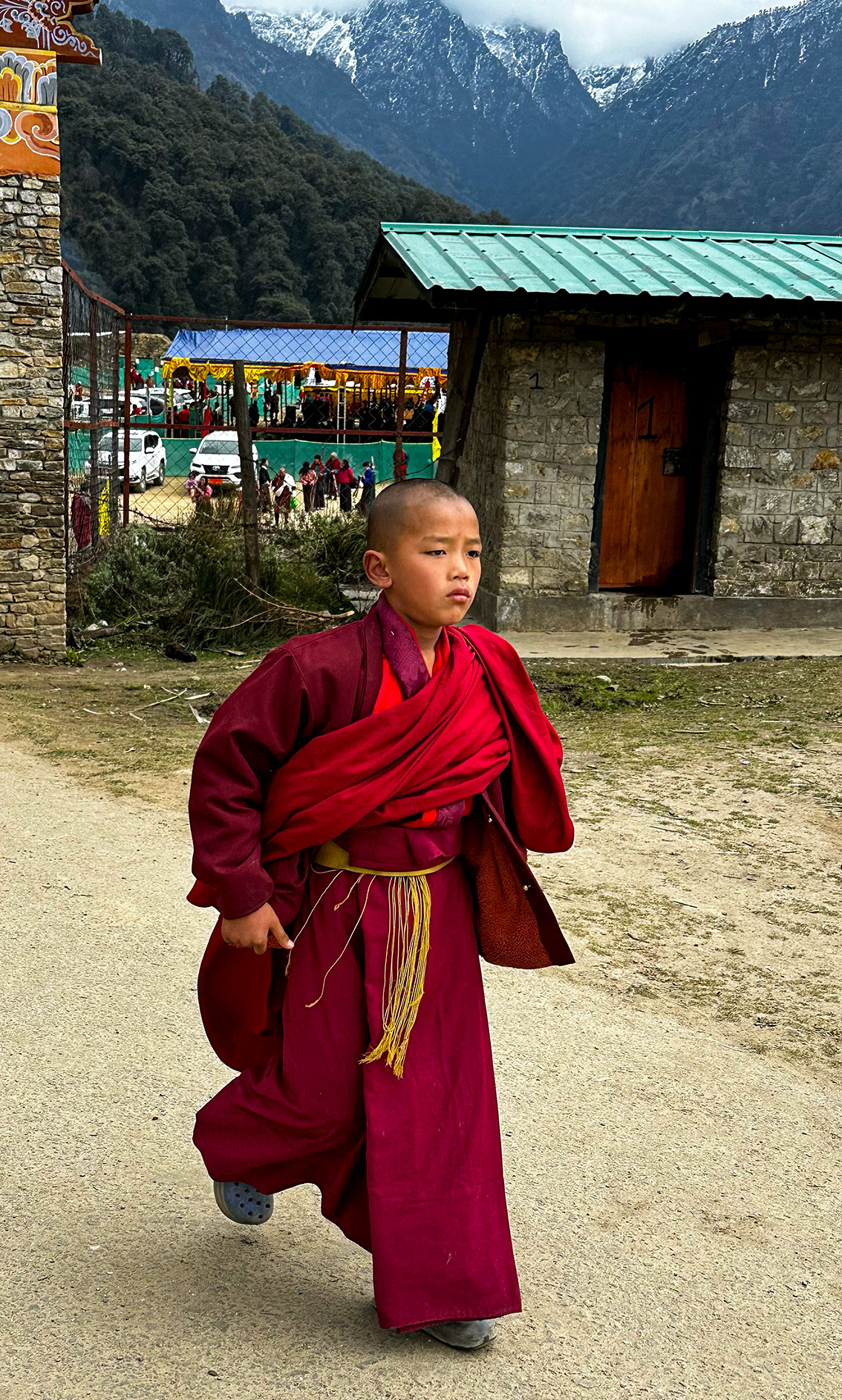
Gasa Dzong
We weren’t really sure how long it was going to take to get there, but our guide thought it would be about 3 hours or more. With only a few stops to stretch our legs and take pictures, it was just about 4 hours by the time we finally reached the Gasa Dzong. The Dzong was beautifully set with the white mountain peaks ringing all sides. Some of the peaks were covered by clouds, but we were able to catch glimpses of them. We ended up being the only visitors to the Dzong at that time, which made it very peaceful. We soon found out why, as all of the people in the town were attending the center of town where they were holding a world peace prayer. They were gathering to pray for world peace for 5 days, and this was the 4th day! They start early in the morning and are there all day, with breakfast, lunch and dinner included. People from communities up in the mountains attend too, walking many miles to get there. There were many people from the mountain village of Laya, who look and dress a bit differently. Trekking to Laya is something we had been interested in doing if we had more time. Unfortunately, we didn’t get a chance to hear the prayers because they were breaking for lunch right when we arrived.
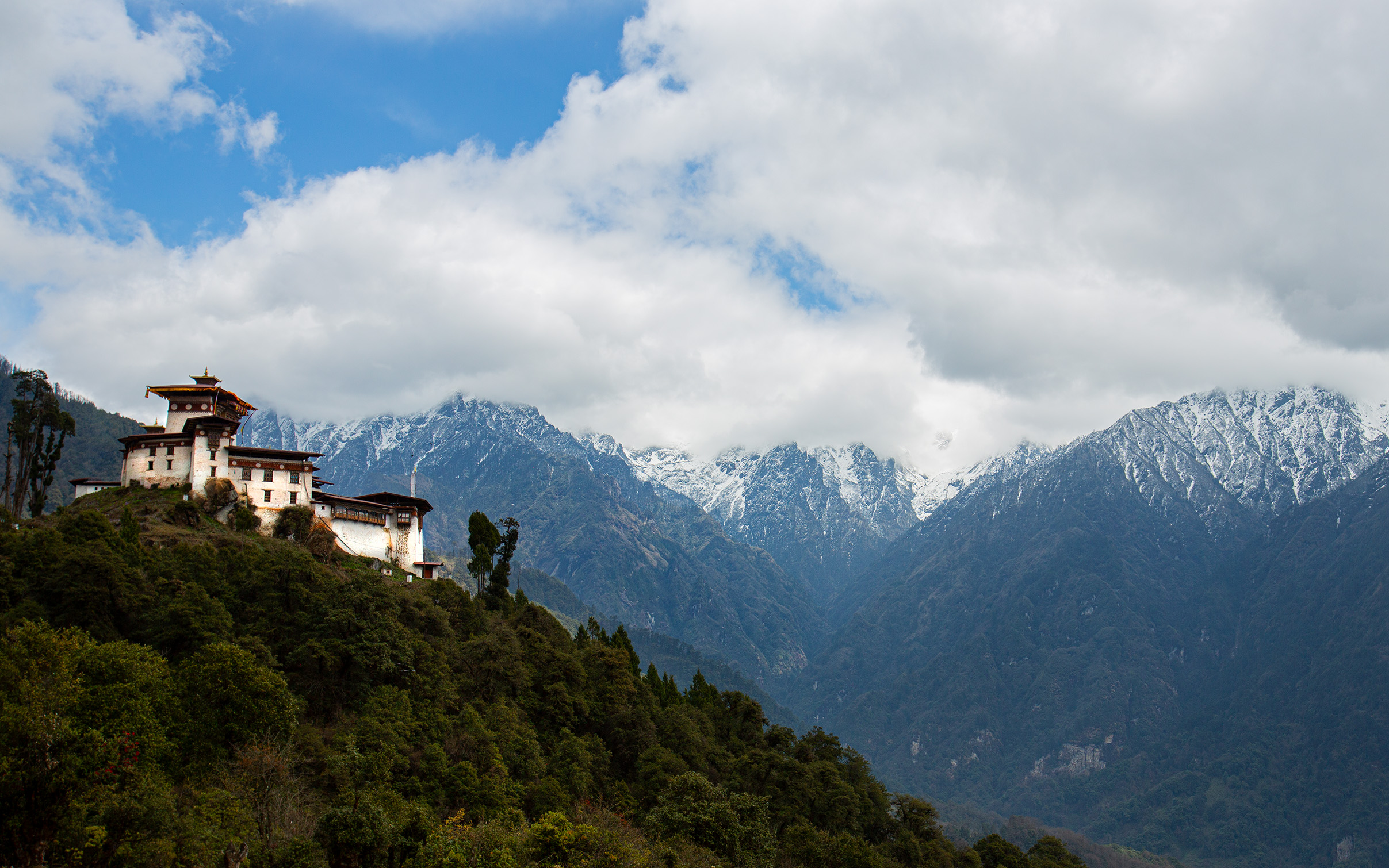
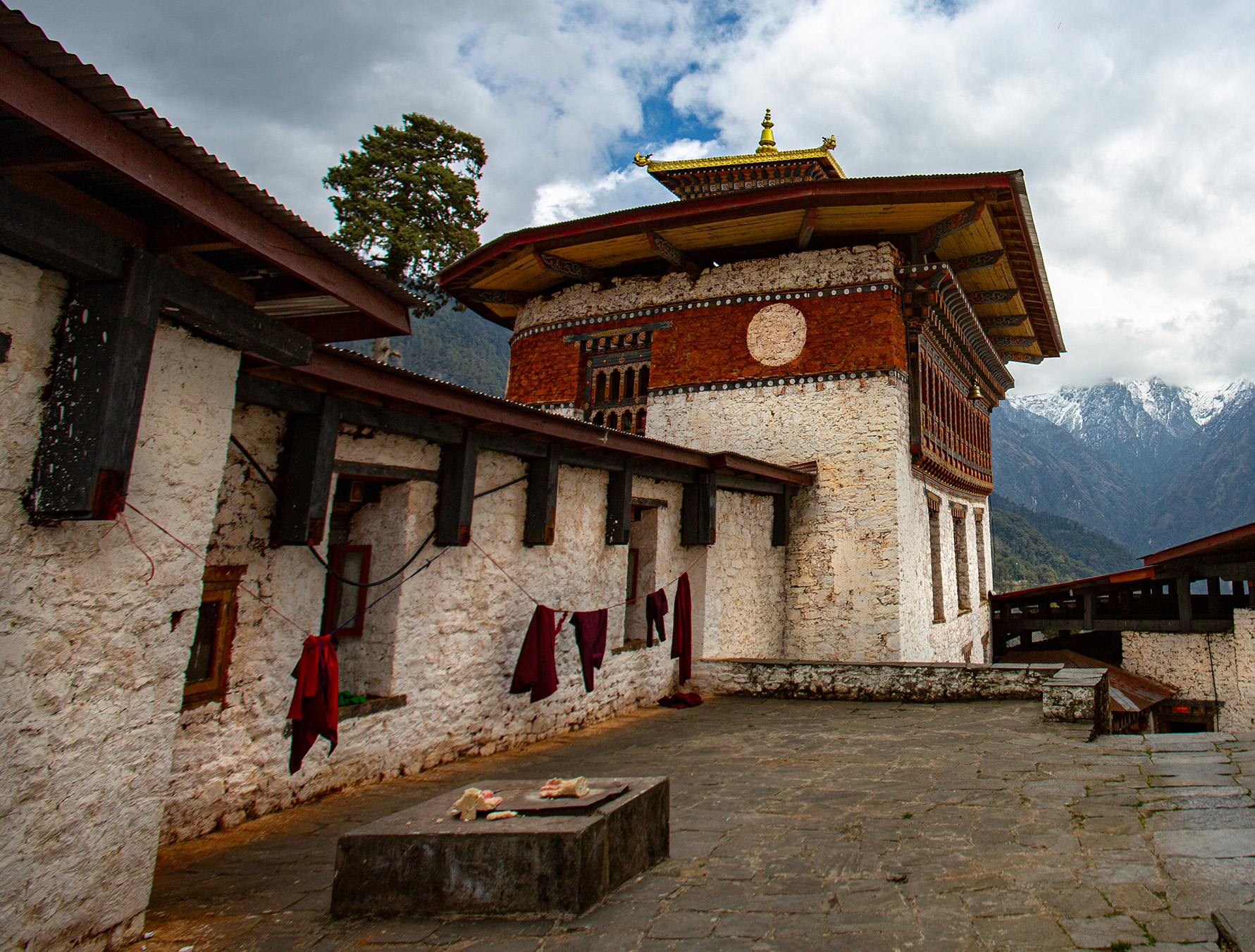
Local Farmhouse Stay
We met the owner of the farmhouse and he showed us the way to the house where we would be staying. The farmhouse had a large garden, several cows and horses, and amazing views of the mountains. It was quite cold and dark in the house, although they did turn on the electric lights in the evening. We sat down for tea and lunch which consisted of red rice and a few vegetable dishes mixed with spicy sauces. They really know how to prepare vegetables well, we have found all of their dishes to be very well cooked and tasty. They add chilis to everything and it's spicy but not too spicy.
We visited the local hot spring (see below), and after that, we drove back up the bumpy road to our farmhouse where we were shown our room and were able to set up our bed for the night. The bed was basically a very hard mattress on the floor and there were many thick blankets that we could choose from to make the bed. We put down several blankets for the bottom and several blankets for the top, in hopes of keeping warm. The windows of our room had large cracks in the wood all around and we anticipated a very cold night. We gathered in the kitchen for dinner, where everything was cooked around the wood stove. We sat on the floor with the family members and our two guides who helped translate for us when needed. It was interesting for us to see how a local Gasa family lived.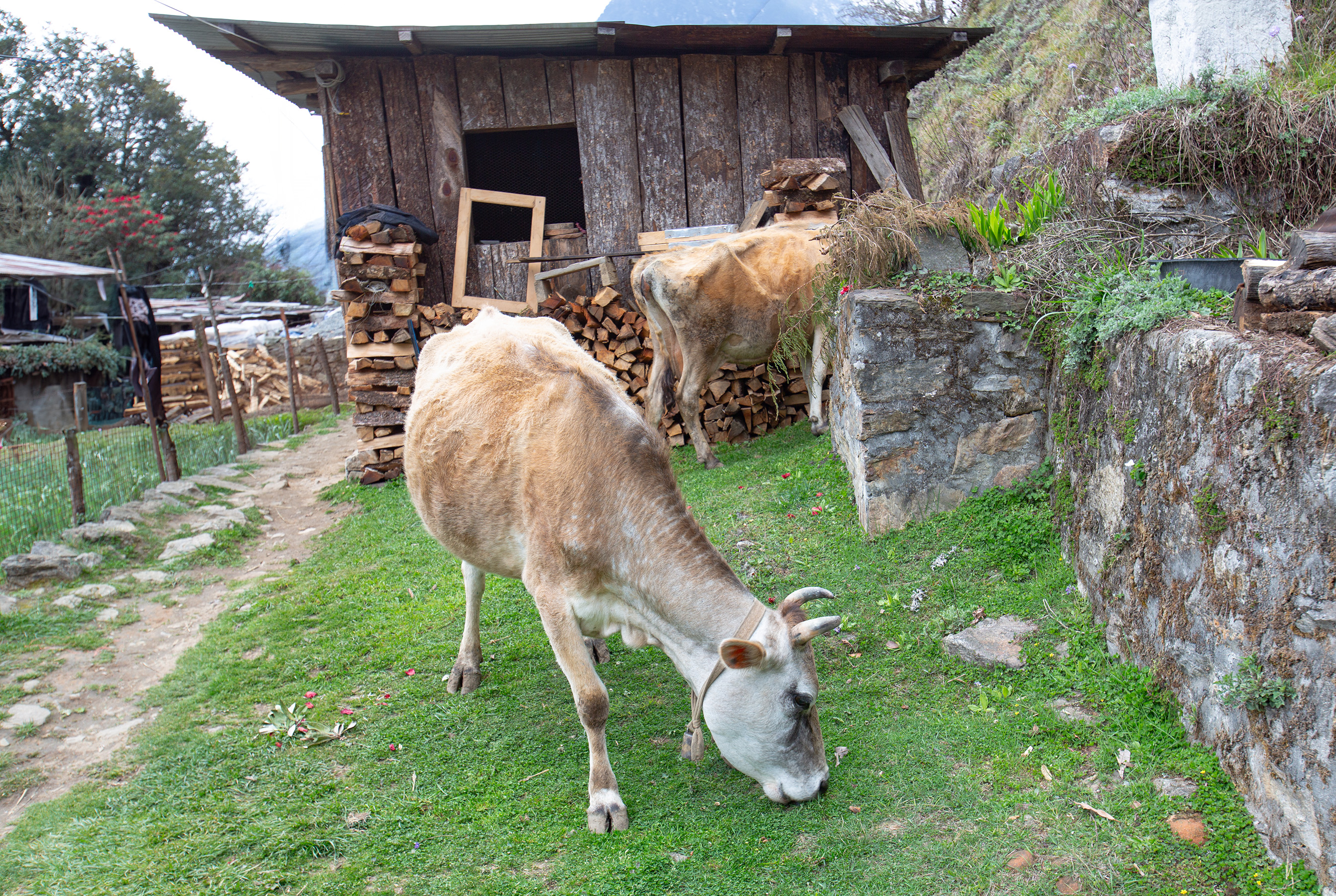
Gasa Hot Spring
After lunch, we visited the Gasa Hot Springs which are all the way down the hill by the river. We thought maybe everyone would be busy in town, but the hot spring was also very busy. We had to separate by men and women but both were outside nearby. Each had 4 square concrete pools to sit in with the spring water pouring in. We heard that people come from all around to heal their ailments in the hot spring. There are a few places to rent nearby and some even come to stay for 20+ days, soaking every day to be healed. We stayed in the hot spring for about 2 hours, but many were staying longer. Near the end it began to get even more crowded. You could tell the people really believed in the healing powers of the water, as many of them were scooping up and drinking the water as it came out. We hiked up the hill to see another spring and our driver wanted to collect some water from there. It was smelled of iron. There was also a spout where sulfur filled air was coming out that people sniff to help their sinuses.
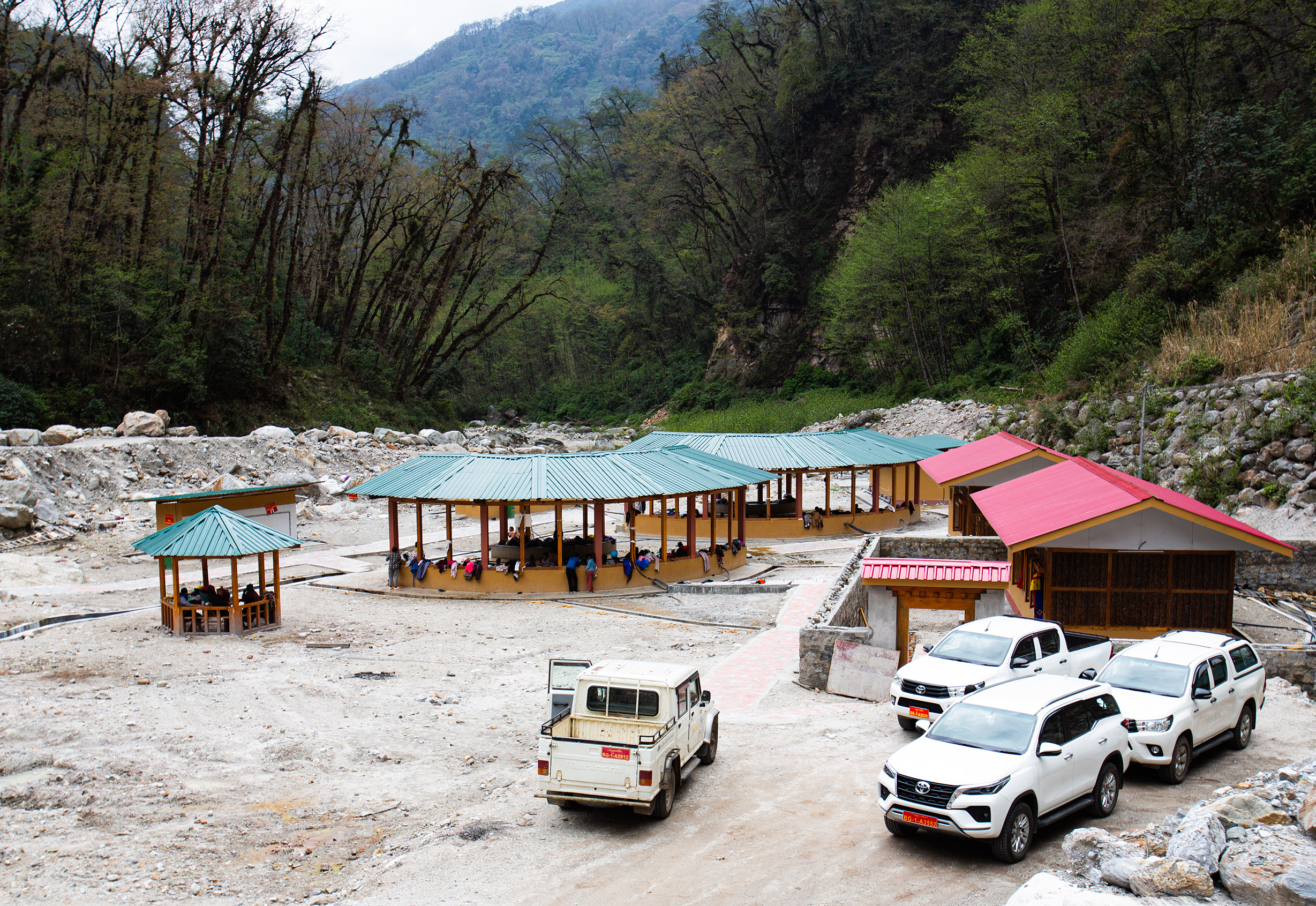
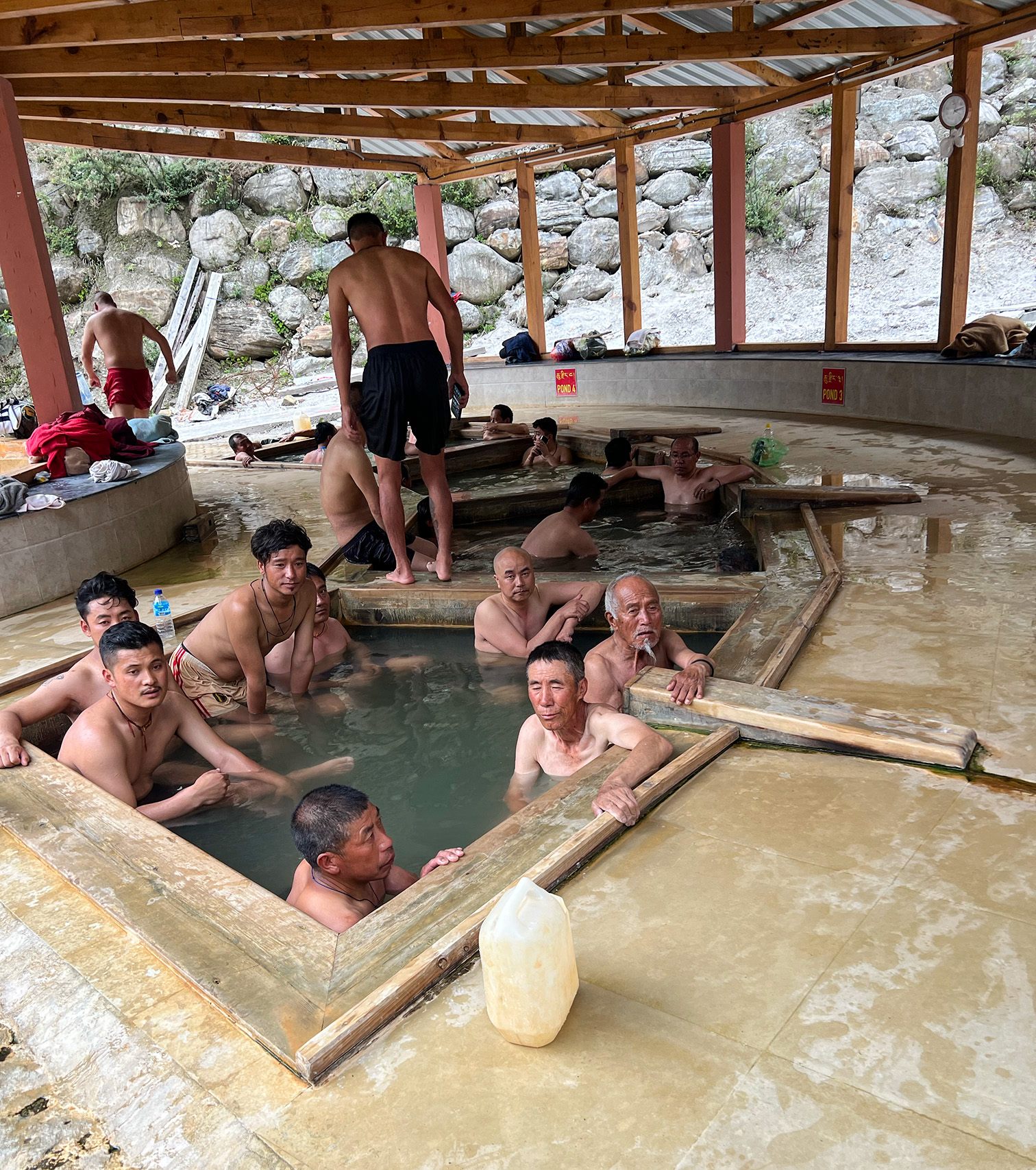
Back to Top
Link to Photo Gallery

Day 9: Thimphu
After a cold night, we sipped some hot tea and had a small breakfast around the kitchen stove. After that, it was time to say goodbye to our Gasa family and get back in the car, headed back down the road to Punakha and the continuing on to our final stop, Thimphu, the capital city. After many, many hours of driving, our guide brought us to a local restaurant in Thimphu called the Zombala Restaurant. We tried several things from the menu including crispy chili fries, momos, and a noodle soup. We had a busy afternoon ahead of us in Thimphu.
Zorig Chusum art institute
After lunch, we visited the Institute for Zorig Chusum, which was an art school where young adults complete intense training in various arts. We were able to observe them in their training anything from fine painting, wooden mask carving, embroidery, blacksmithing, stonework, clothing making, and many more. The instruction was extremely detailed in the exact measurements and techniques that each of these things should be done. It was really cool to see these local crafts being taught and made right there and we appreciated how they let visitors in to observe.
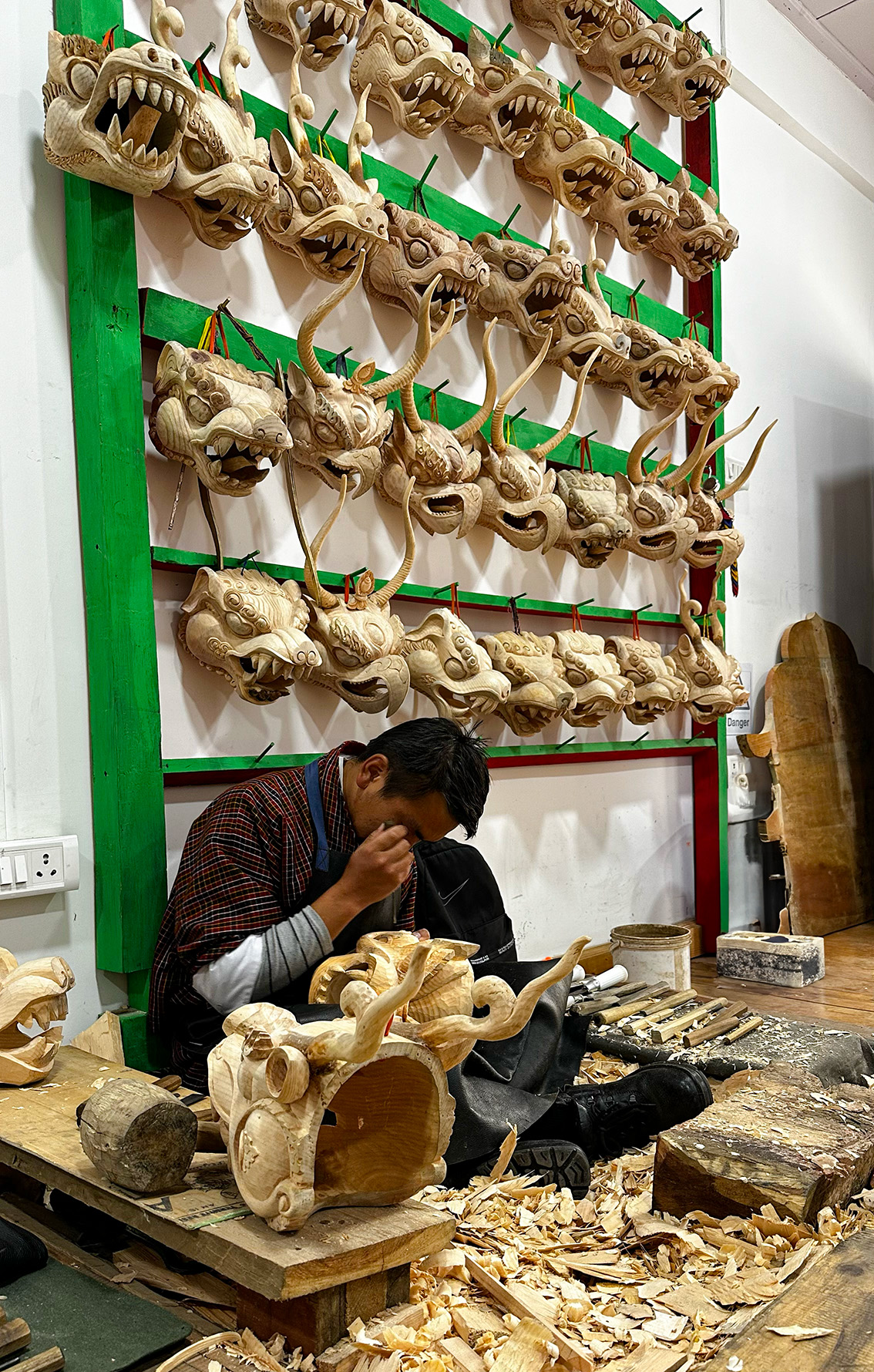
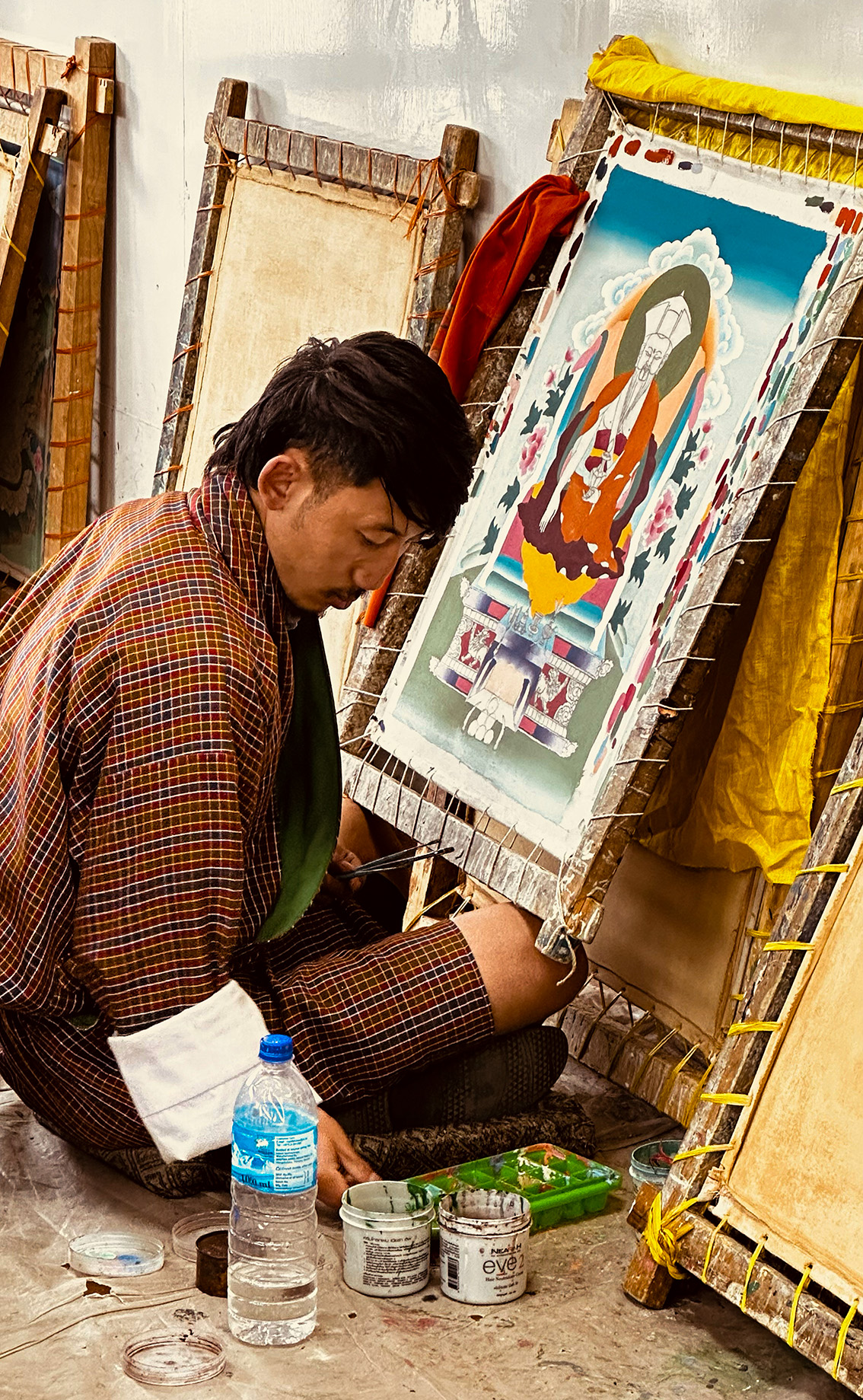
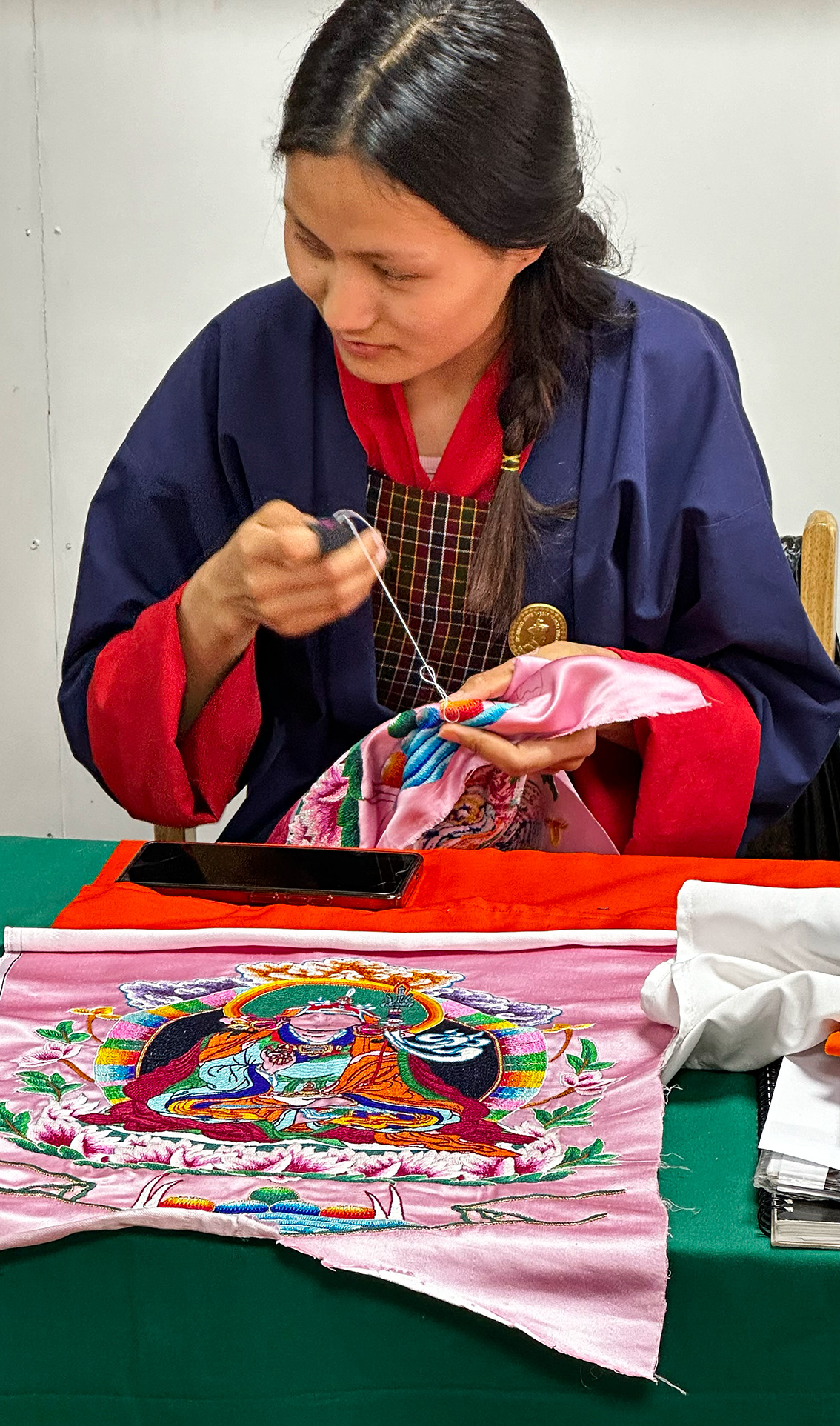
Royal Takin Preserve
After the art institute, we stopped by the Royal Takin Preserve, dedicated to the national animal. The preserve is also home to other animals, some of which are being rehabilitated. The Takin is said to have been created by the Divine Madman. Upon feasting on an entire cow and goat, he attached the skull of the goat to the cow bones and brought them to life, creating the Takin. The Takin was indeed a fascinating creature, with a bulky furry body, slender goat like legs and hoofs and a mix of goat and cow head. Very strange!
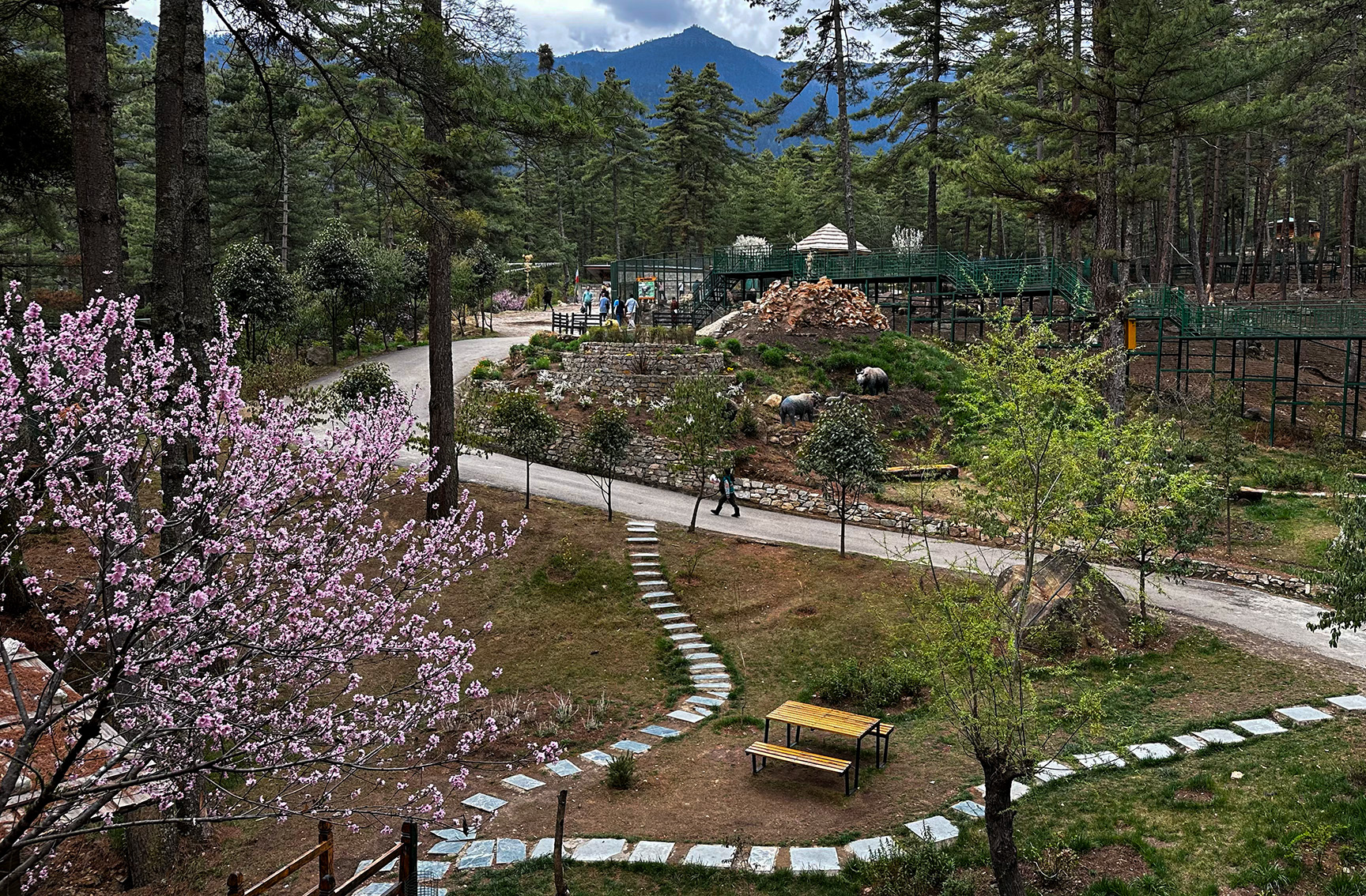
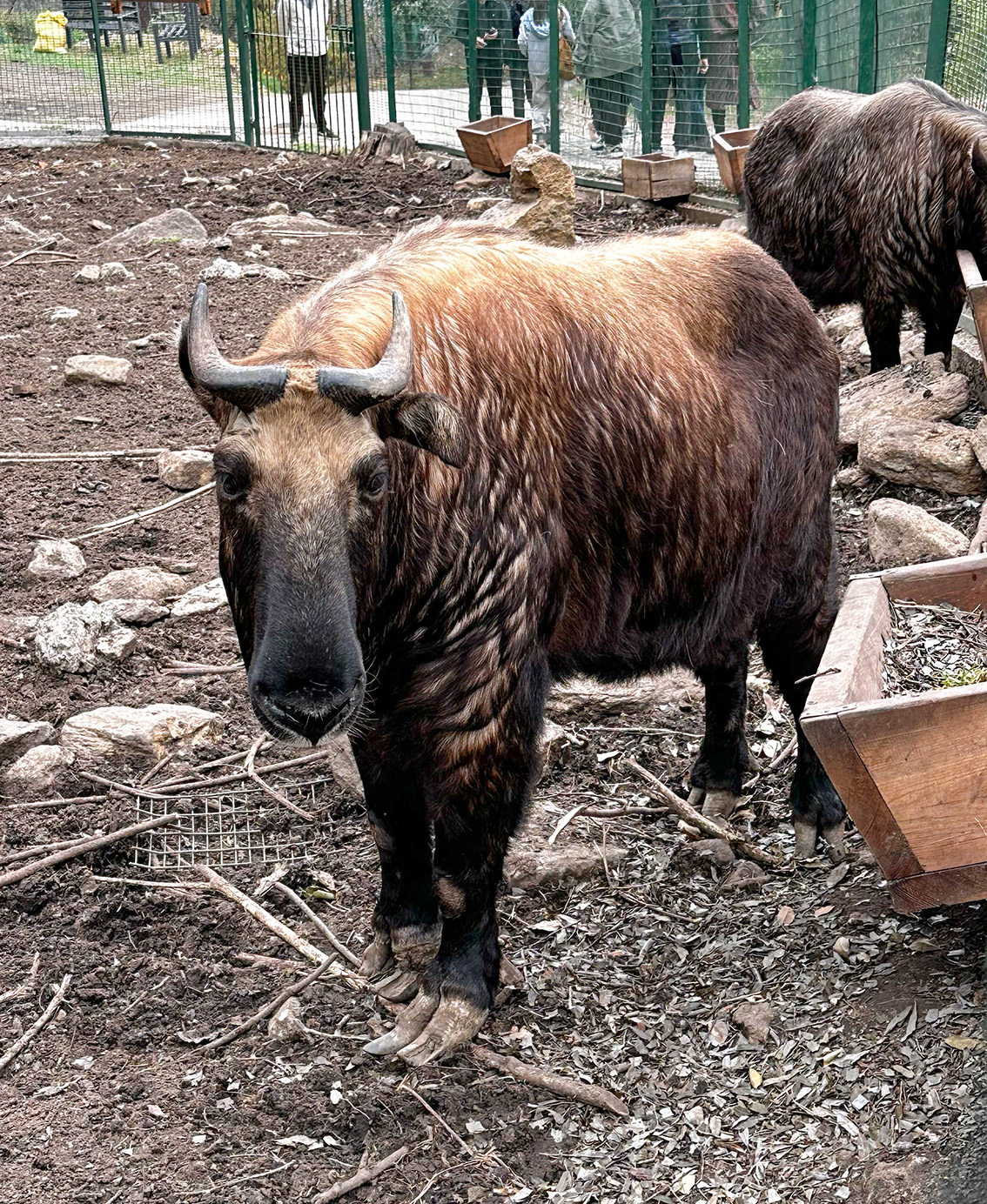
Buddha Dordenma, Thimphu market and dinner
We then drove up a hill to see a giant golden buddha statue completed in 2015. One of the largest buddha statues in the world, this project is said to have cost 100 million dollars, sponsored by a Singaporean businessman. Inside the base of the buddha, you can enter and see over 100 thousand smaller buddhas.
We returned to the city and visited a long strip of shopping stalls selling many Bhutanese souvenirs. We enjoyed the shopping and chose a few items to bring home with us before going to our hotel, Le Meridien Thimphu. After checking in, our two guides had planned a special dinner at the Heritage Home restaurant. We sat cross legged around a low table and were served many dishes, some we liked and some not. The dinner included butter tea, rice, various vegetable dishes, a thin soup, and a few meat dishes. It was quite authentic, and we said our thank you and goodbyes to our new friends before returning to the hotel. In the morning, we had a very early departure in order to drive back to Paro airport and fly to Kathmandu.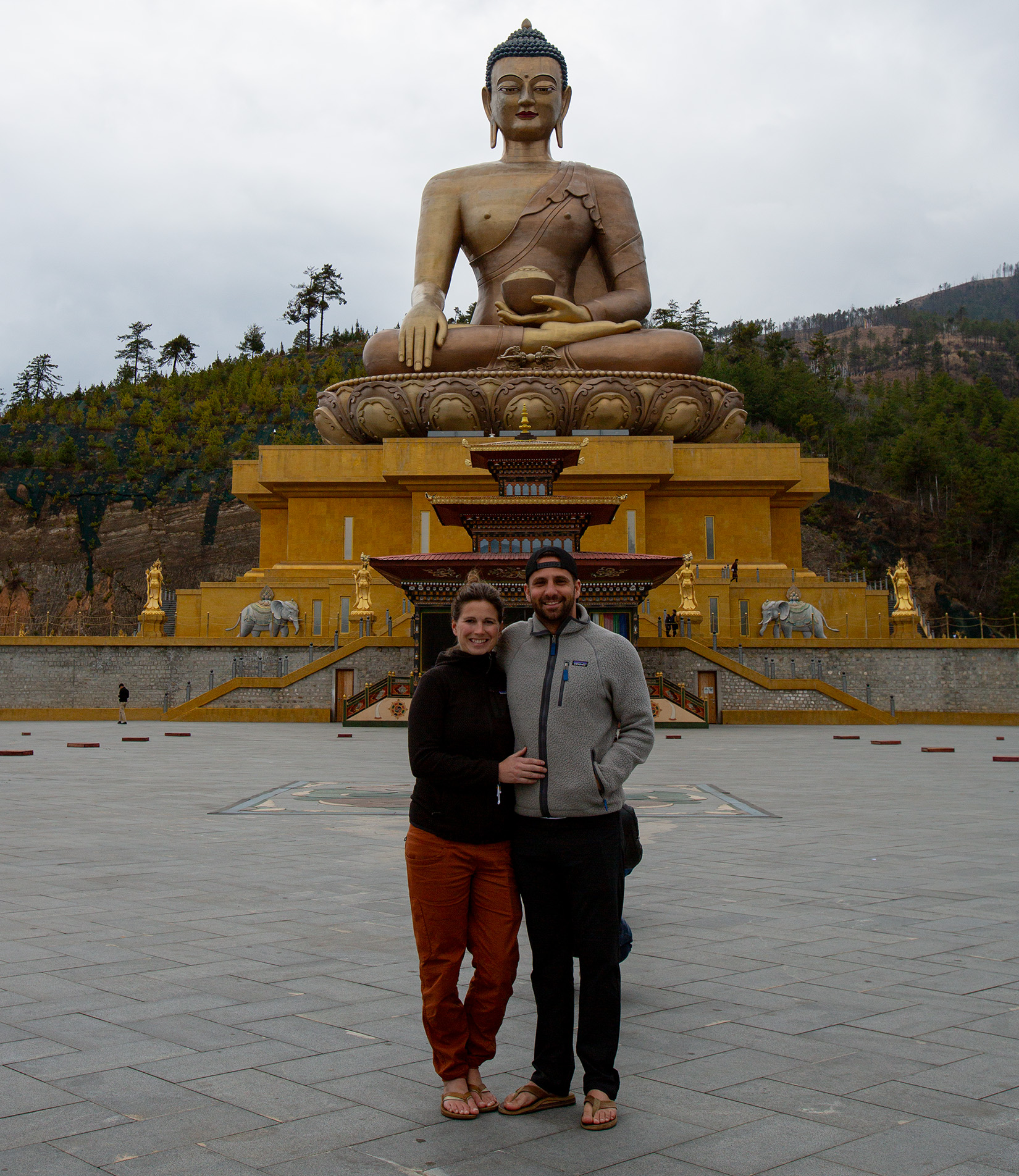
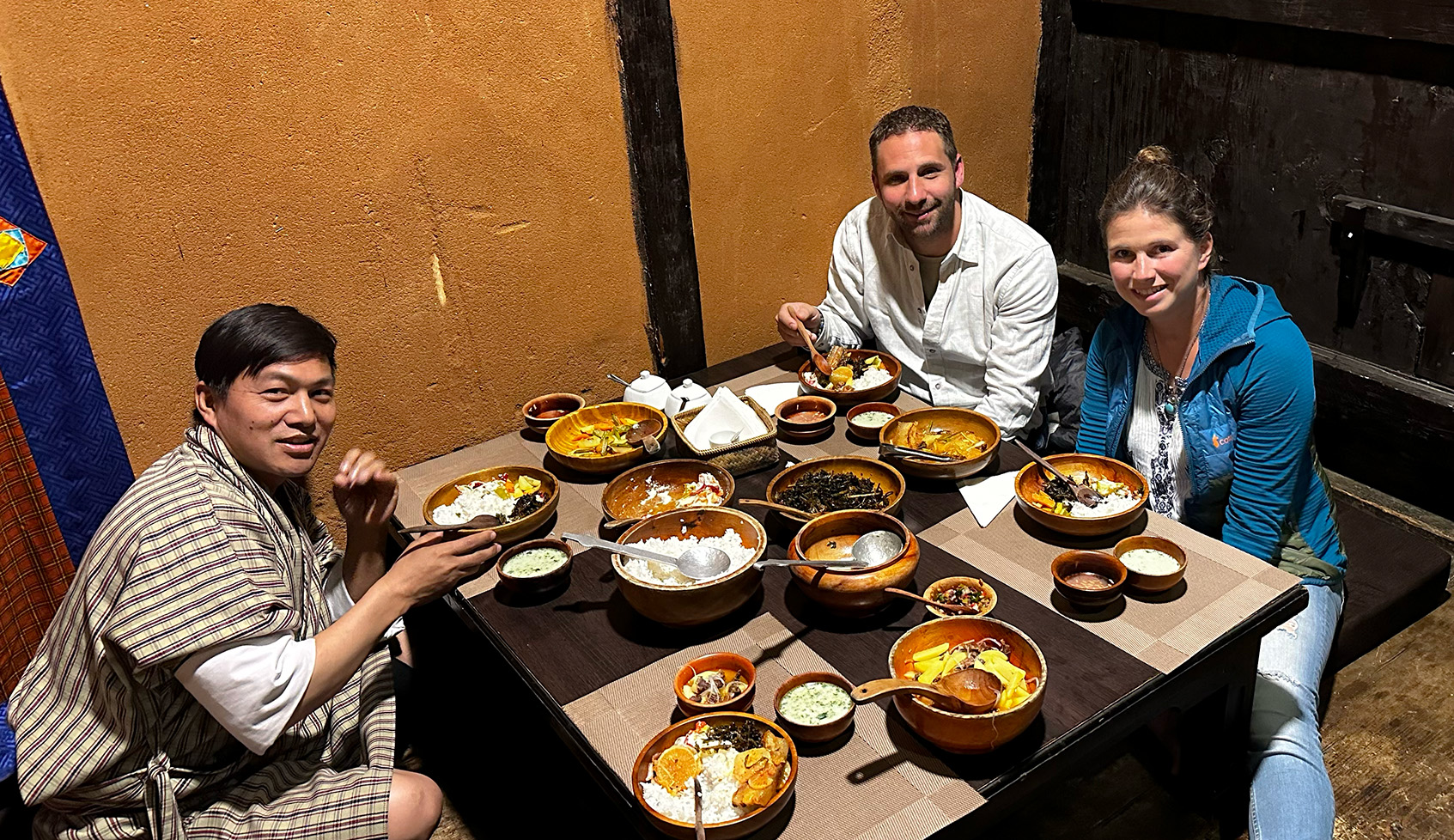
Back to Top
Link to Photo Gallery

Day 10: Kathmandu and travel home
On our early morning flight, we flew into Kathmandu and had all day to spend exploring the city, since our departing flight home wasn’t until 11pm. We briefly asked around about lockers to store our things at the airport, but unfortunately, that wasn't available. We decided to leverage our platinum marriott status and took a taxi to the Marriott hotel, where we politely asked to store our bags. They did question that we weren't actually staying there, but luckily agreed. We said we would be back at the end of the day and headed out on foot. We walked a long way, finding some delicious and cheap Indian food for a snack along the way. We had a few destinations to check out during our long day in Kathmandu.
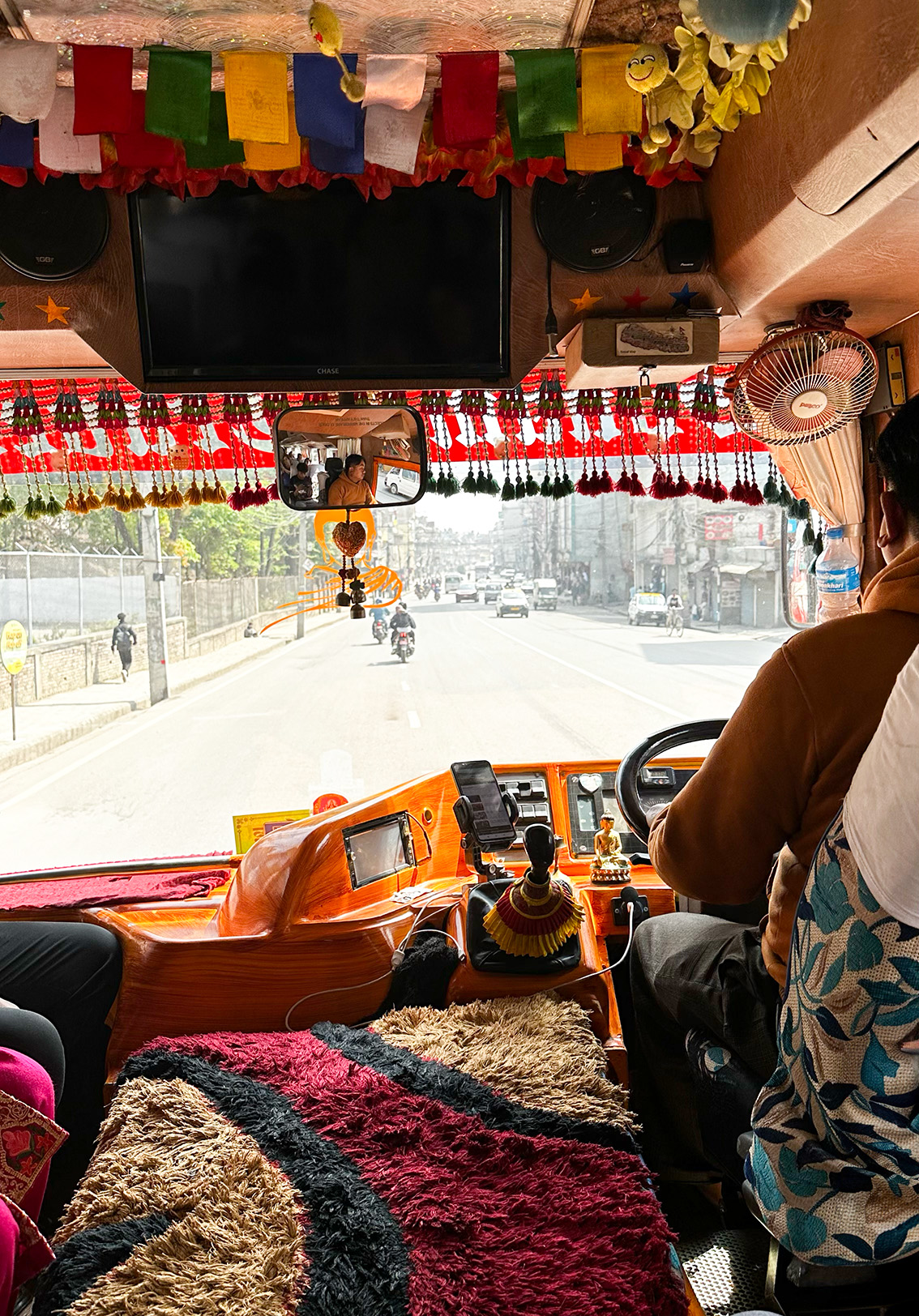
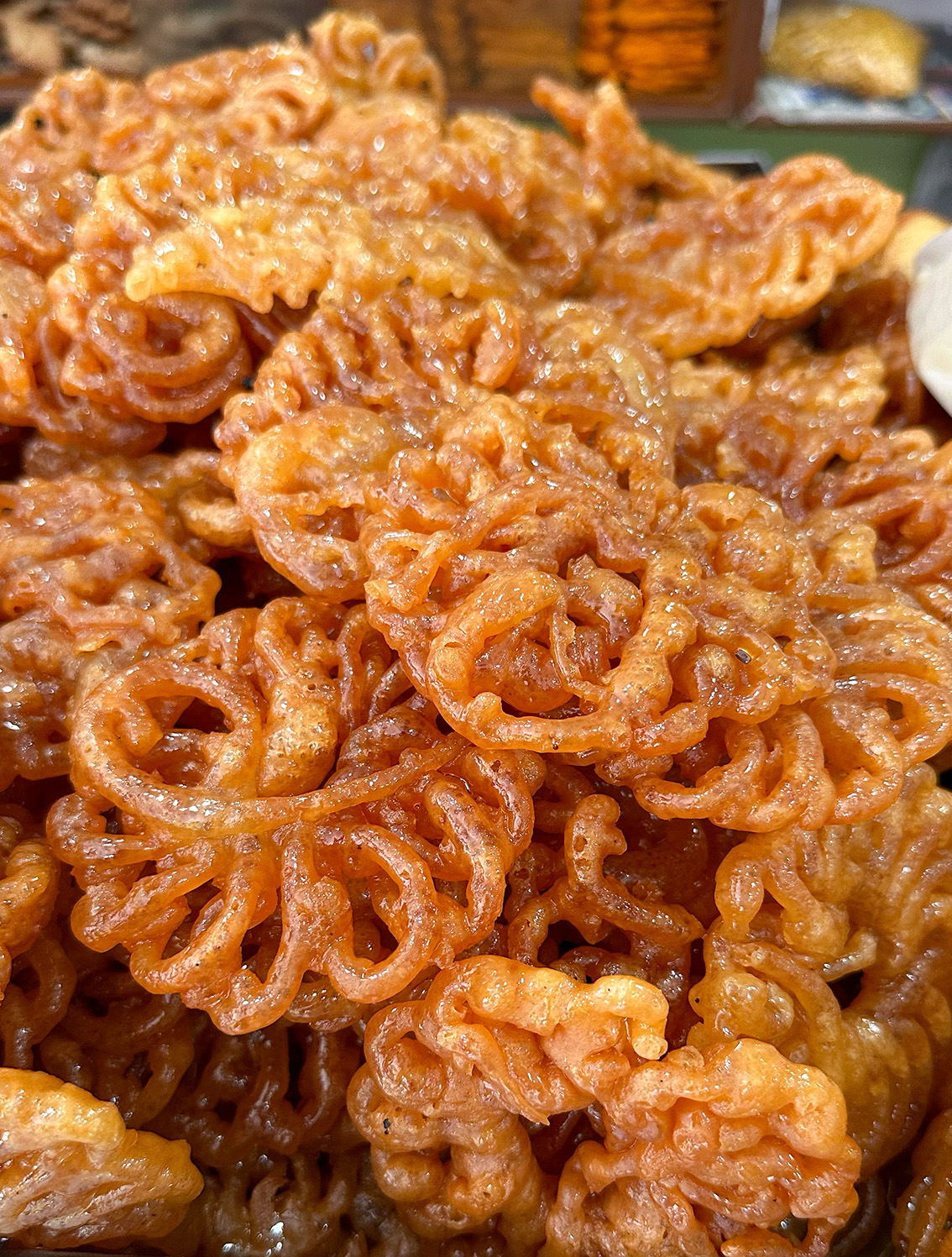
Boudhanath Stupa
First stop, we visited the Boudha Stupa, a popular UNESCO world heritage site, standing more than 100 feet tall. It was impressively decorated with flags, and we admired it from below and then found a rooftop bar where we could see it also from above. The large dome of the stupa is said to represent nature's womb, with pairs of all-seeing eyes of the Buddha on all sides. The entrance fee was only a few dollars. Around the area there were many shops, where we were attracted to the singing bowls and spent time picking one out to take home with us.
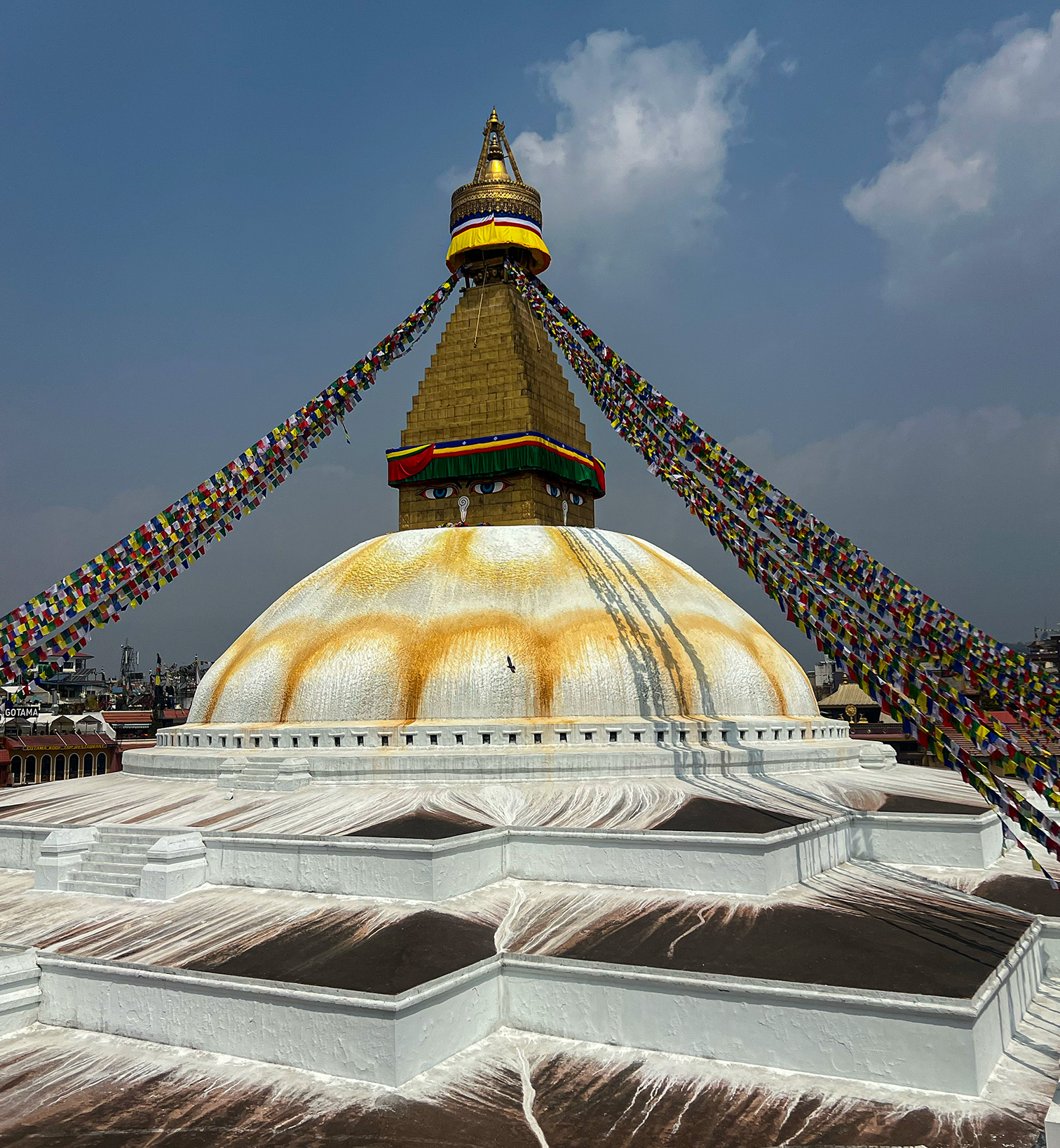
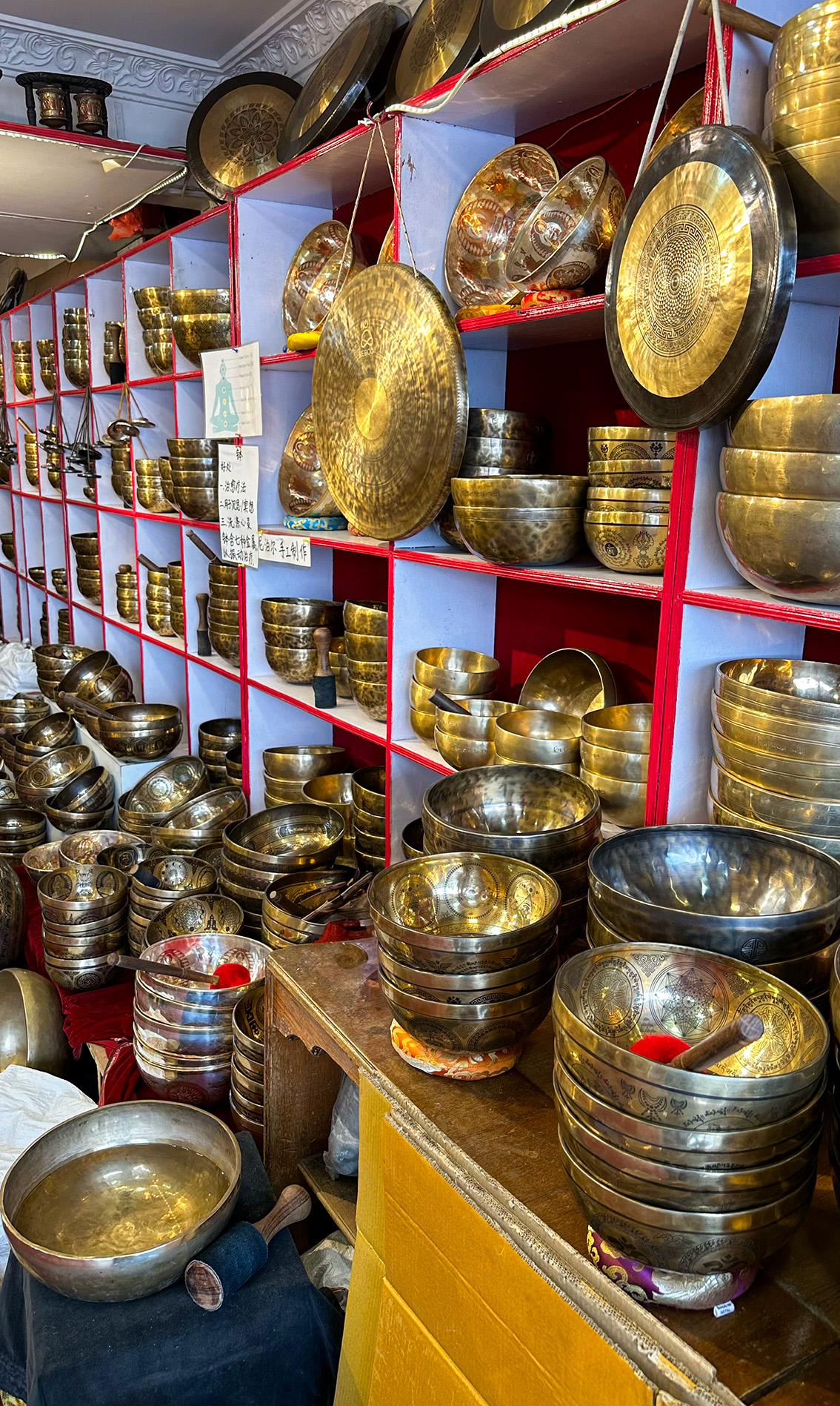
Bhaktapur
We hopped on the local bus, quite the experience, to travel a few kilometers out of the city to the small historical town of Bhaktapur, also a very popular place to visit for tourists. We found the entrance fee ($15pp for foreigners) to be quite high for the area, but paid up and walked in. Inside there are a number of large squares you can visit with streets in between. There are a lot of crafts for sale, and many times you are see they are making them right there.
A major stop is the 5 tiered pagoda in one of the squares. Many things around the area are still being rebuilt after a devastating earthquake back in 2015. It definitely made us think about the fragility of these old buildings. Still, we made our way up to the second story restaurant where we could enjoy some spicy momos for lunch while overlooking the pagoda. We explored the area where they were making pottery and smaller souvenier animals, picking out a few to bring home. There are also many temples and intricately carved doorways and statues to enjoy, making Bhaktapur worth the trip.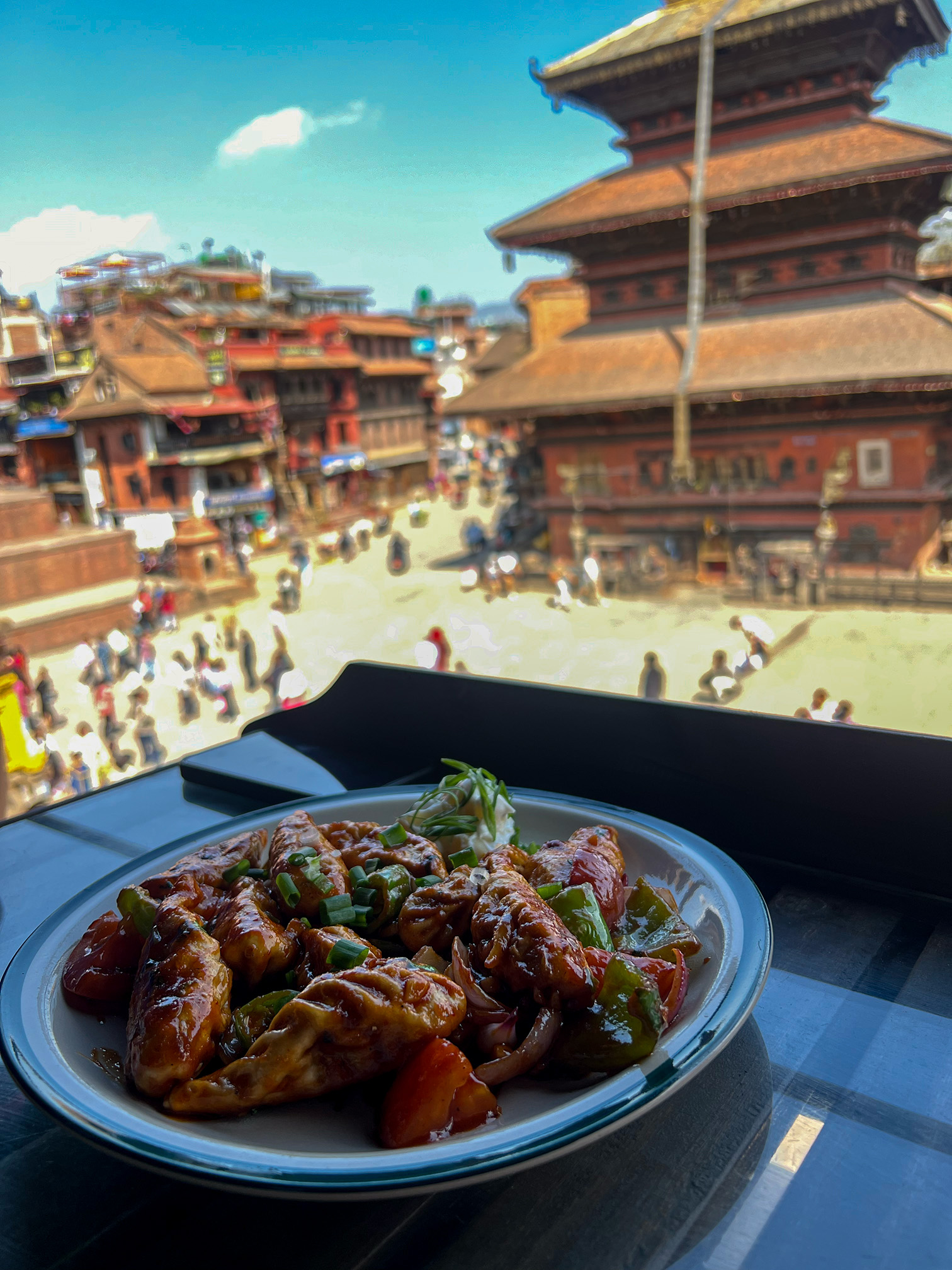
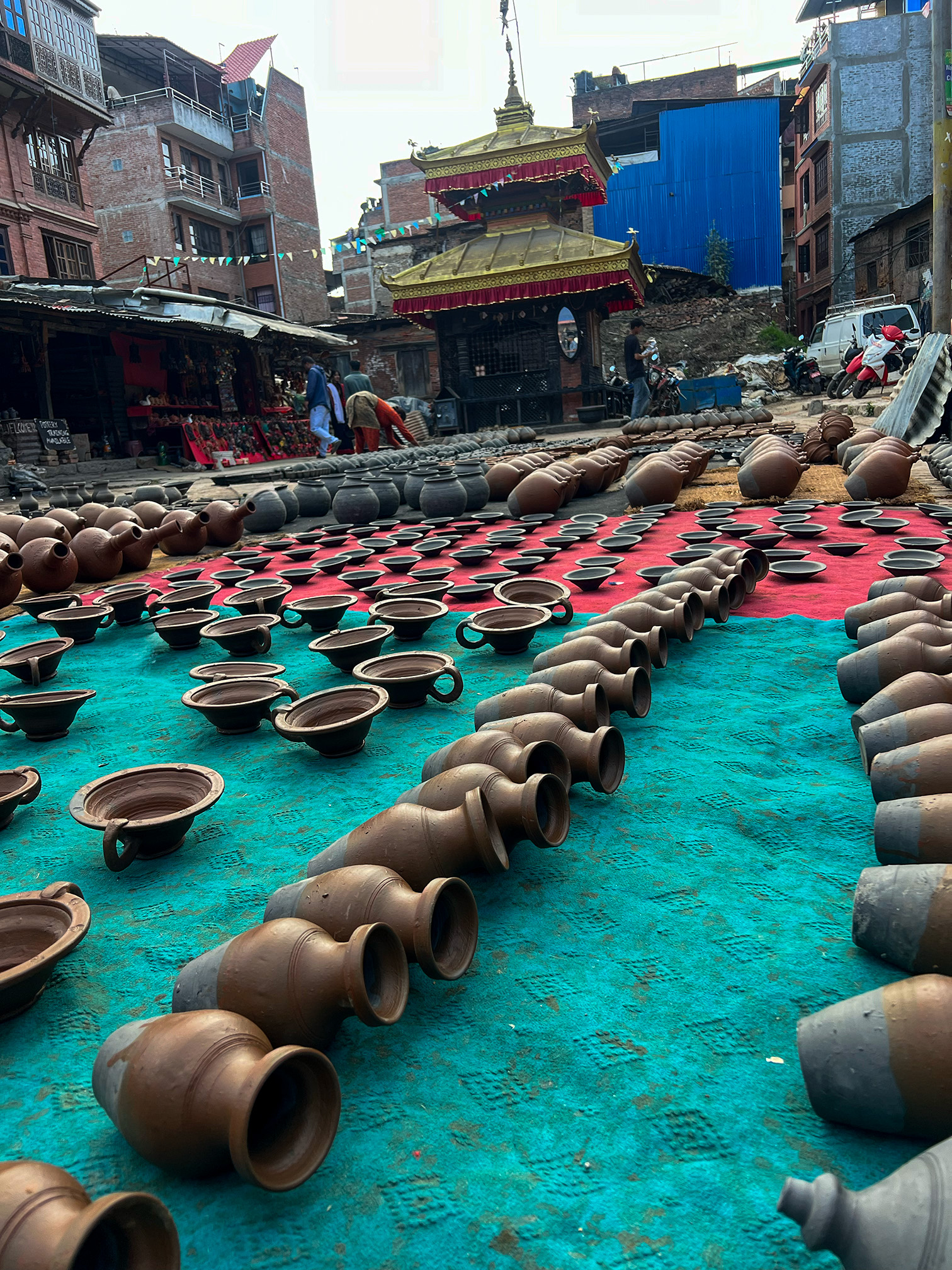
Swayambhu, the Monkey Temple
Back on the local bus, we fought through the city traffic, making our way toward our next destination, Swayambhunath, also known as the Monkey Temple. This temple complex is said to be one of the oldest in Nepal, and features a large dome surrounded by 5 meditating buddhas. Perched on top of a prominent hill in the city, this temple is one of the major pilgrimage sites for devotees.
We made our way up to the top of the hill, along with the crowds of others. But even with the crowd, there was a very peaceful atmosphere to the top once surrounded by the many statues and shrines both Buddhist and Hindu. There were indeed a lot of monkeys both on our way up and also at the top of the hill smongst the temples. They provide a lot of entertainment with their interactions with the tourists and their many photo ops. We walked back down the hill and caught a taxi back to the center of town where we wandered down some of the most popular tourist shopping streets, admiring the sights as the sun was setting. We had a hard time deciding on a restaurant but finally tried a thai place that ended up being very good. After dinner, it was time to head back to the Marriott to retrieve our bags. We relaxed and changed clothes, preparing for the long journey home. Then, got a taxi back to the airport where we caught our flight to Singapore and beyond.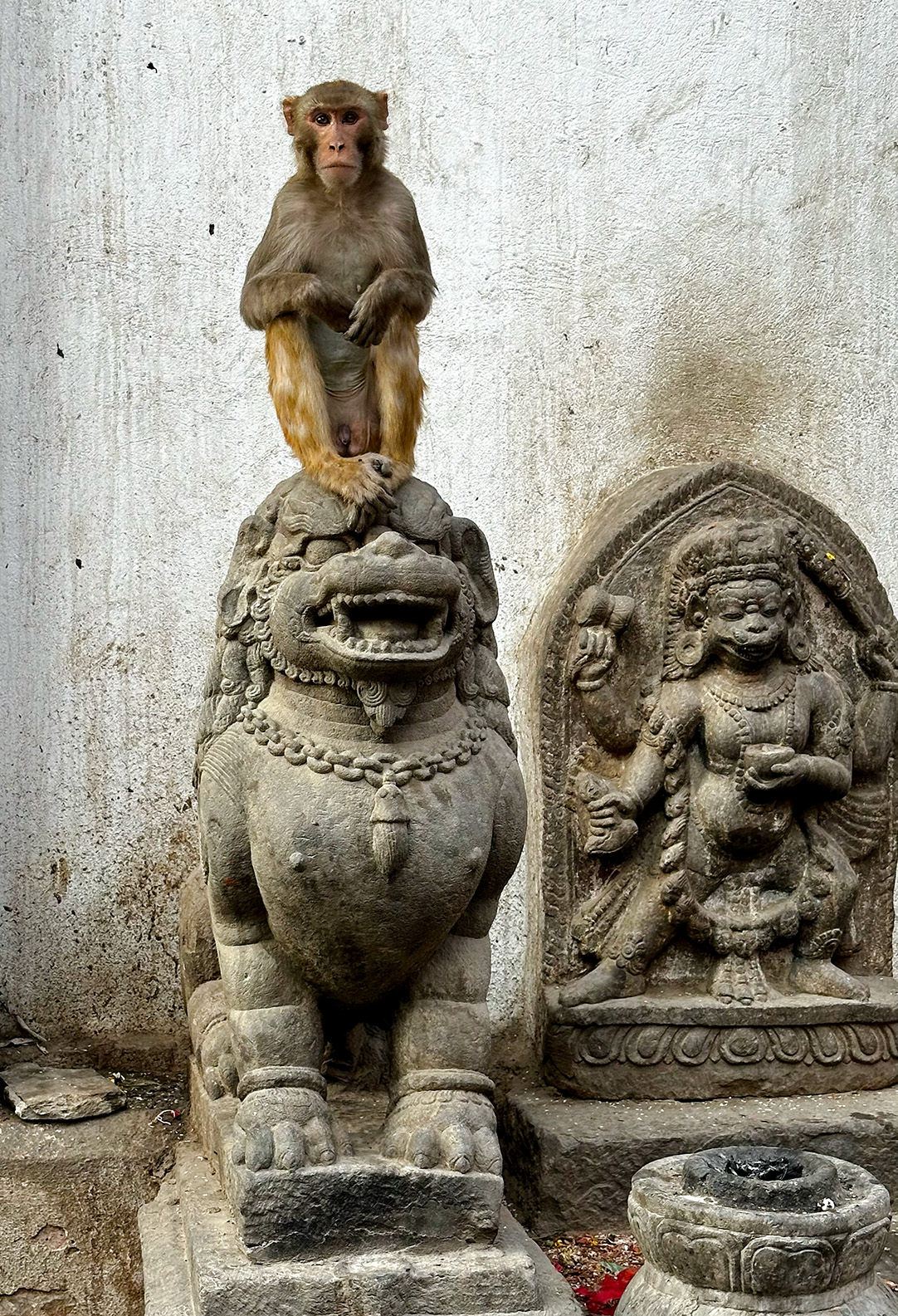
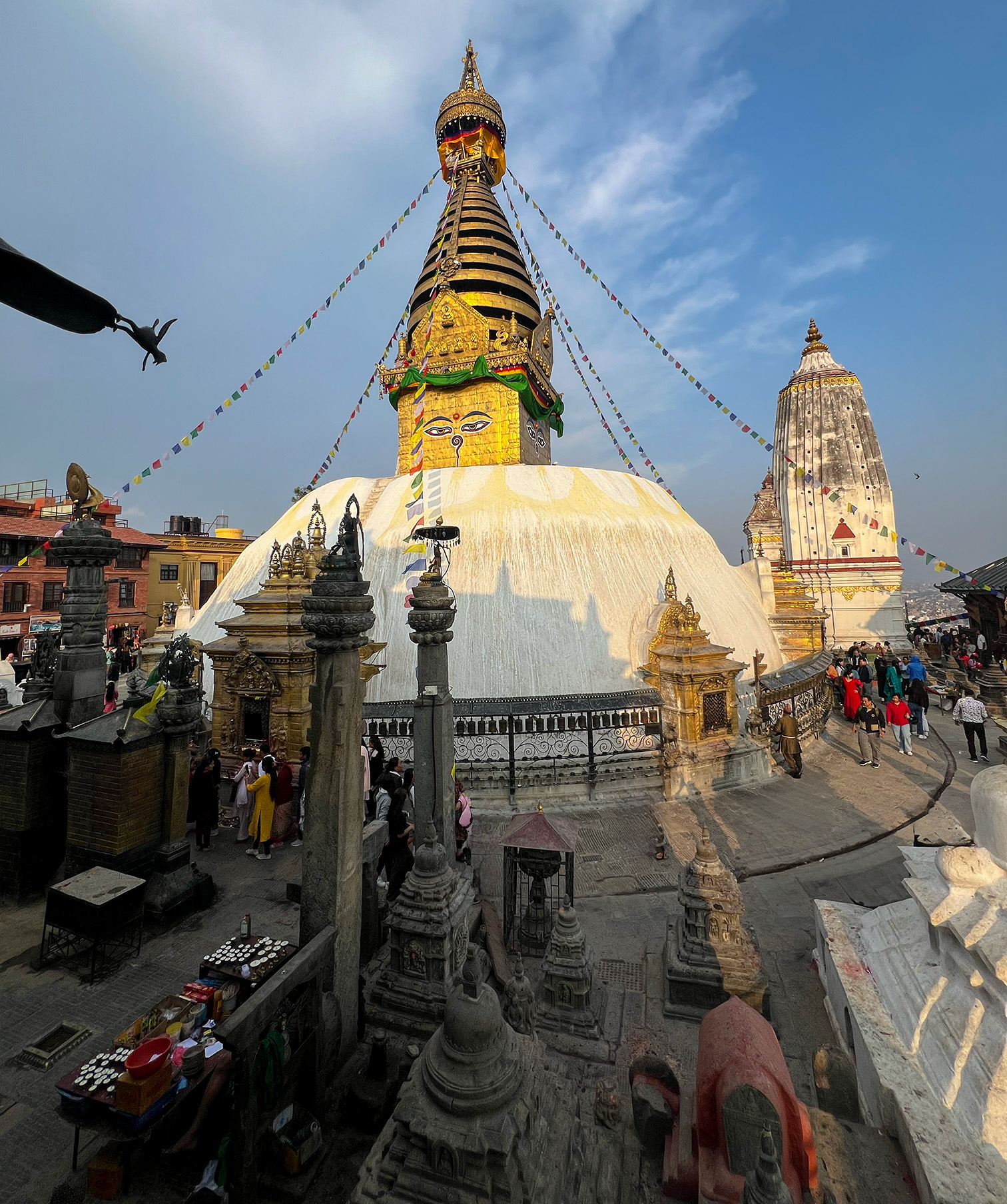
Back to Top
Link to Photo Gallery

Leave Us A Comment!
All Comments
No comments yet!